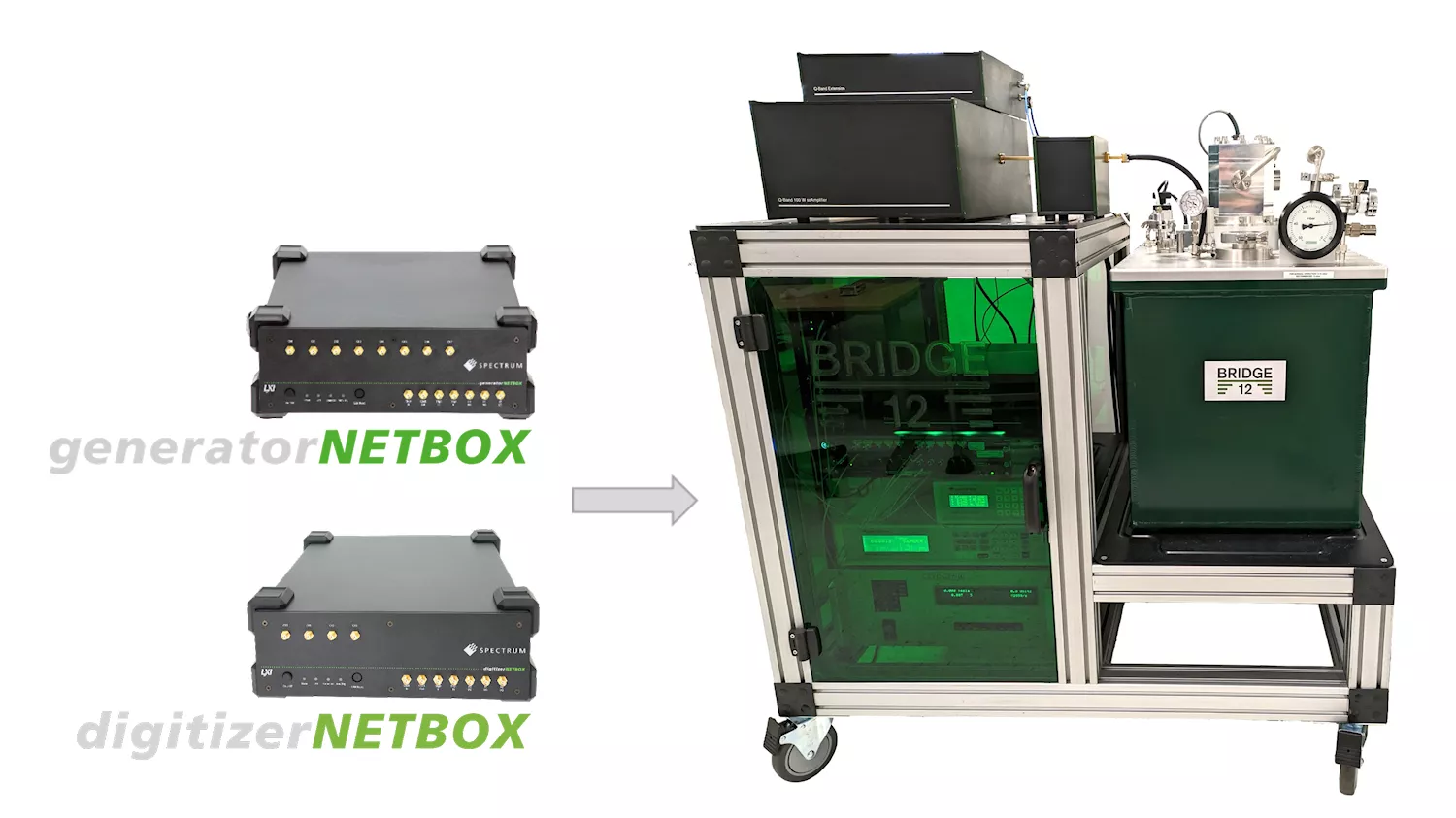
Next-generation EPR spectrometer at reduced costs, footprint and weight
Electron Paramagnetic Resonance (EPR) or Electron Spin Resonance (ESR) spectroscopy is similar to Nuclear Magnetic Resonance (NMR) spectroscopy but examines the nature of unpaired electrons instead of nuclei such as protons. It is used in the fields of chemistry, biology, material science, and physics to study the electronic structure of metal complexes or organic radicals. Traditionally, EPR spectroscopy requires massive electromagnets that can weigh over a ton and therefore are often located in basements. Bridge12, located near Boston in the USA, has launched a next generation EPR spectrometer that is about half the cost of current instruments and a tenth of the size and weight so that it can be located on any floor of a building. At the heart of the system is a pair of Spectrum Instrumentation cards – an Arbitrary Waveform Generator (AWG) to generate the pulses and a Digitizer to capture the returning signal.
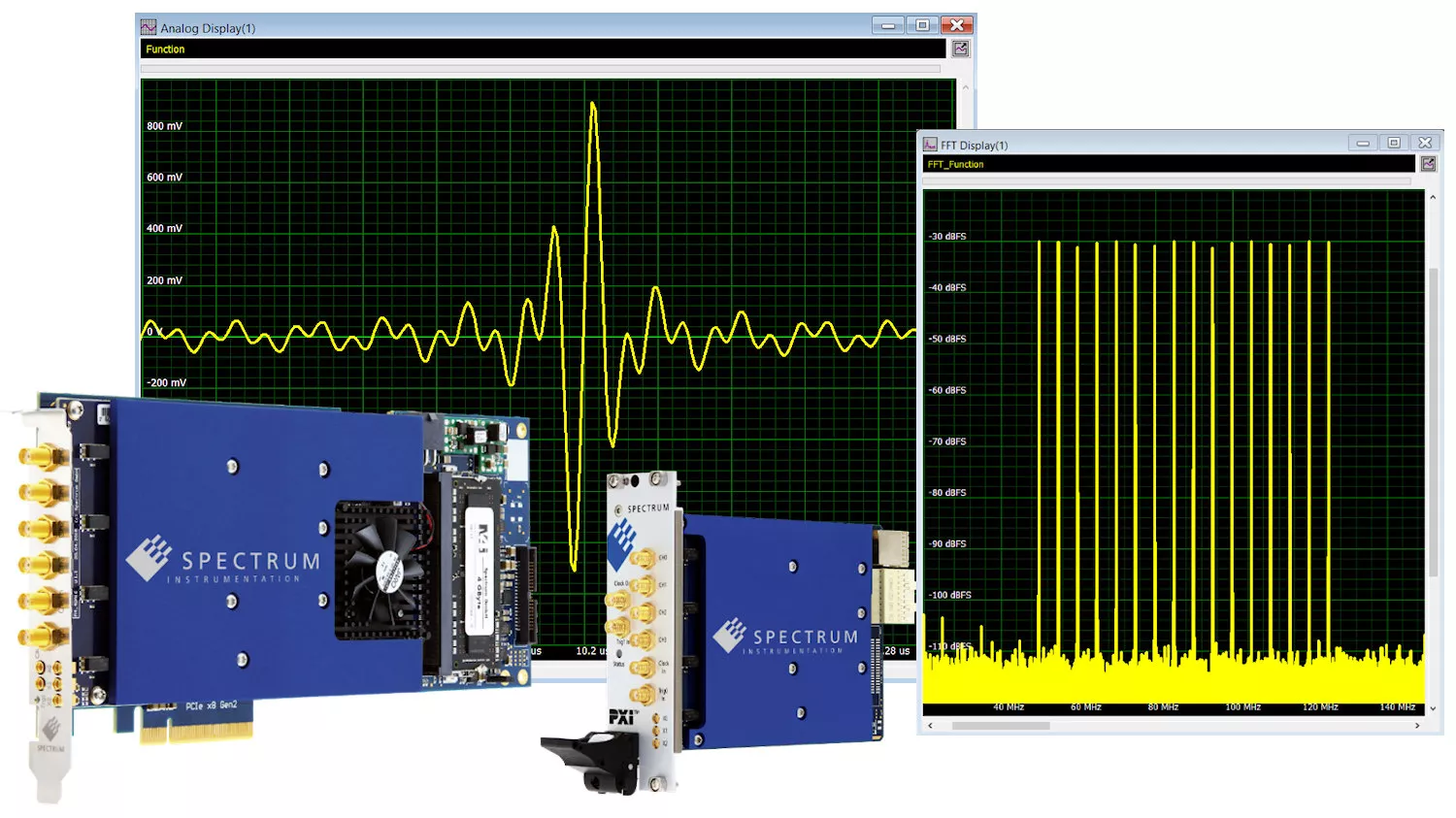
DDS Option for high-speed AWGs generates up to 20 sine waves
20 independent sine waves up to 400 MHz can be controlled on one generator channel. Spectrum Instrumentation has released a new firmware option for its range of versatile 16-bit Arbitrary Waveform Generators (AWGs) with sampling rates up to 1.25 GS/s and bandwidths up to 400 MHz. The new option allows users to define 23 DDS cores per AWG-card, that can be routed to the hardware output channels. Each DDS core (sine wave) can be programmed for frequency, amplitude, phase, frequency slope and amplitude slope. This enables, for example, the control of lasers through AODs and AOMs, as often used in quantum experiments, with just a few simple commands - instead of making large data array calculations. The DDS output can be synchronized with external trigger events or by a programmable timer with resolution of 6.4 ns.
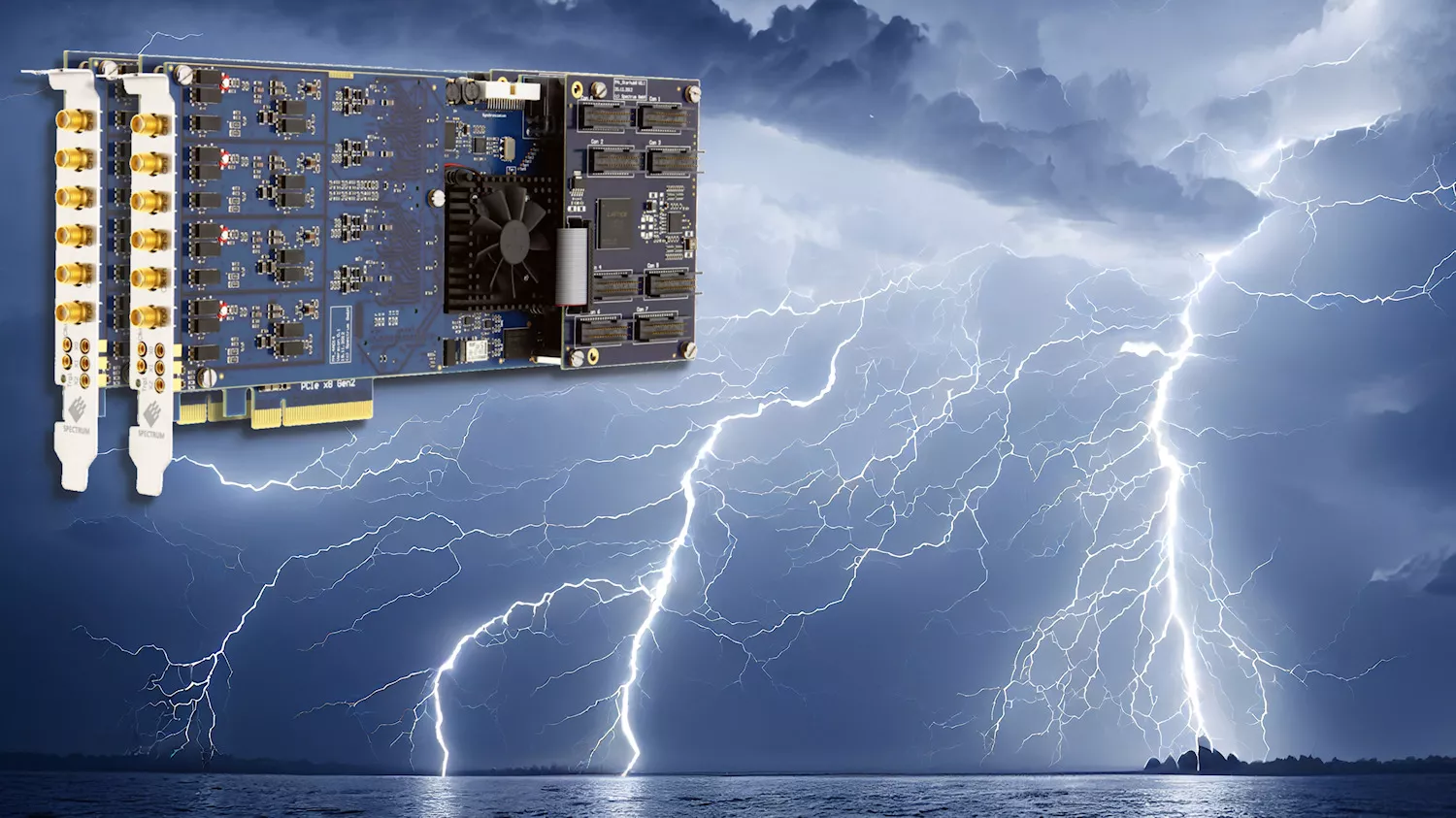
Research on Lightning with 8-channel Digitizer System
The causes of a lightning flash are complex and still unclear. At Duke University, North Carolina, USA, the team of Prof. Cummer tries to resolve these secrets. Lightning often occurs entirely in opaque clouds which makes it impossible to see what is going on. However, a flash also produces radio waves in the UHF and VHF frequency range that can be captured and studied. The challenge is that a huge amount of data needs to processed and recorded in the seconds before and during the lighting event. The scientists chose ADC cards by Spectrum Instrumentation to manage this challenge. The objective of the research is to understand how lightning forms, using this knowledge to better protect buildings from damage and also to understand if climate change will result in more or fewer lightning storms.
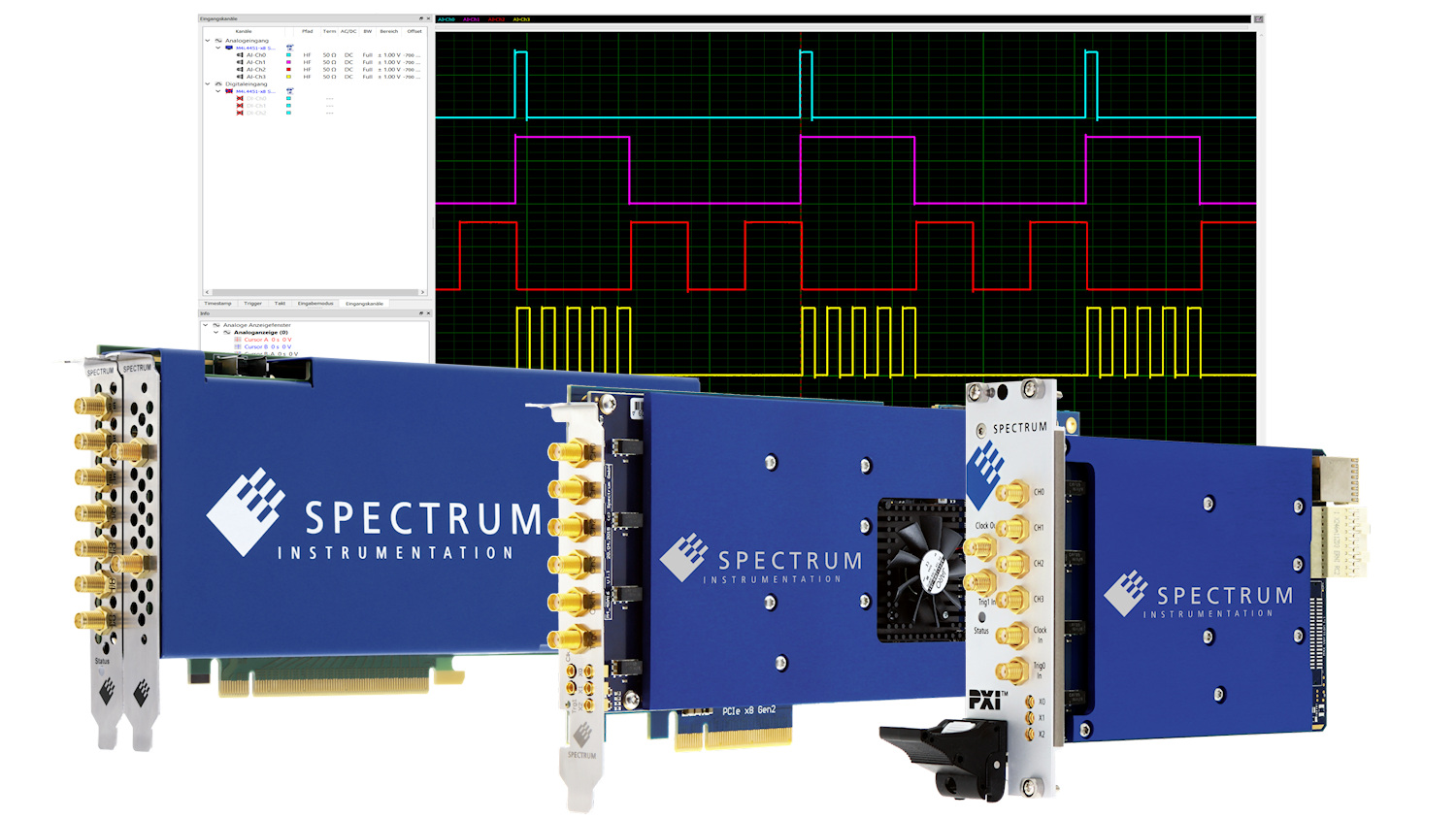
Ultrafast digitizers and AWGs get Digital Pulse Generator option
After the successful introduction of the Digital Pulse Generator (DPG) option for its medium speed products, Spectrum Instrumentation has now added the same feature to its ultrafast digitizers (with up to 10 GS/s speed) and Arbitrary Waveform Generators. Available for the entire product line, the low-cost option adds three to four independent digital sources for generating pulses and pulse streams. This new capability makes them ideal for a wide variety of automated test and measurement applications. For example, the DPG option can be added to 200+ products so that they can produce the stimulus and trigger signals needed for machine or experiment control in systems deploying AI, robotics and mechatronics, for closed-loop testing, or even when assessing electronic circuits, components and sensors.
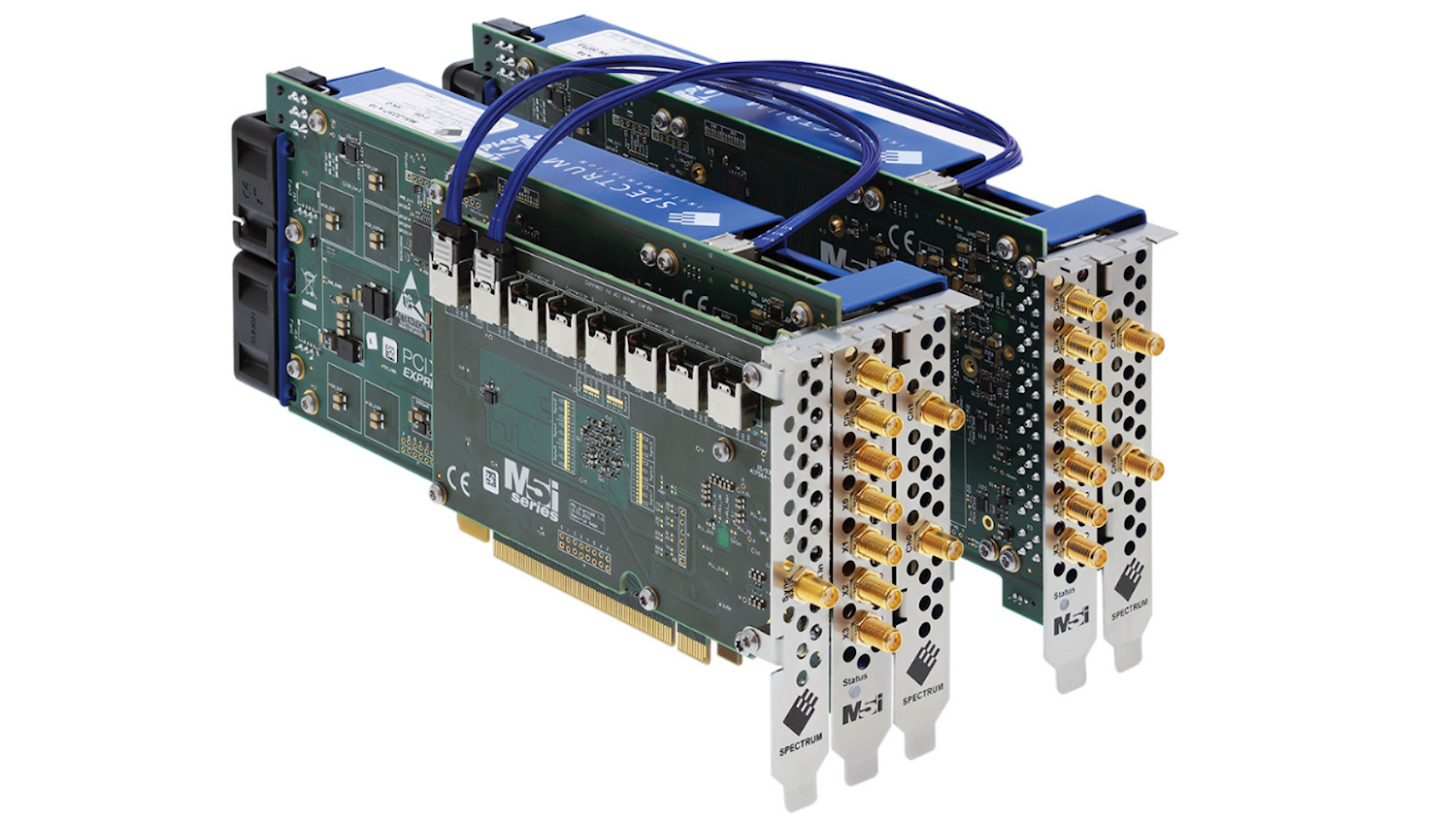
Create GHz-speed digitizer systems with up to 16 channels
Multi-channel data acquisition made easy - at sampling speeds up to 10 GS/s: A new option from Spectrum Instrumentation offers a user-friendly way to create multi-channel data acquisition systems with ultrafast sampling speeds up to 10 GS/s. Called Star-Hub, the option allows up to 8 of the company’s flagship PCIe digitizers (M5i.33xx series) to be connected together. Individual cards then share common clock and trigger signals, which ensures there is minimal phase delay and timing skew between all the channels. The Star-Hub option is installed by mounting a single piggyback module onto any of the M5i series cards in the multi-channel system. Using accurately matched and shielded coax cabling, the board then distributes the clock to each module and precisely synchronizes the trigger event with the system clock.
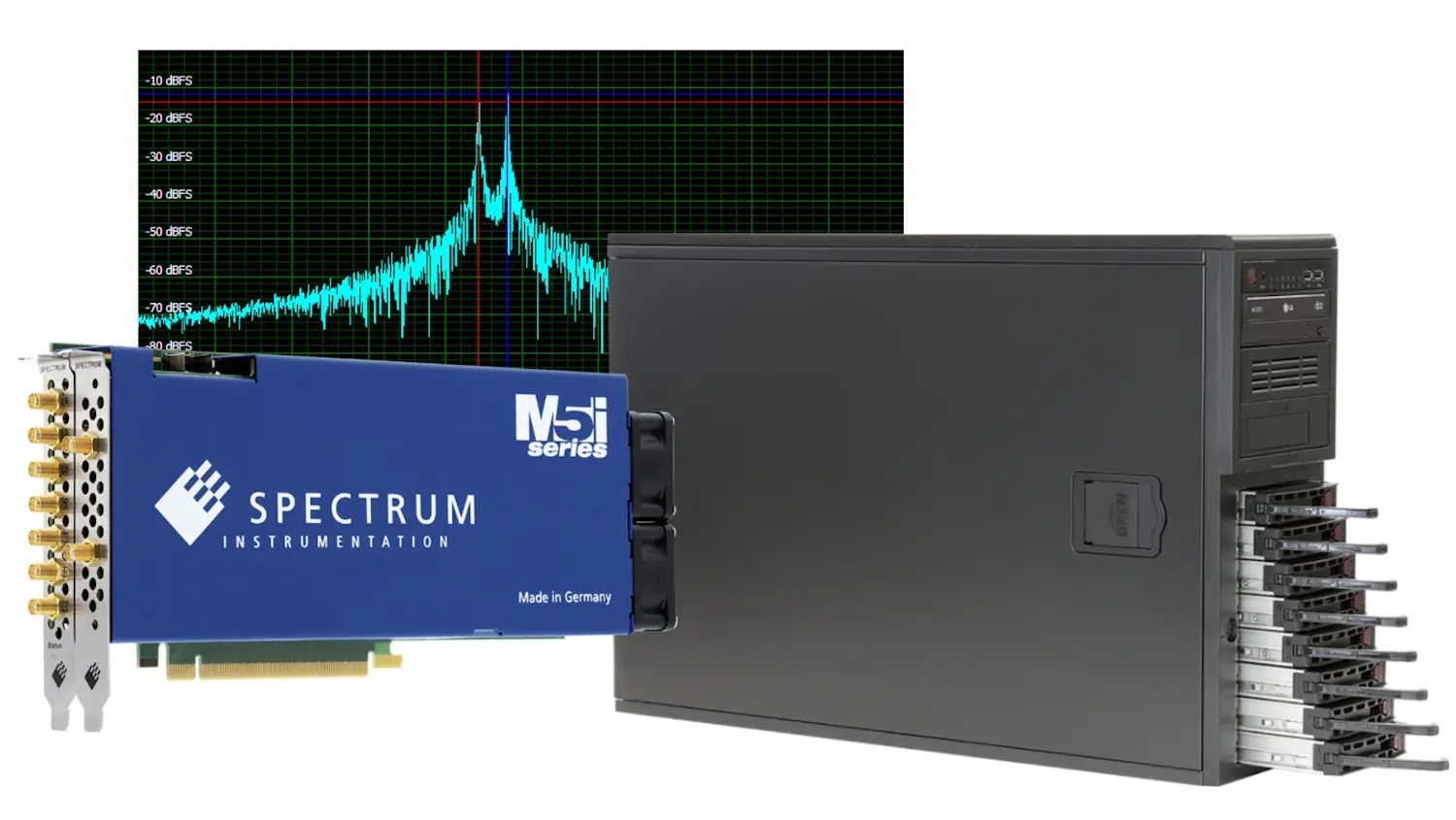
Digitizers deliver endless data streaming with 10 GS/s
COTS solutions store over 6 hours of data and perform continuous signal processing: Setting a new standard for data acquisition, Spectrum Instrumentation has added a new streaming mode to its flagship M5i.33xx digitizer series. The mode allows these ultrafast ADC cards to continuously acquire, stream and analyse data at a maximum sampling rate of 10 GS/s. The new capability enables the digitizers to be used with COTS (Commercial Off-The-Shelf) PC technology, such as GPUs for endless signal processing, and SSD arrays to create streaming systems that can record for hours on end.
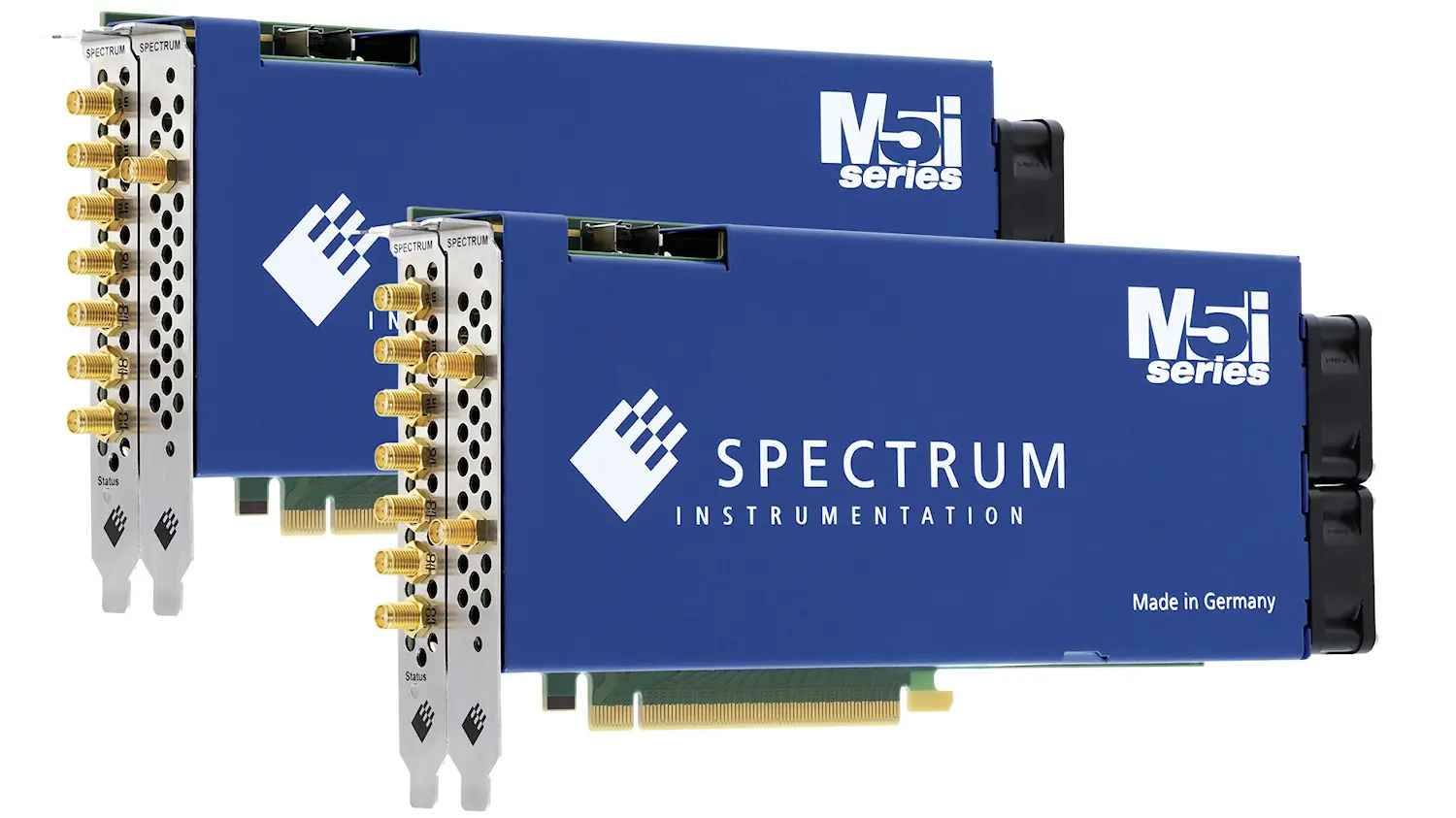
New digitizer cards deliver 4.7 GHz signal acquisition and analysis
New flagship ADC cards by Spectrum Instrumentation combine 10 GS/s sampling, 12-bit resolution, 4.7 GHz bandwidth and 12.8 GB/s data streaming
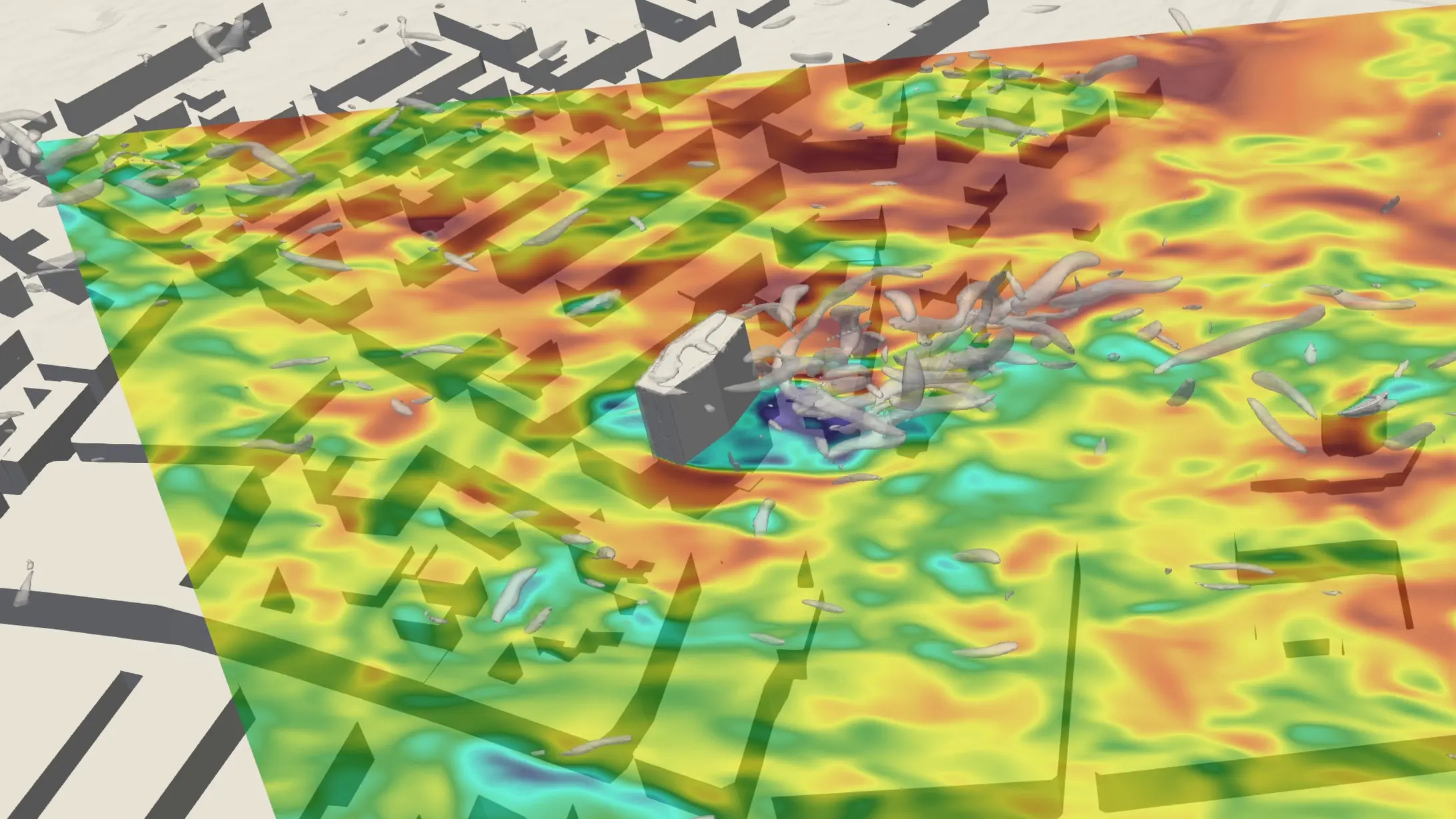
Revolutionary 3D wind turbulence simulation with real world data from LIDAR system
A common way of designing a new large building is to make a scale model and test it in a wind tunnel. This has been a recognised test for over 50 years but it is known to underestimate the peak loads, so correction factors are applied to provide a safety margin. Another drawback is that the wind just comes from one direction at a time whereas in the real world, gusts and the large eddies can fluctuate from many different directions at once. A Danish company, Vind-Vind, is developing a new turbulence model to capture the effects of wind on a building in natural conditions. This modelling uses real world data to enhance its accuracy, gathered with a LIDAR system using 10 ns pulses. Particles in the air reflect the laser, the changes in the returned light due to the Doppler effect are analysed using the latest flagship product of Spectrum Instrumentation, the ultrafast M5i.3321-x16 digitizer card.
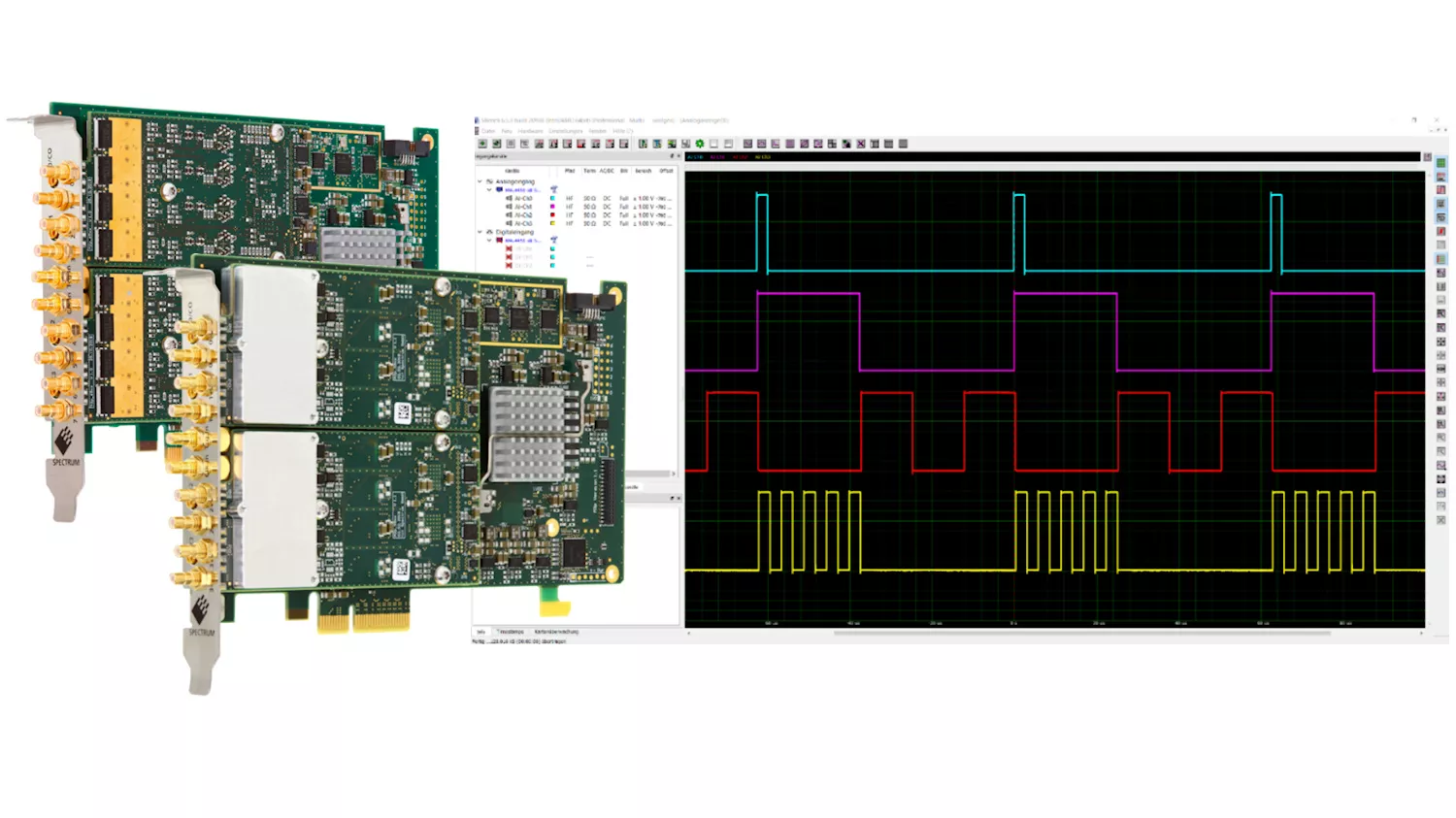
Digital Pulse Generator capability for Digitizers and AWGs
A Digital Pulse Generator (DPG) option has been released for Spectrum Instrumentation’s line-up of high resolution, medium speed, Digitizer and Arbitrary Waveform Generator (AWG) products. The option allows the units to produce digital pulses, and pulse streams, on up to four front panel Multi-Purpose I/O connectors; while simultaneously performing their regular tasks of acquiring, or generating, analog signals and waveforms. The new feature is ideal for a variety of automated test and measurement applications, including experiment control, AI and robotics, ATE, stimulus-response testing, system and machine control, component or sensor testing and more.
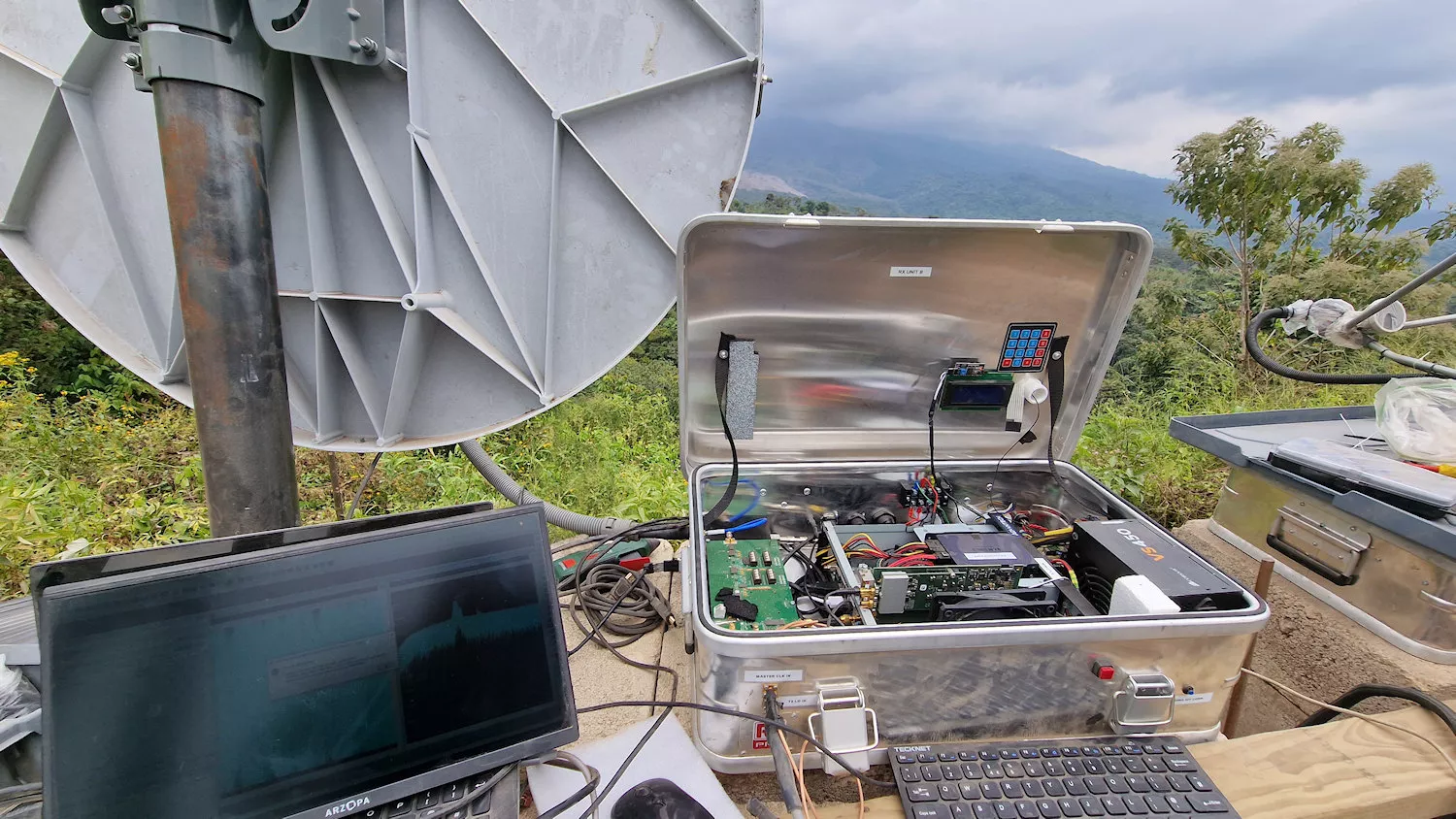
Early warning system for dangerous volcanos with ADC card by Spectrum
Guatemala in Central America has three constantly active volcanos, all of which have villages near them so it is vitally important to have an early warning system for eruptions to save lives. Such systems already exist but these specific volcanos produce flows of Pyroclastic Density Current (PDC) instead of lava. The extremely dangerous PDC clouds consist of gas, rock and ash, traveling at speeds of up to 600 km/h with a heat of up to 800°C. It is therefore vital to have as much warning as possible for evacuations. A team from University College London (UCL), led by Dr Amin Amiri, is studying the PDCs and developing a radar-based early warning system with a very high level of sensitivity. The core part is a PCIe digitizer card by Spectrum Instrumentation, the model M2p.5921-x4. It is so sensitive that it can detect tiny movements at a distance of six kilometers, which is the distance that the equipment is set up from the slope of the volcano.
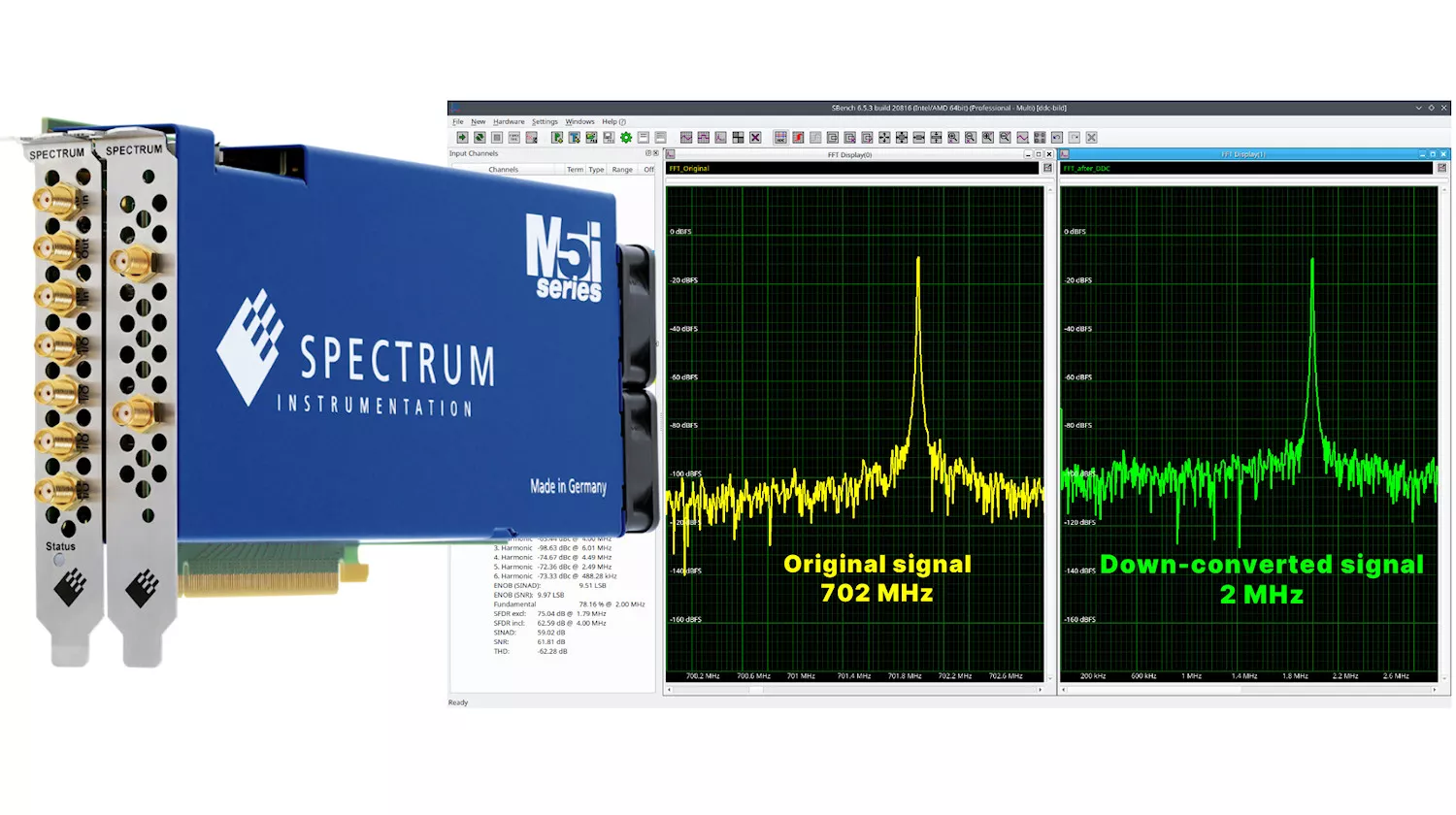
Digitizers now offer continuous Digital Down Conversion via GPU
Spectrum Instrumentation’s complete line of PCIe digitizer cards can now perform Digital Down Conversion (DDC) thanks to a low-cost option that uses an external GPU-card for continuous “on-the-fly” processing. DDC is a powerful technique that is commonly used in a wide range of communication systems, like digital radio, radar, mobile telephony, space or satellite communications. In the DDC process, RF or Microwave signals are converted to baseband, which contains the signal of interest. The conversion dramatically reduces the resultant data set while also improving signal quality and measurement accuracy. Spectrum Instrumentation has 48 different PCIe-based digitizers (with sampling speeds from 5 MS/s to 10 GS/s) that can run the new DDC function, so customers can select the “Perfect-Fit” model for their application.
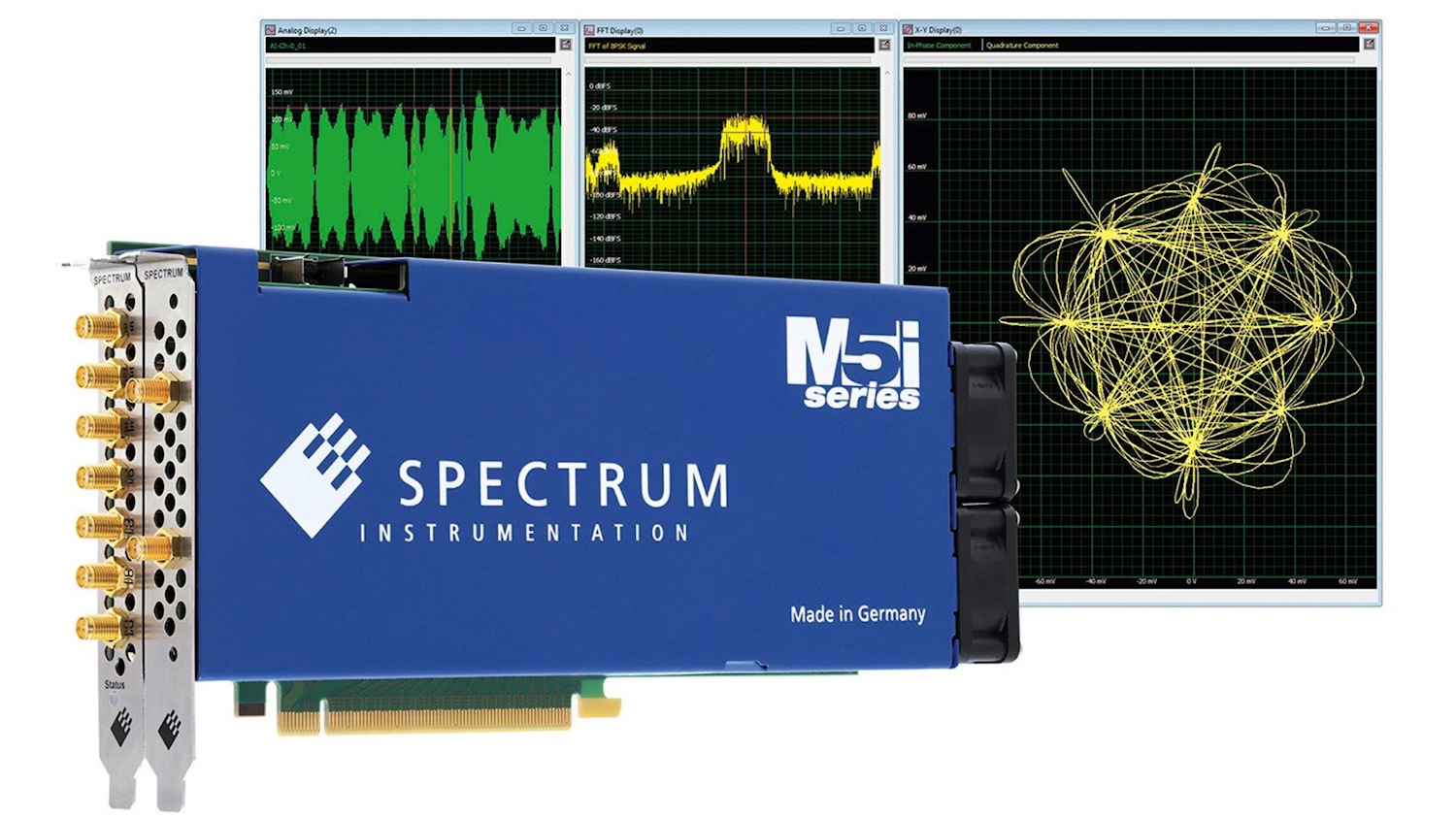
New PCIe digitizers combine ultrafast speed, high resolution and market-leading streaming
The addition of two new PCIe Digitizer cards from Spectrum Instrumentation extends the company’s flagship M5i series to deliver optimal GHz signal acquisition and analysis capabilities. The one and two channel cards offer a stunning combination of ultrafast 10 GS/s sampling speed, with 12-bit vertical resolution, and market-leading 12.8 GB/s data streaming (over the PCIe bus). To achieve the unbeatable streaming rate, they use 16 lane, Gen3, PCIe technology. This allows the acquired data to be sent directly to PC memory for storage, or to CPUs and GPUs for customized signal processing and analysis. The cards also feature front-end circuitry with over 3 GHz bandwidth and up to 16 GB (8 GSamples) of on-board memory. It all adds up to make these cards a powerful package for engineers and scientists dealing with today’s most challenging GHz-range electronic signals.
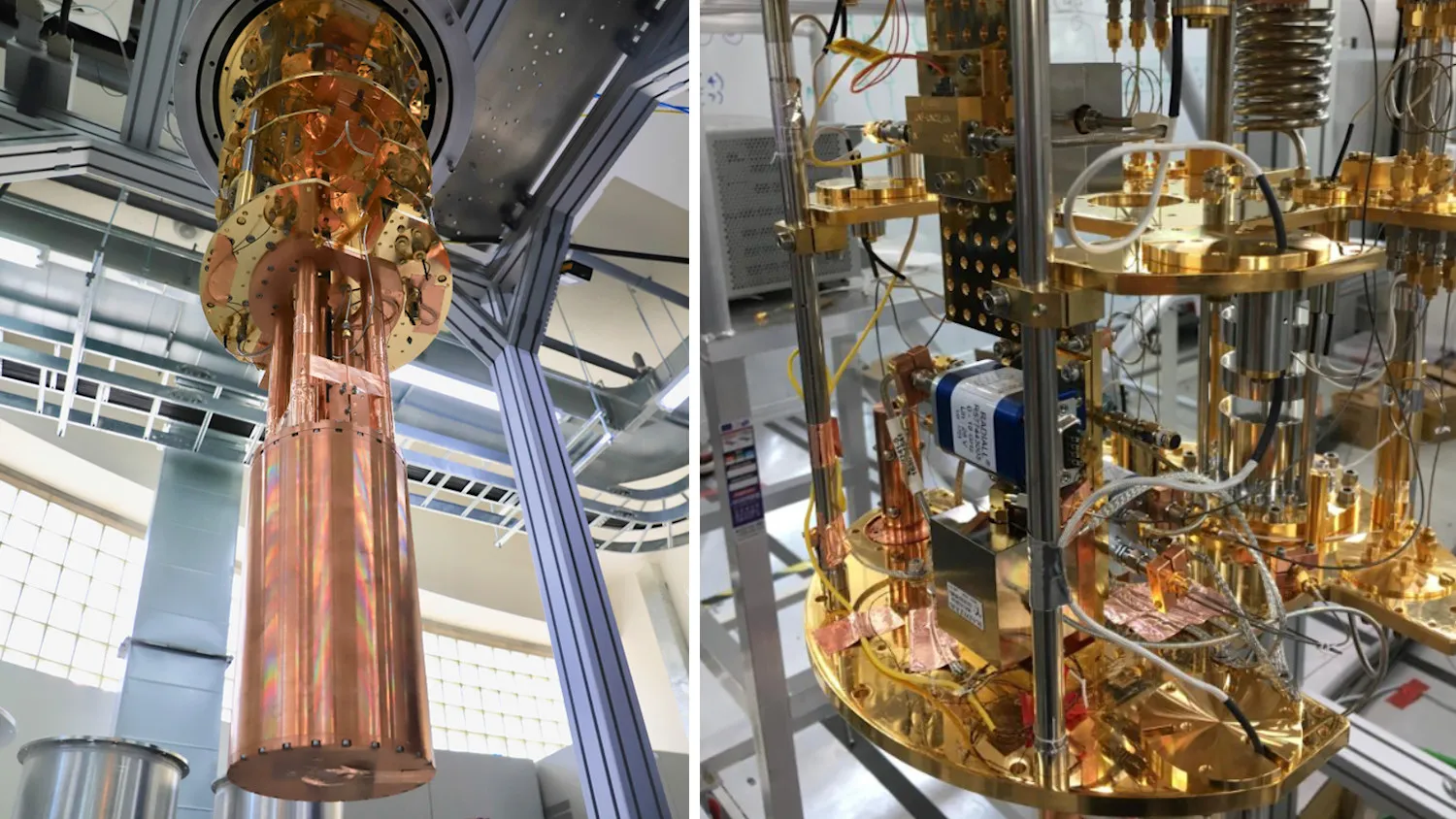
High-resolution digitizer helps in hunt for dark matter
To help explain the formation, evolution and behavior of large-scale structures in the universe such as galaxies, scientists have predicted the existence of dark matter. In fact, theory suggests that the universe may actually contain up to five times more dark matter than ordinary matter! While the question of what actually makes up dark matter remains unanswered, scientists have identified a number of candidate particles. Some of the more promising ones are axions that may be just a ten-trillionth of the mass of an electron. In South Korea, at the Institute for Basic Science (IBS), they have assembled a team of experts to study and try to find axions. A fast PCIe-digitizer by Spectrum Instrumentation was chosen for the latest and most advanced experiments.
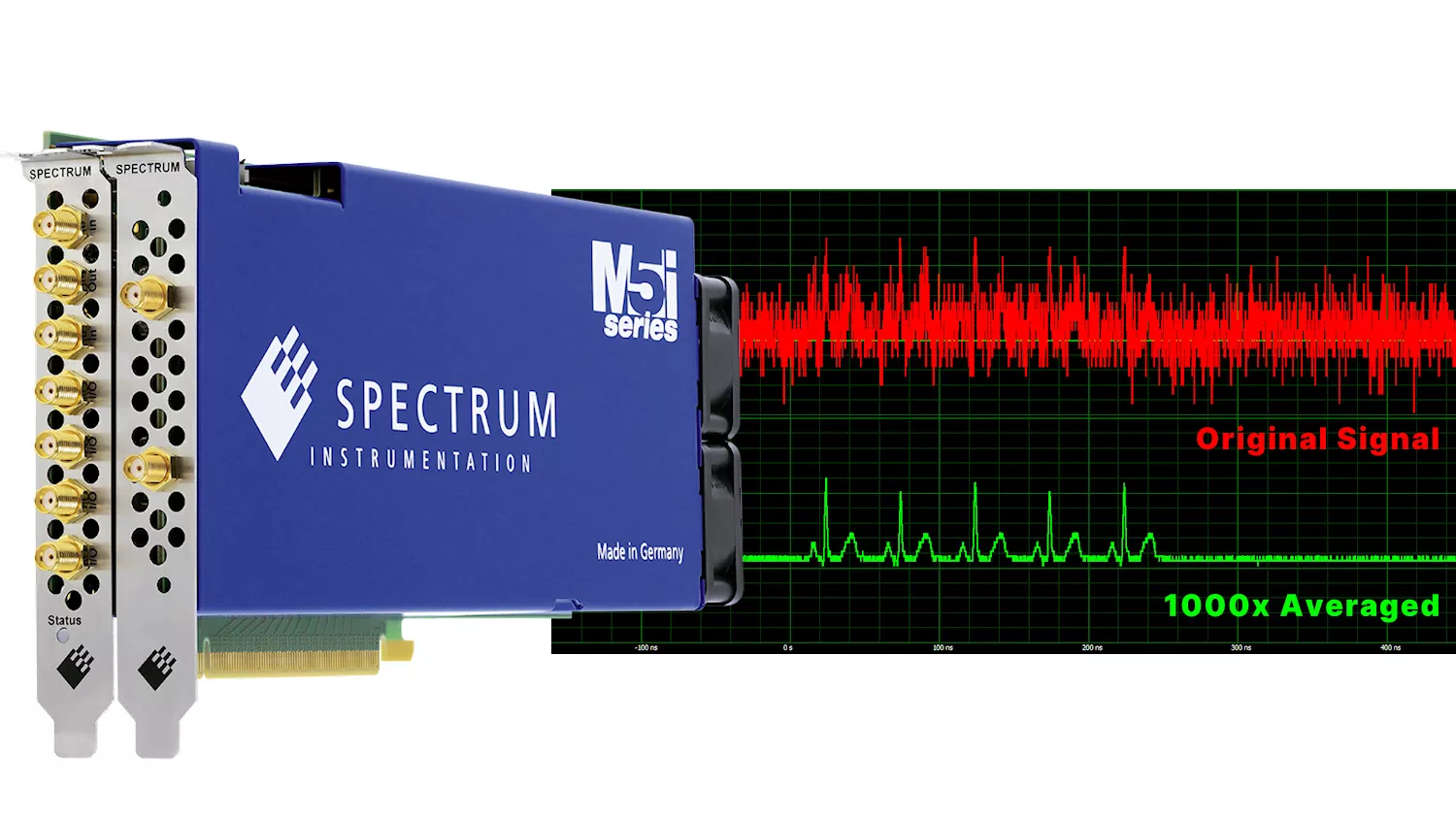
Record-breaking digitizers now offer advanced FPGA-based block averaging
A new firmware option has been created by Spectrum Instrumentation that allows the company’s high-speed M5i digitizer cards (figure 1) to perform on-board summation averaging. Averaging is a useful tool for reducing unwanted signal noise, while at the same time improving measurement resolution, dynamic range and signal-to-noise ratio (SNR). The new option enables the M5i digitizers to perform the averaging function by utilizing advanced, on-board, Field Programmable Gate Array (FPGA) technology. Doing this creates a unique offering. The M5i series digitizers deliver real-time sampling at rates up to 6.4 GS/s with 12-bit resolution and they can stream all the acquired data directly over the PCIe bus at a record breaking 12.8 GB/s. This outstanding capability is then further enhanced by the new firmware option, which permits acquired signals to be averaged at an astonishing rate of 15 million events per second.
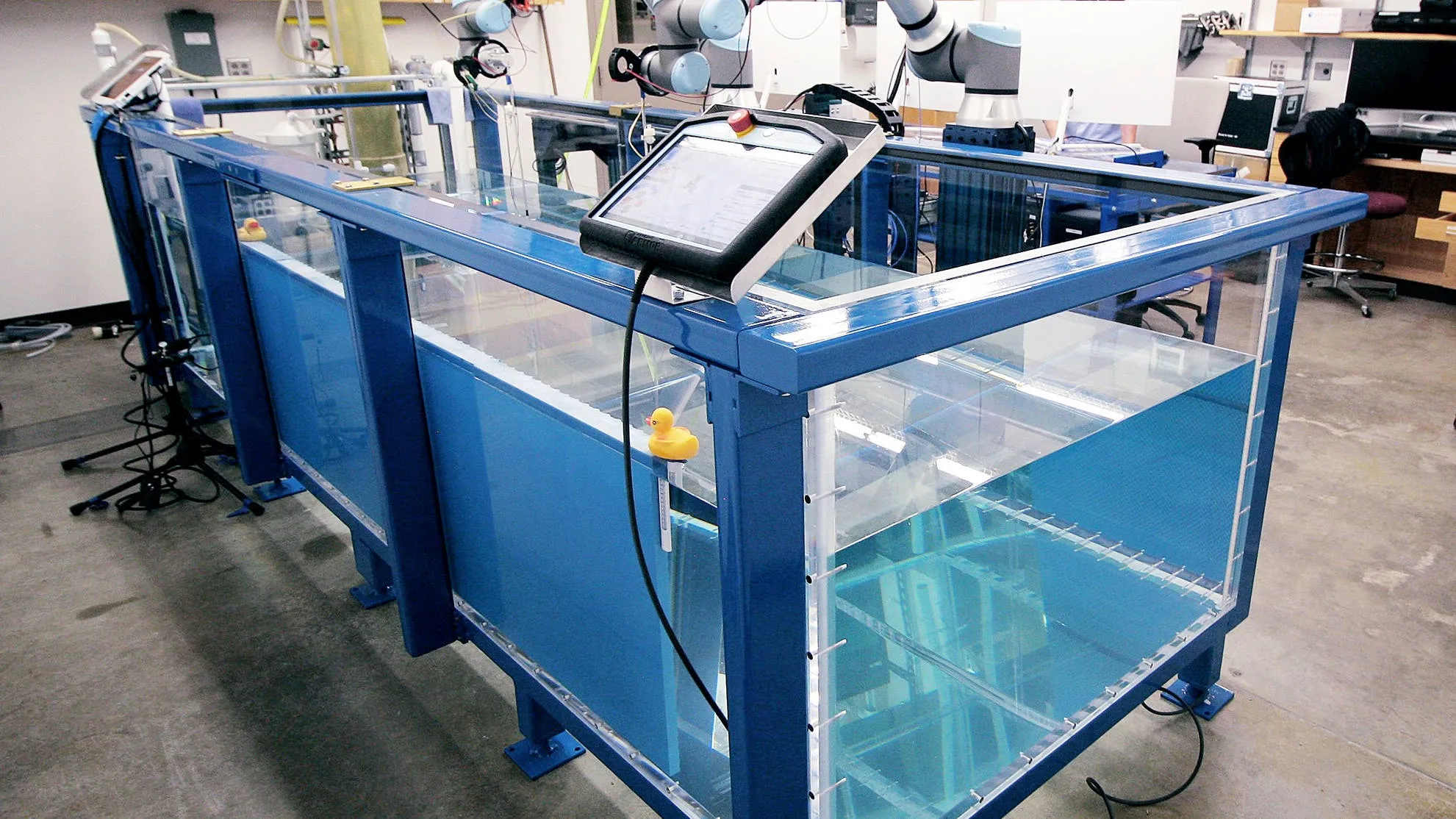
Sound waves studied in a simulated ocean with high-precision PCIe measurement cards
The Acoustics Research Group at the Department of Physics and Astronomy, Brigham Young University, Utah, USA has chosen Spectrum Instrumentation's leading-edge digitizers and signal generators to form the heart of its new underwater acoustics laboratory. The new lab is a big step forward in research on sound waves travelling through water as it effectively provides a miniaturized version of the ocean. Experiments are possible on sound wave's behaviour in different water layers and their reflections from the ocean's most diverse ground materials such as rocks, sand or mud. The miniaturization means that the highest precision is needed from the measurement equipment as the experimental results are scaled up afterwards to indicate what would happen in the real world.
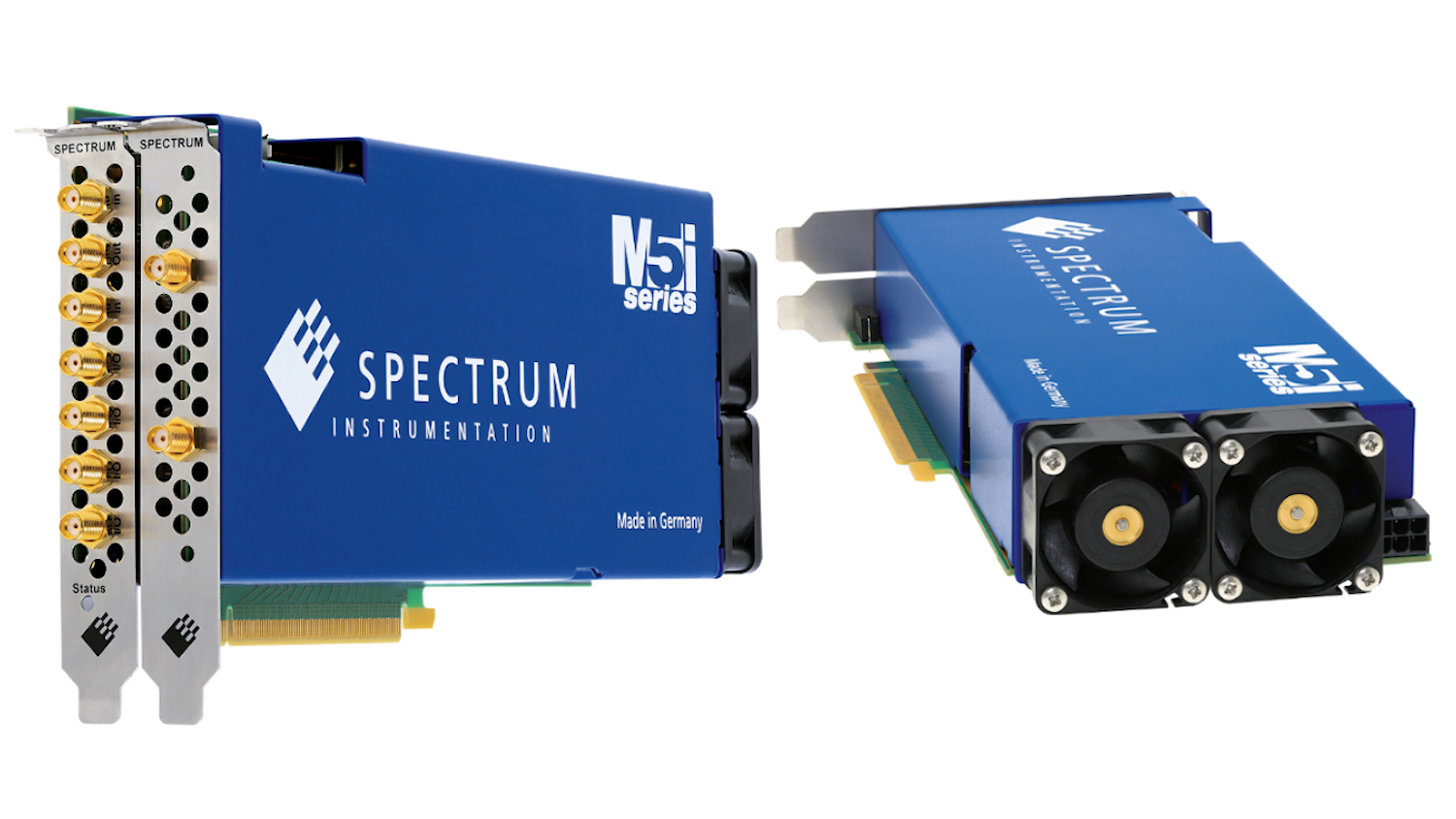
Record-breaking digitizers get next variant
The world's first digitizers to use the full 16 lane PCIe interface (Gen 3) for massive data streaming generated huge interest in the technical media this March. The cards can stream acquired data over the bus at a staggering 12.8 GB/s, which is a transfer rate nearly twice as fast as any other PCIe digitizer currently on the market. Now Spectrum Instrumentation has released a cost-effective variant, specifically designed for dual-channel applications.
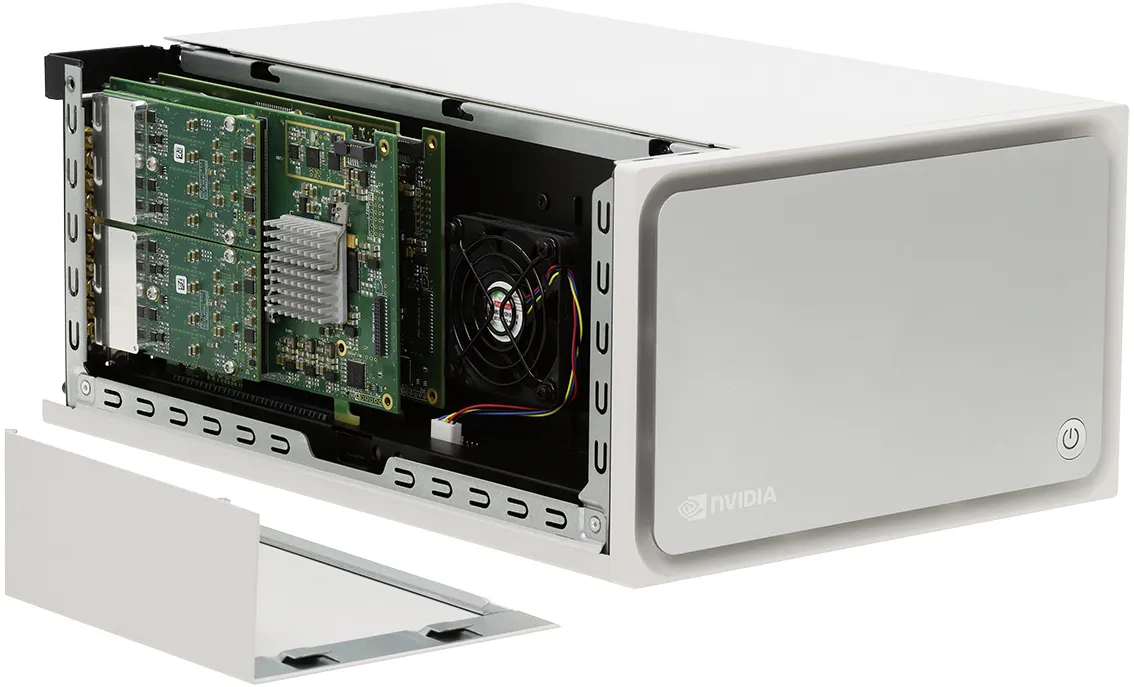
Spectrum Instrumentation supports NVIDIA Clara
Spectrum Instrumentation now offers driver support for the NVIDIA Clara AGX™, a universal computing architecture for the next generation of AI medical instruments. The new drivers enable scientists and developers to choose from 64 different Spectrum Digitizers, Arbitrary Waveform Generators (AWGs) and Digital I/O cards, letting the NVIDIA Clara AGX kit perform high-speed electronic signal acquisition and generation for analog and digital signals. With the big variety of cards to choose from, users can exactly match their electronic signal requirements.
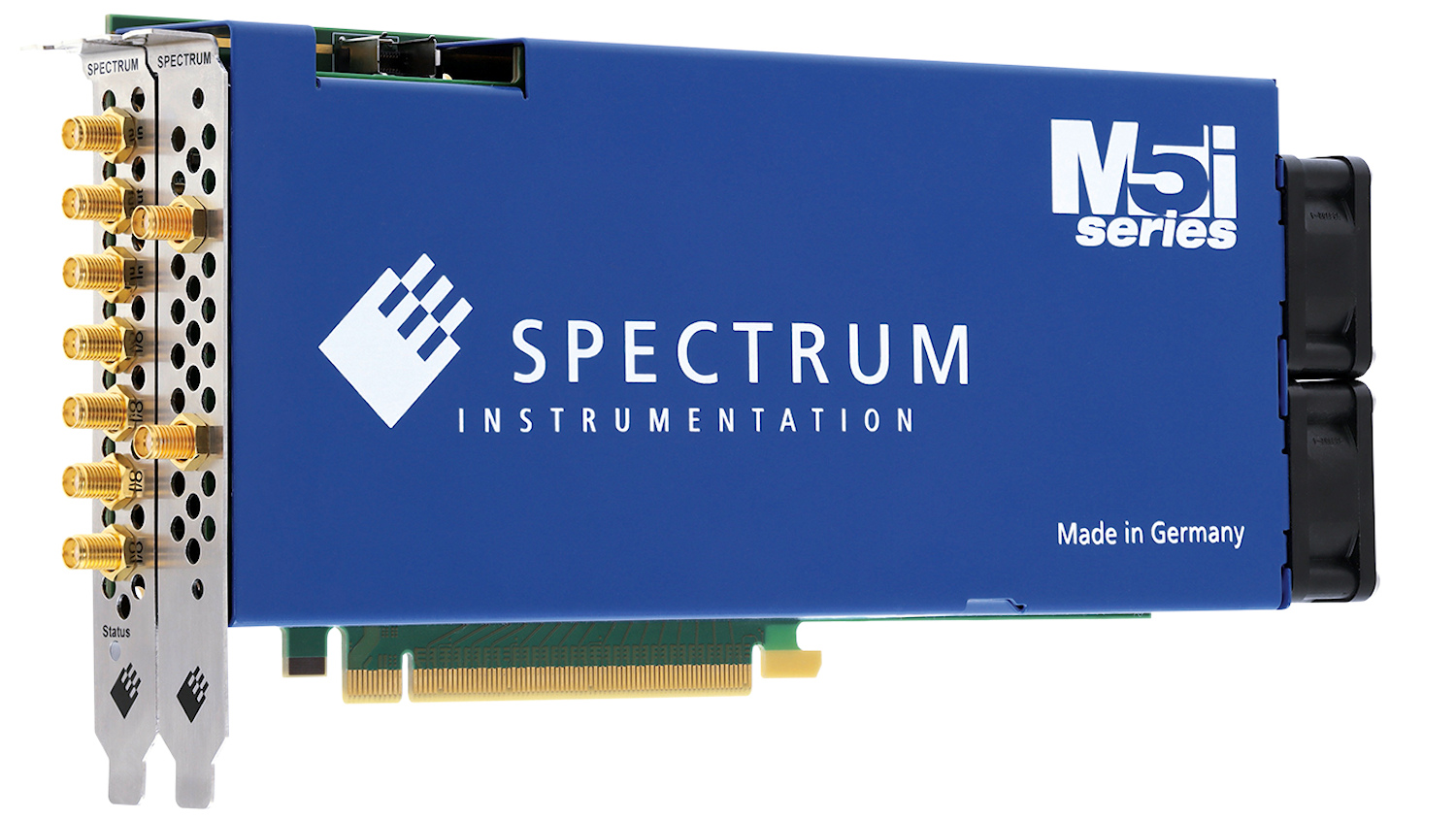
Next generation Digitizer cards smash transfer speed barrier
The release of two new PCIe Digitizer cards from Spectrum Instrumentation brings next generation performance to PC-based instrumentation. Using 16-lane, Gen 3, PCIe technology, the cards are capable of streaming acquired data over the bus at a staggering 12.8 GB/s. That is nearly twice as fast as any other PCIe Digitizer currently on the market.

Smithsonian Institute creates groundbreaking microwave spectrometer for research of interstellar materials
Microwave spectroscopy is a very powerful tool for discovering molecular structures and operates at very low temperatures near absolute zero (1 to 5 Kelvin). The spectrometers generally either operate with high sensitivity over a very narrow bandwidth or a wide frequency with reduced sensitivity. Researchers at the Harvard Smithsonian Center for Astrophysics have used a Spectrum Instrumentation digitizer card to create a next generation molecular spectrometer with both high resolution and high sensitivity that is capable of capturing sample data substantially faster.
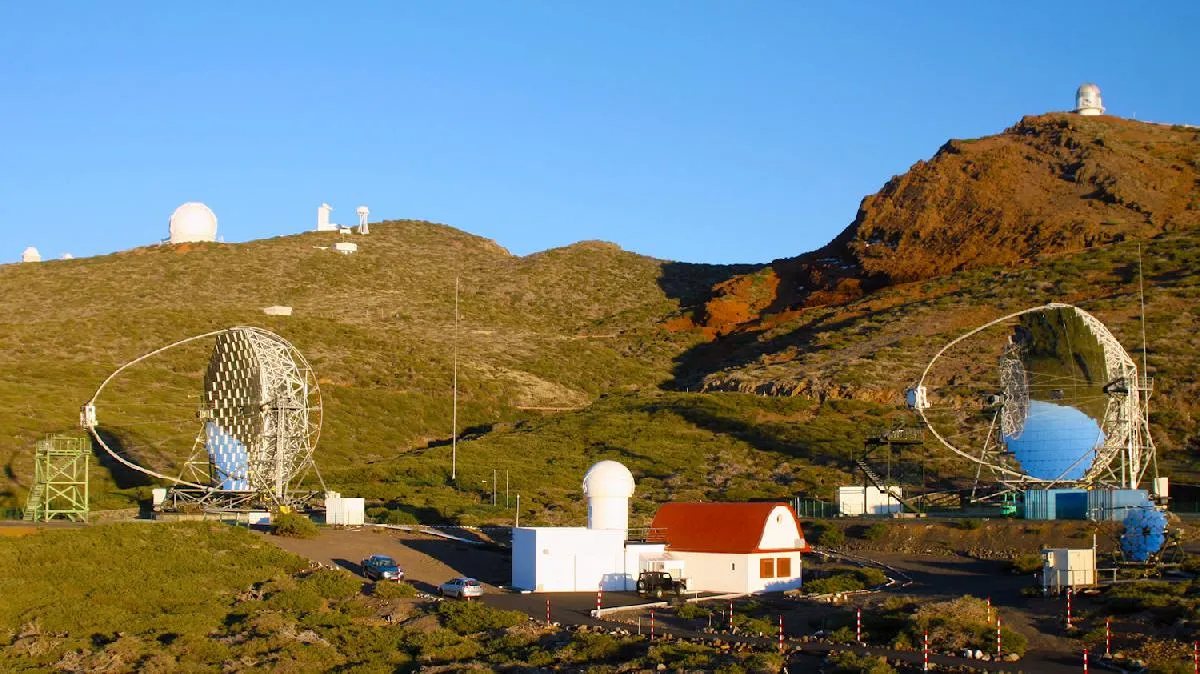
Max Planck Institute uses SPECTRUM´s Digitizer cards to measure diameters of distant stars
The MAGIC telescopes on the Canary Island of La Palma were built to observe cosmic objects that emit high-energy gamma rays, i.e. supernovae or black holes. Astronomers also use the twin telescope to measure the diameter of stars to investigate the processes throughout their life cycle.
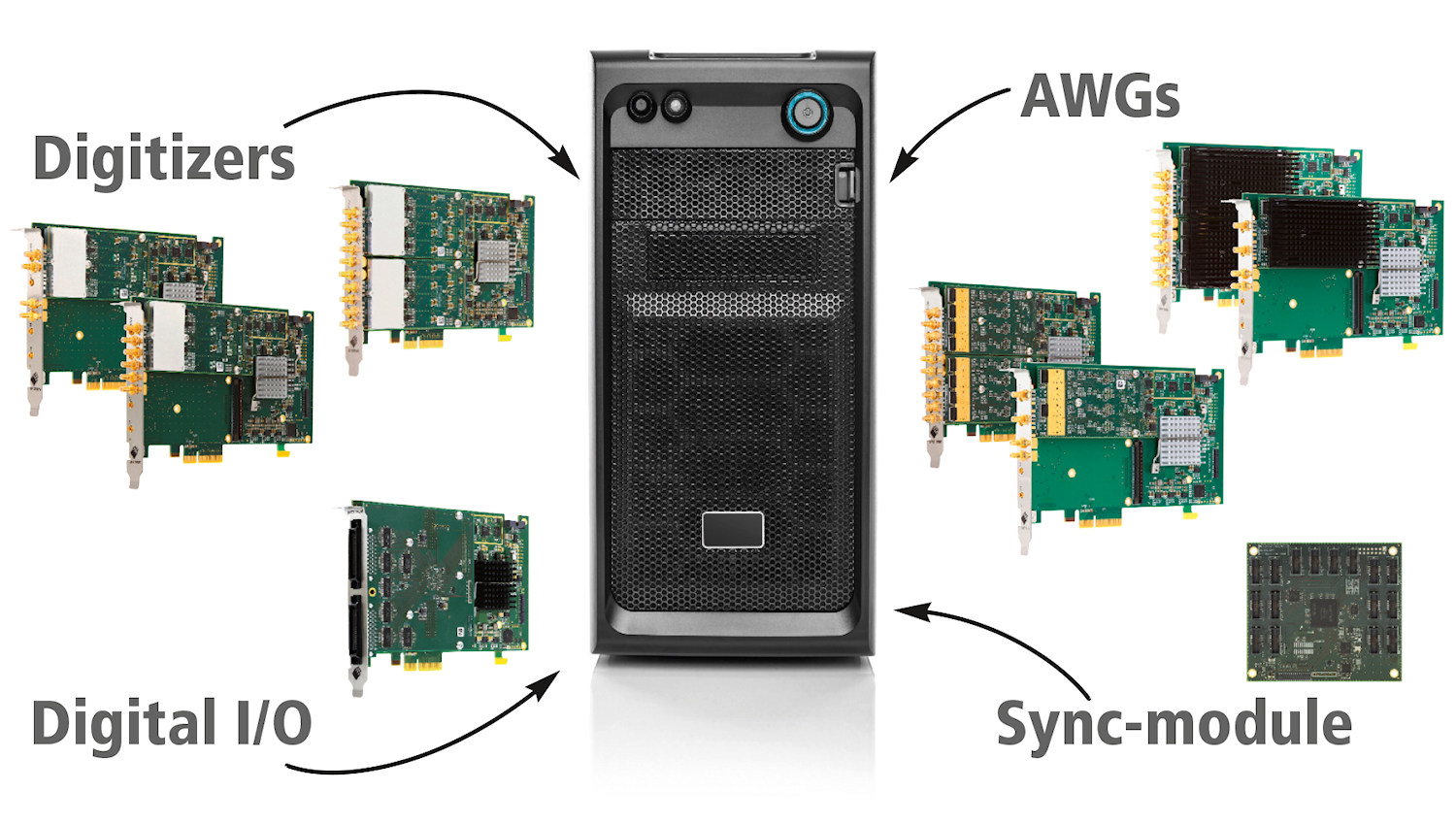
Easy creation of customized multi-channel Test & Measurement systems
The recent addition of a Digital I/O card means that Spectrum Instrumentation has now completed its M2p family of PCIe-cards. Together with the comprehensive, matching set of digitizers and Arbitrary Waveform Generators (AWGs), customers can now create economical, multi-channel, Test & Measurement systems to precisely meet their needs for signal acquisition and waveform generation in the speed range of up to 125 MSamples per second.
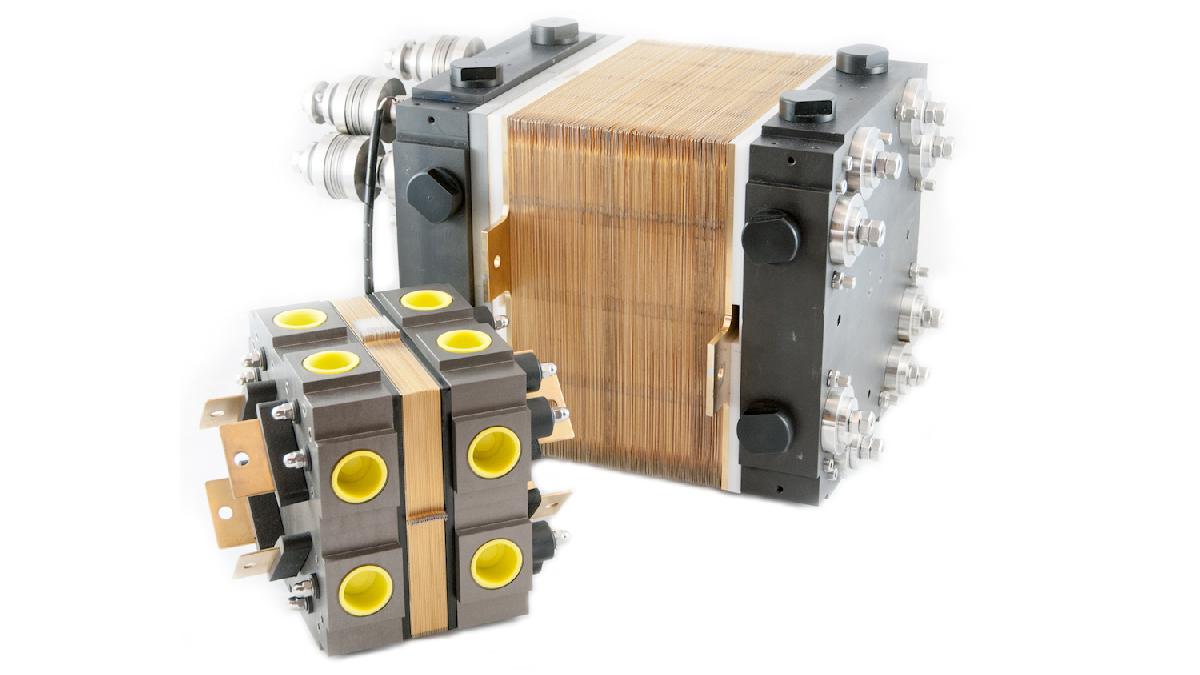
Digitizer cards by SPECTRUM improve the hydrogen fuel cell technology
Hydrogen fuel cells will play an important role in cutting carbon emissions especially for mobile applications such as automotive and heavy duty trucks and buses. Having water vapor as the only emission, the fuel is hydrogen that is abundant and can be made using renewable energy.
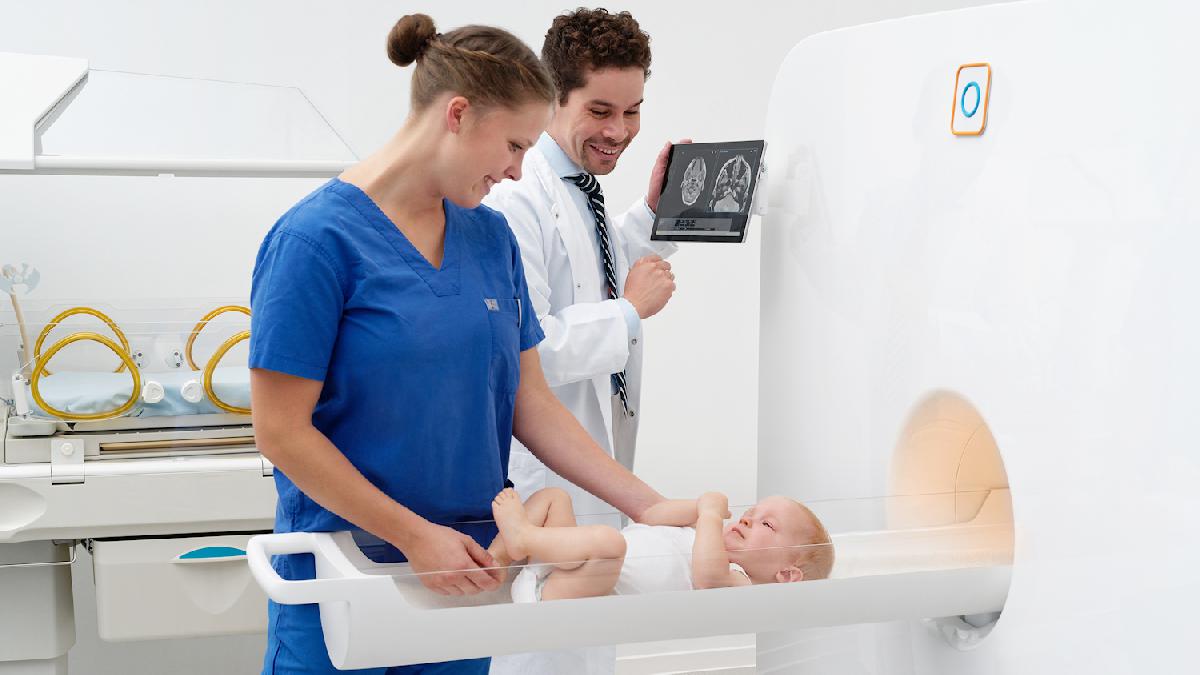
Shrunken MRI Scanner helps in saving lives of sick babies
MRI scanners are a key diagnostic tool but they are big, very heavy and need liquid helium to cool them. Neoscan Solutions invented an MRI scanner much smaller and lighter!
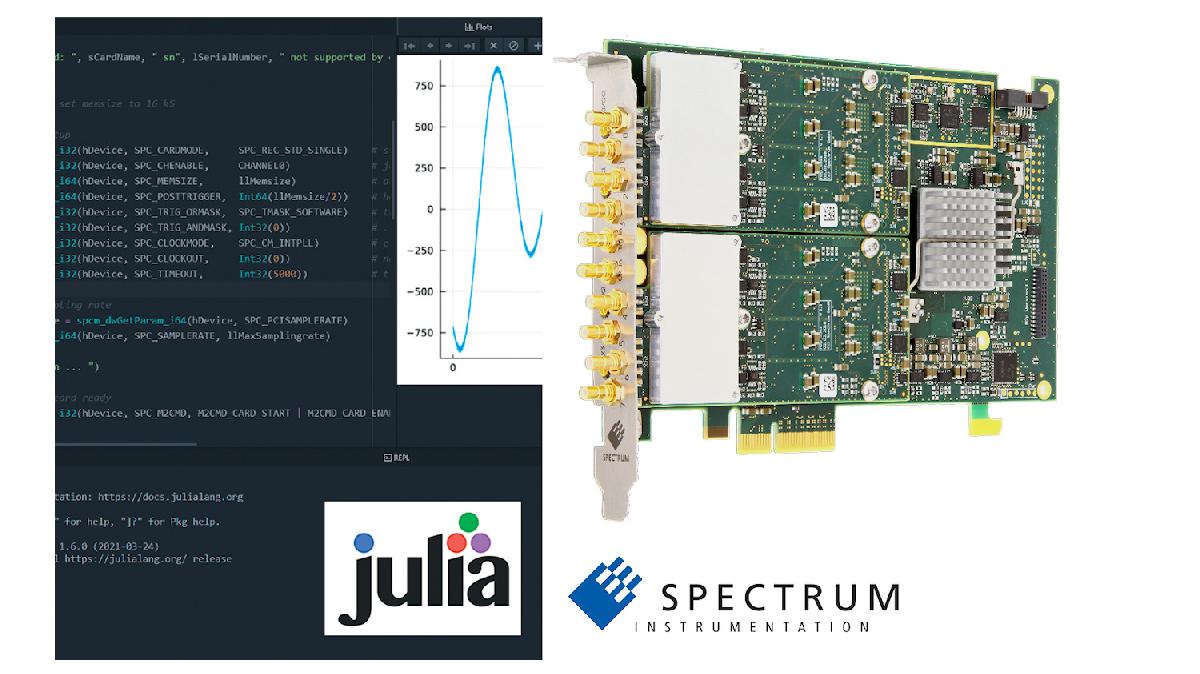
SPECTRUM Instrumentation pioneers “JULIA” SDK for high-performance applications
The fight against the Corona virus does not only take place in medical laboratories, but also in computing. Handling the huge amounts of data for vaccine development requires advanced tools: “Julia”, a relatively new software language, has surged in popularity.
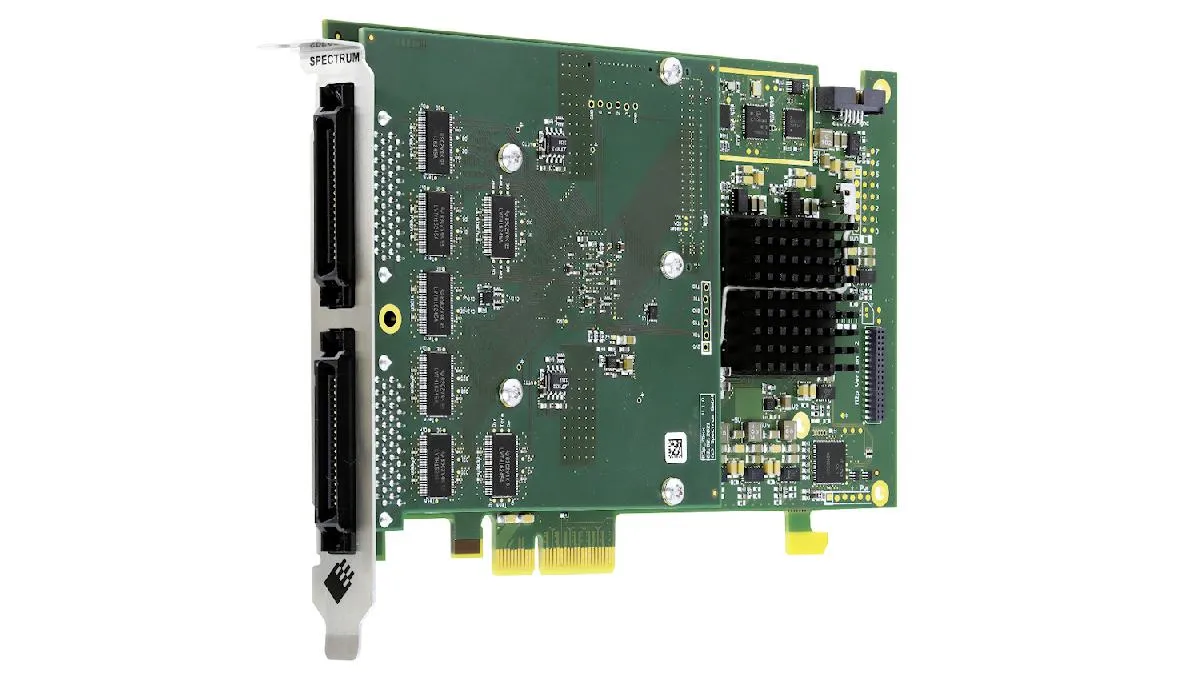
SPECTRUM'S versatile Digital I/O card shrinks size and costs
The release of a new Digital I/O card from Spectrum Instrumentation offers engineers and scientists a cost-effective way to generate and acquire fast digital signals. The model M2p.7515-x4 is a half-length PCIe card that measures just 168 x 107 mm (6.6 x 4.2 inches) in size.
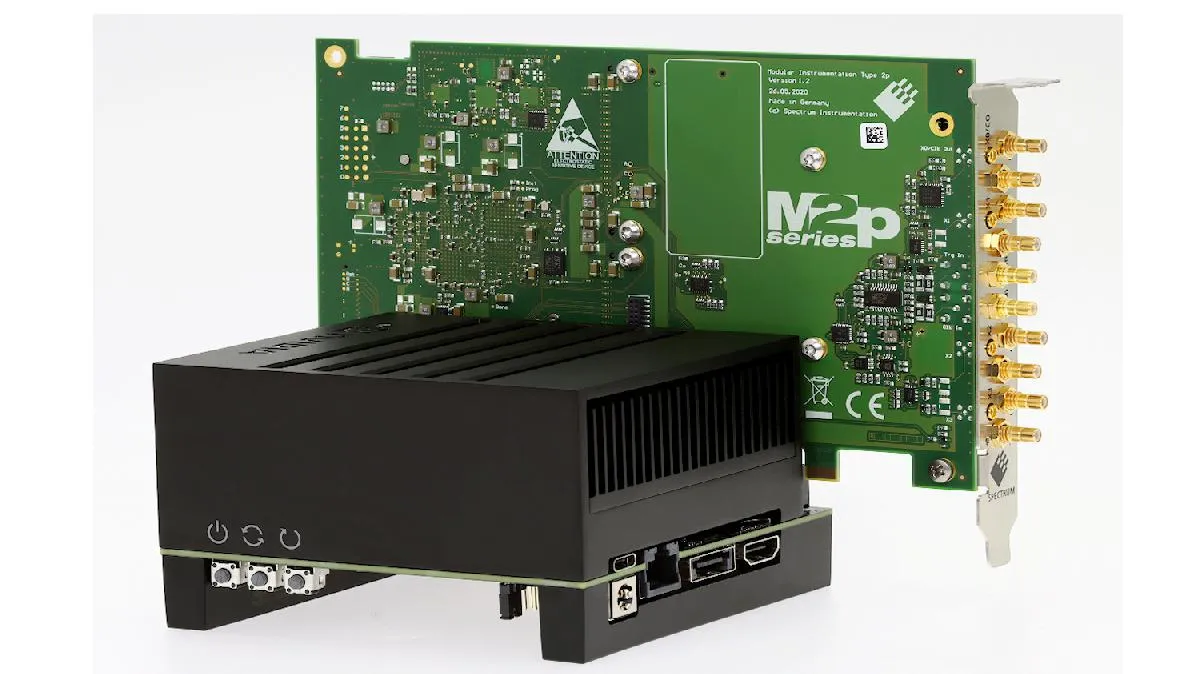
Digitizers and AWGs by SPECTRUM now support ARM-based NVIDIA JETSON
Following a number of requests from its customers, Spectrum Instrumentation now offers driver support for the NVIDIA Jetson, a series of embedded computing boards from NVIDIA.
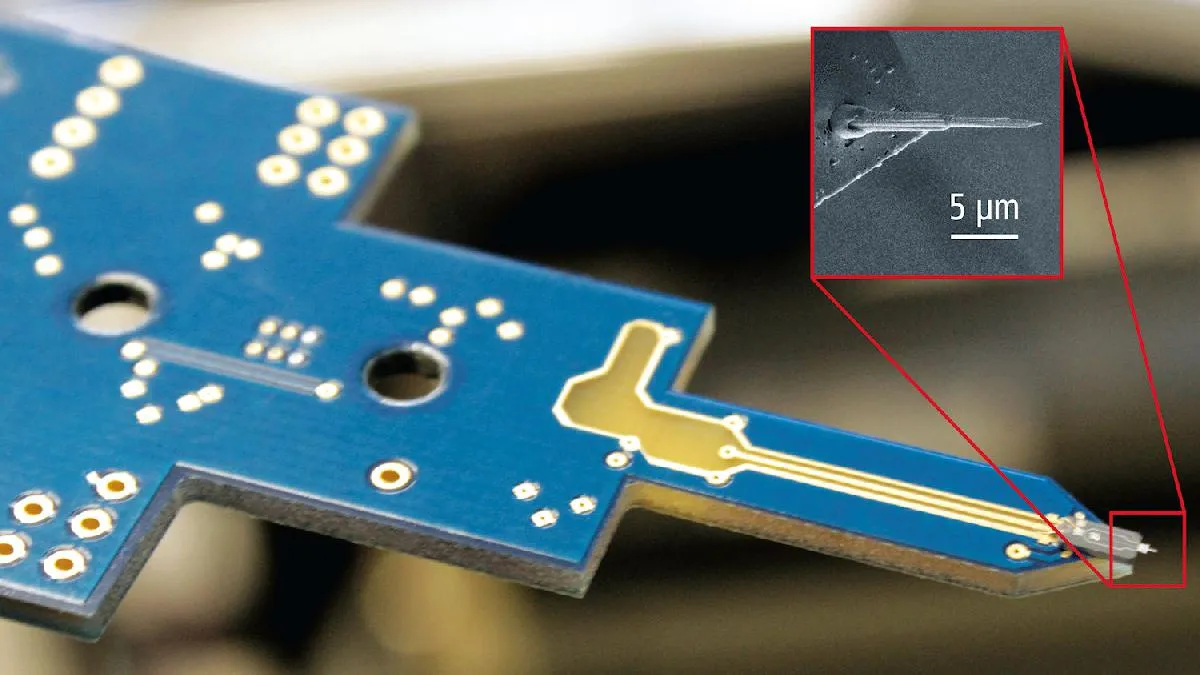
Scanning atoms with the tip of a needle
The Atomic Force Microscope (AFM) is an important tool in materials science and used for mechanical scanning of surfaces. The forces acting between the atoms of the surface and the tip of a nanoscopic needle are measured and calculated giving resolutions in the order of fractions of a nanometer.

SPECTRUM Instrumentation appoints new Managing Director
Spectrum Instrumentation GmbH, one of the world's leading companies for PC-based test & measurement, has announced that Carsten Gralla has joined its expanded executive team as Managing Director. Carsten holds a degree in mechanical engineering and is seen as a major asset to the business.
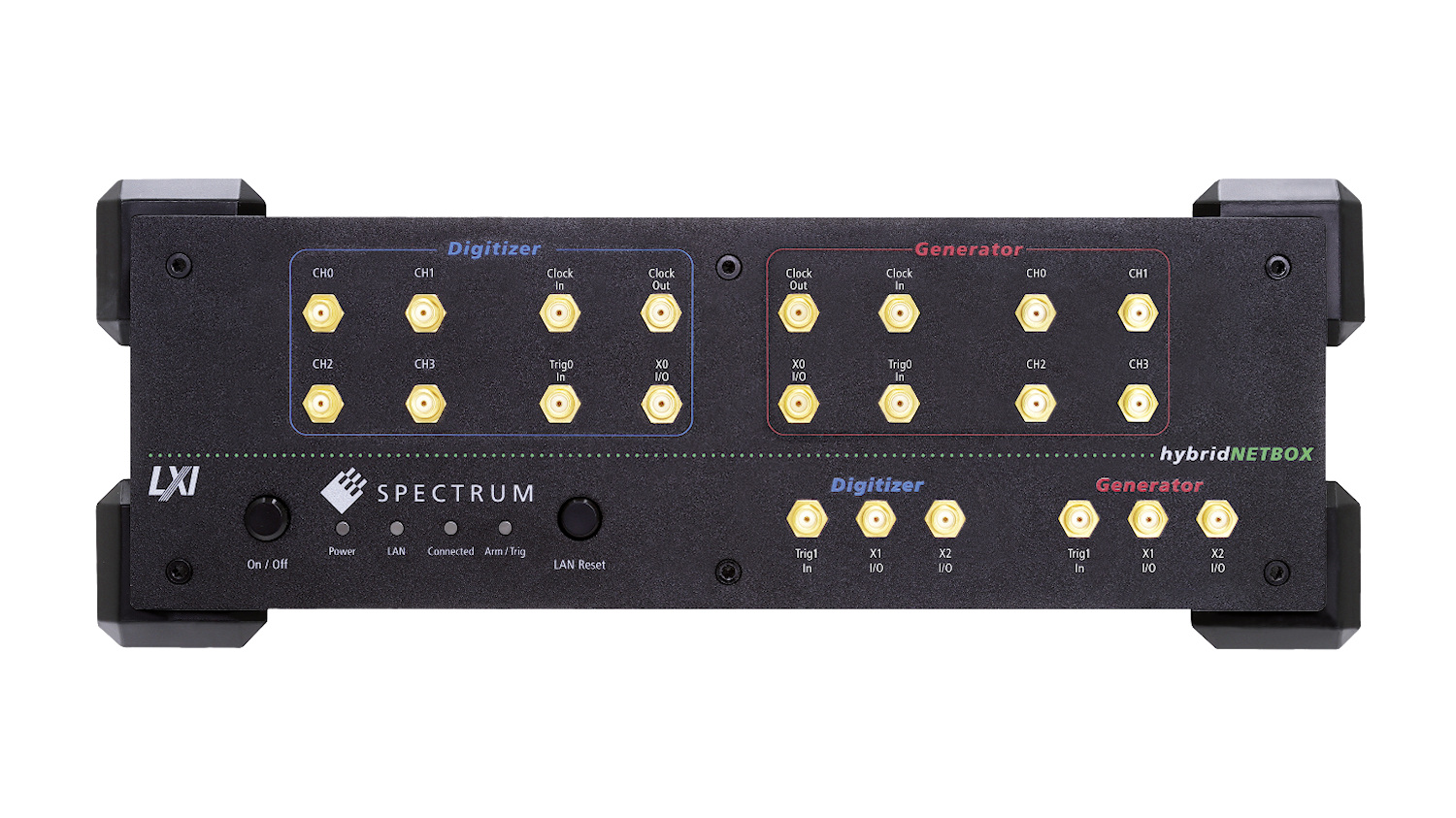
New hybridNETBOX models generate and acquire faster signals
Spectrum Instrumentation extends its range of hybridNETBOX products with the addition of eight high-performance models. The hybridNETBOX is an innovative instrumentation platform that combines a multi-channel arbitrary waveform generator (AWG) and a digitizer in a single portable unit. With their unique capability for simultaneous signal generation and acquisition, these powerful tools are perfect for applications involving stimulus-response or closed-loop type testing.
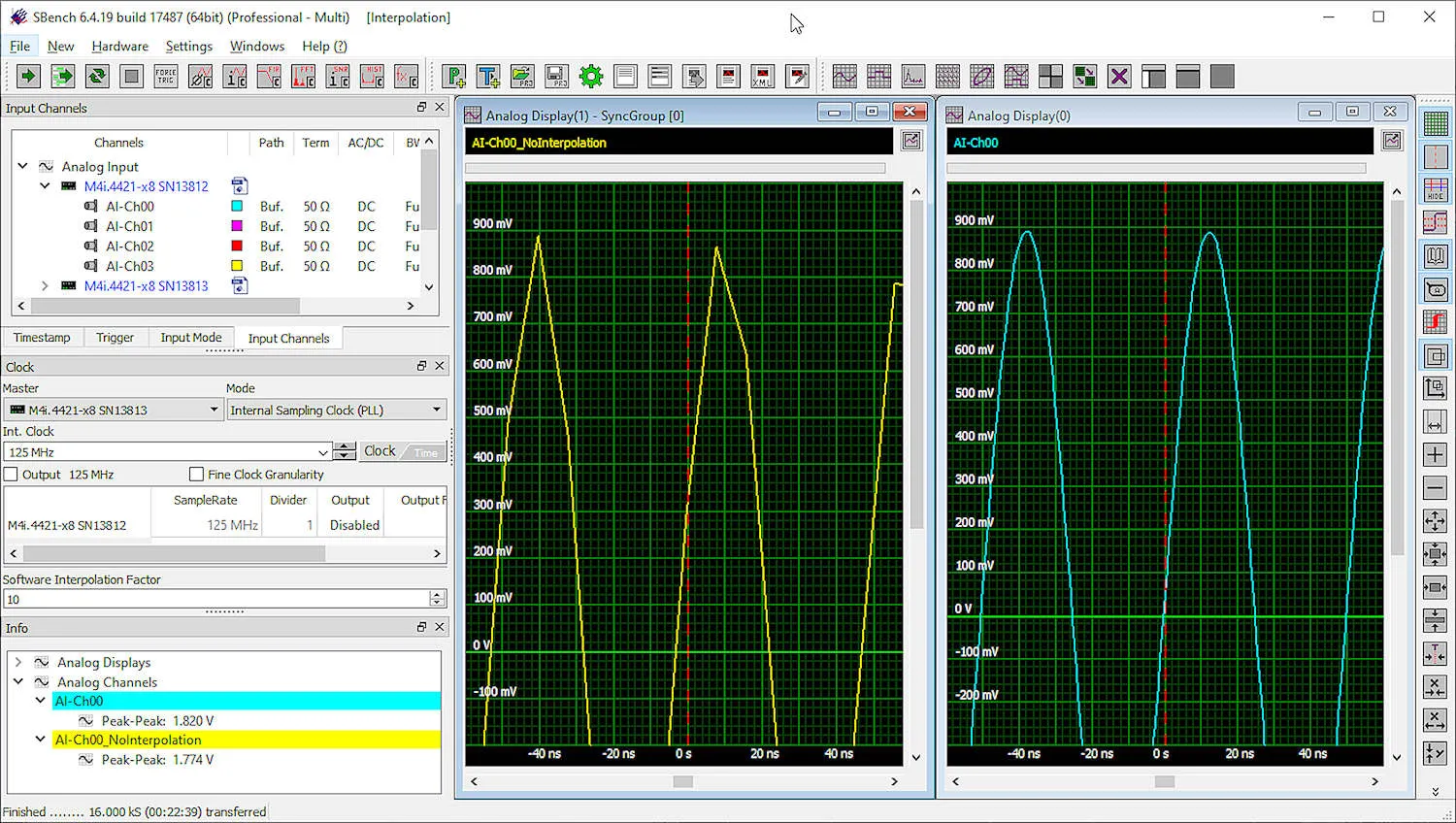
Sophisticated new functions for Spectrum's measurement software
A number of new functions have been added to SBench 6-Professional, the software that is used for controlling Spectrum Instrumentation’s digitizers, Arbitrary Waveform Generators and Digital I/O products. SBench 6 provides an easy-to-use graphical interface for instrumentation control as well as data acquisition, generation, display, analysis and documentation. The new features, most of them free of charge, expand the versatility of the software by adding functionality for automation as well as increasing the software’s capabilities for signal processing and measurement precision.
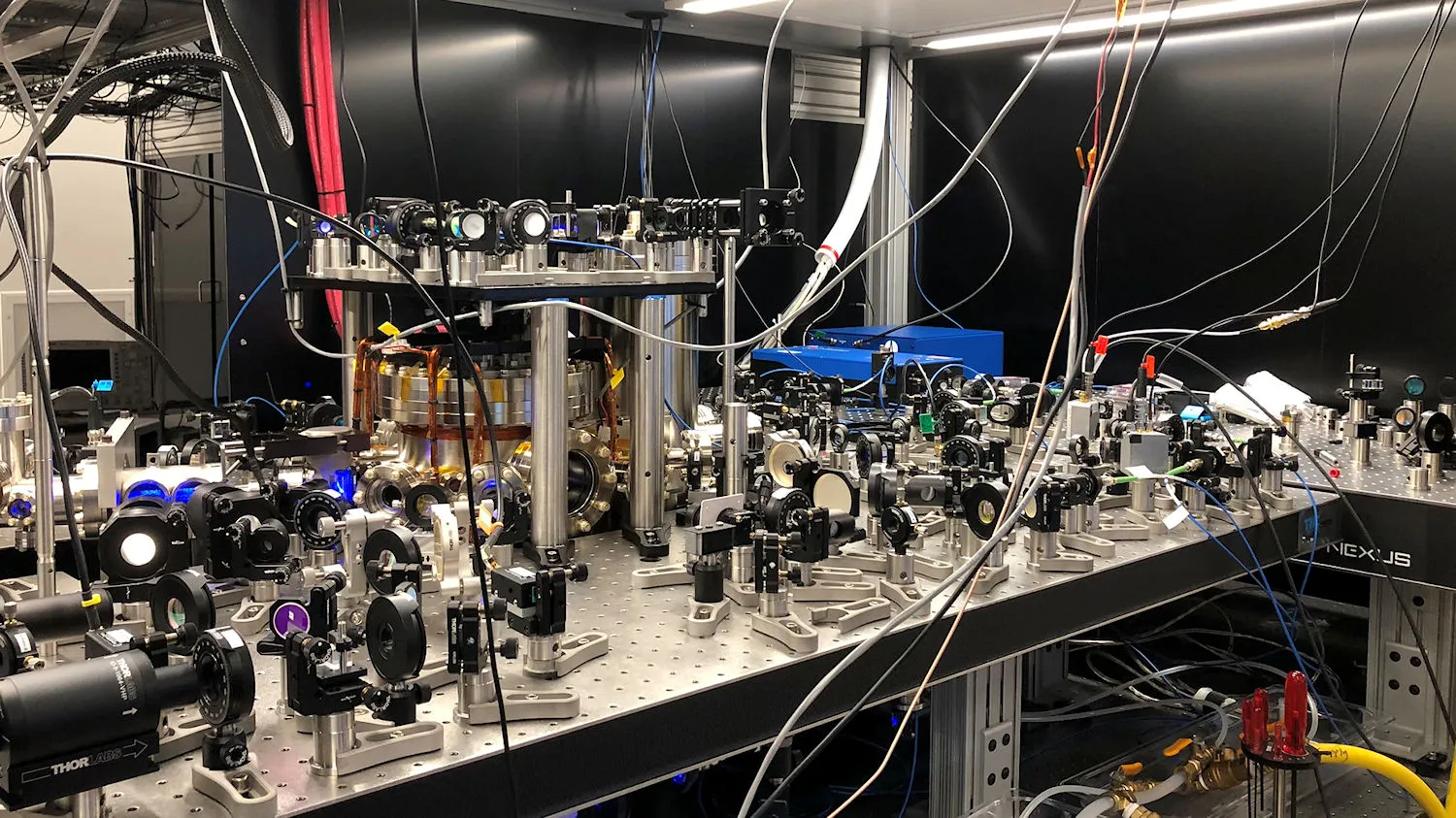
AWG Card used to move around Single Atoms
How do you determine what is going on when you can’t actually see the components in the system you are investigating? This is the challenge when investigating the quantum behavior of electrons in a lattice of ions. The solution being created by the Physics Department at the University of San Diego, California is to build a model that is slightly larger with observable components of atoms moving in an optical lattice.
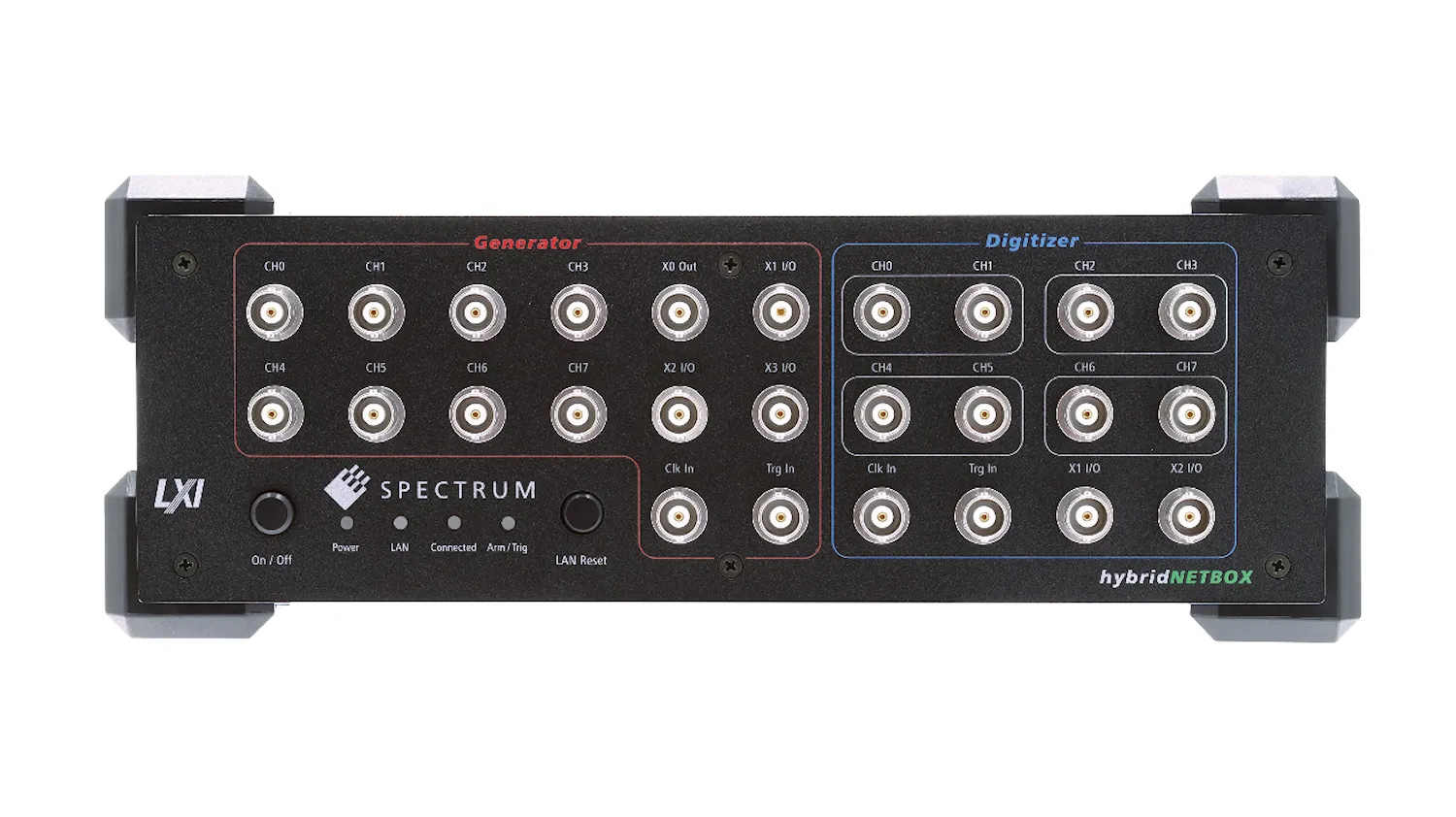
hybridNETBOX - Multi-Channel AWG and Digitizer in one Box
The hybridNETBOX is an exciting new instrumentation platform for applications that require simultaneous signal generation and acquisition. Six models are available offering the choice of two, four or eight pairs of matched AWG and digitizer channels, with output- and sampling-rates of 40, 80 and 125 Megasamples per second. With their ability to create and acquire electronic signals at the same time, these products are perfect for measurement systems that need to perform automated closed-loop or stimulus-response type testing.
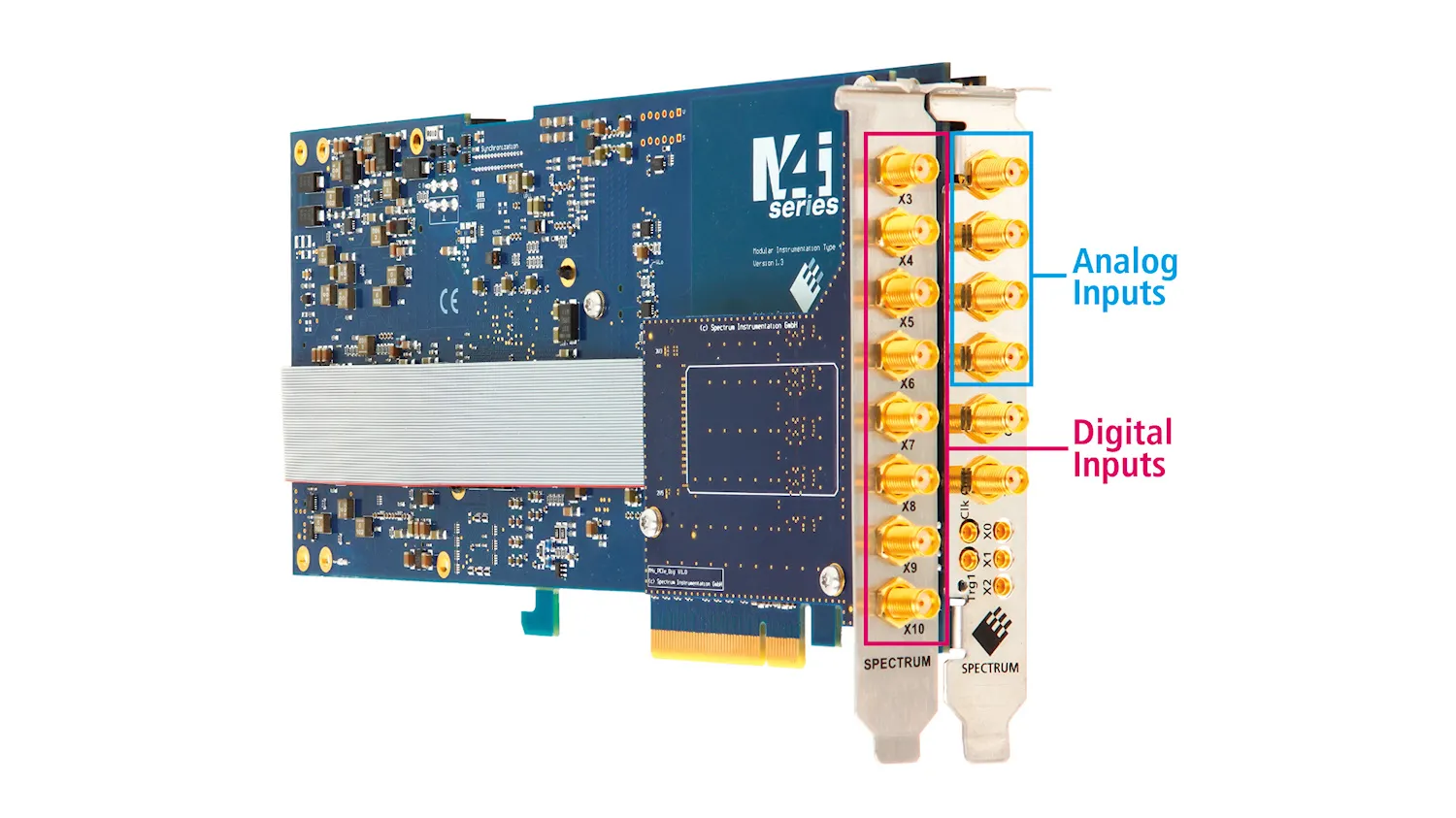
Fast PCIe Digitizers get 8 additional Digital Inouts
Spectrum Instrumentation has announced a new digital input option (M4i.44xx-DigSMA) for its popular high-speed and high-resolution series of PCIe digitizers. The option consists of an additional module that sits beside the existing digitizer card to provide 8 additional digital input lines.

Intelligent Road-Radar to detect wild animals
Every two minutes there is an accident caused by wildlife on German roads at a cost to the insurance industry of more than 600 million euros in 2015 alone. To address this, the Universities of Applied Sciences of Ulm and Heilbronn along with industrial partners have created "SALUS".
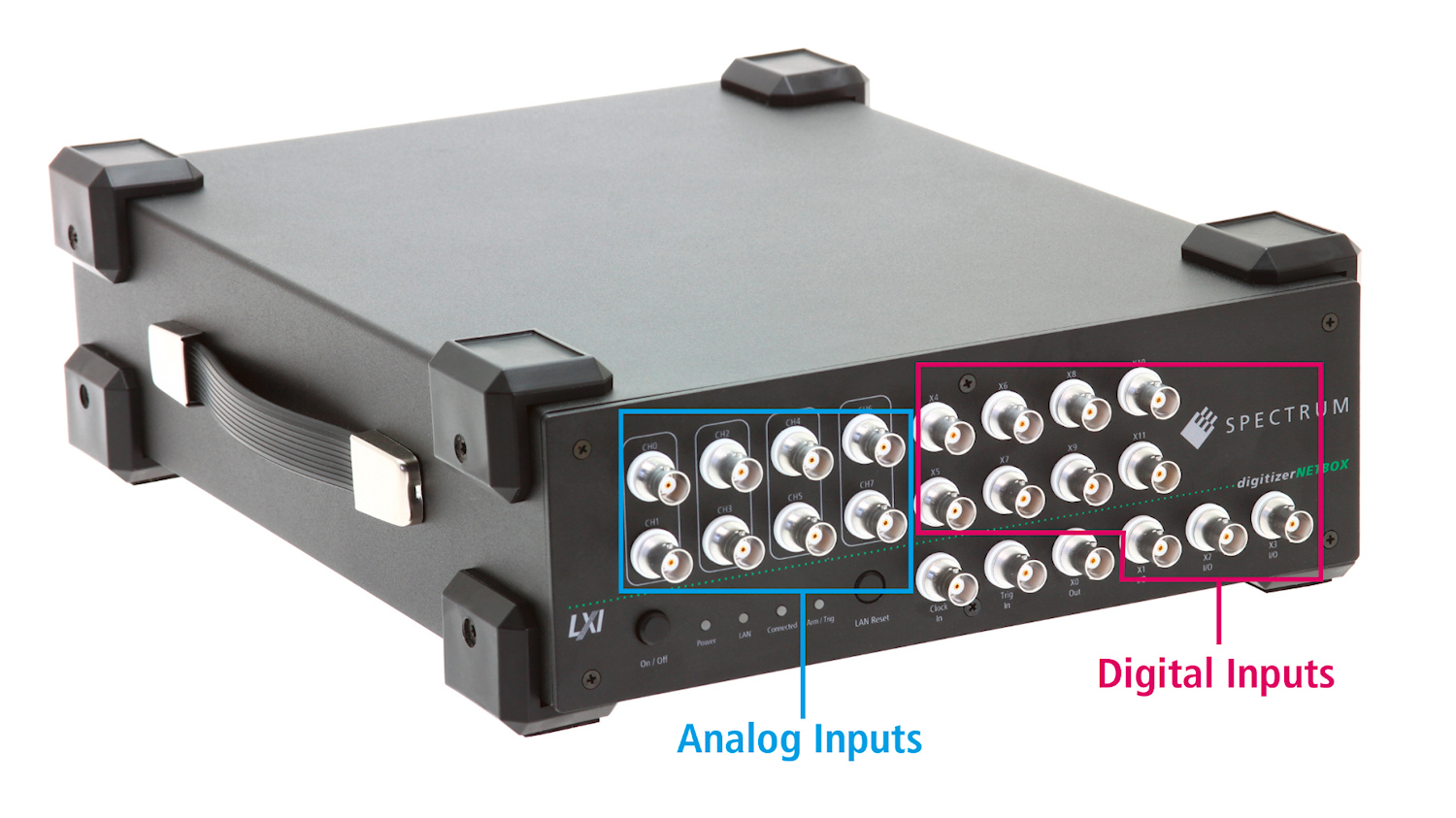
LXI-Digitizer get additional I/O Lines for Mixed Mode Testing
Spectrum Instrumentation has extended the capabilities of its popular LXI/Ethernet-digitizers by adding a powerful mixed-mode testing option. This new option is available on four different models, all featuring 8 analog input channels that synchronously sample signals at rates up to 5 MS/s, 20 MS/s, 40 MS/s or 125 MS/s with 16-bit resolution. The new option adds 8 digital lines to the 3 multipurpose I/O lines that come as standard with each unit, increasing the number of digital input channels to 11 in total.
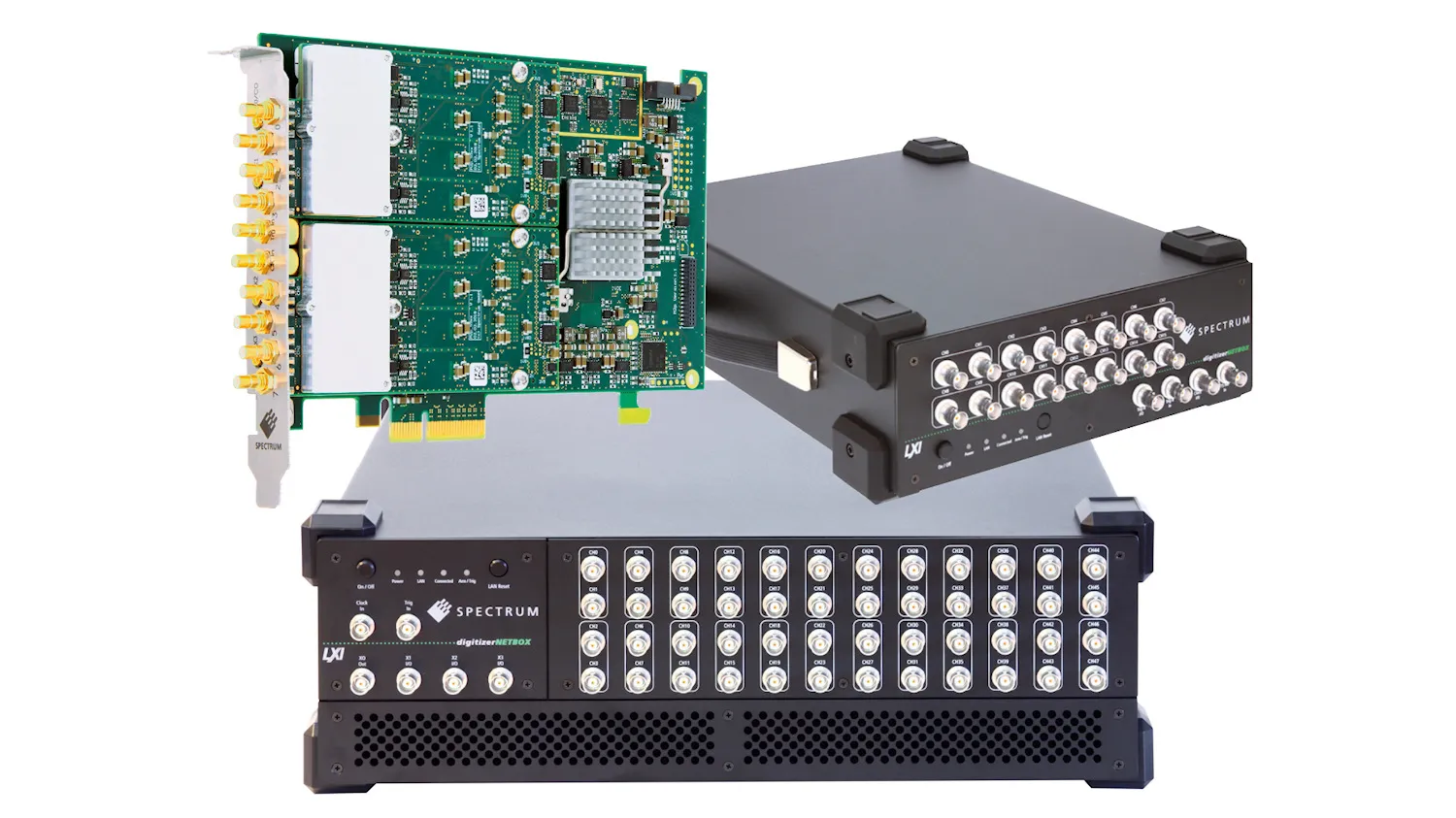
Digitizers tackle fast Acoustical and Mechatronics Applications
Spectrum Instrumentation has released 11 new digitizer products that are specifically intended for the capture and analysis of electronic signals in the DC to 2 MHz frequency range.
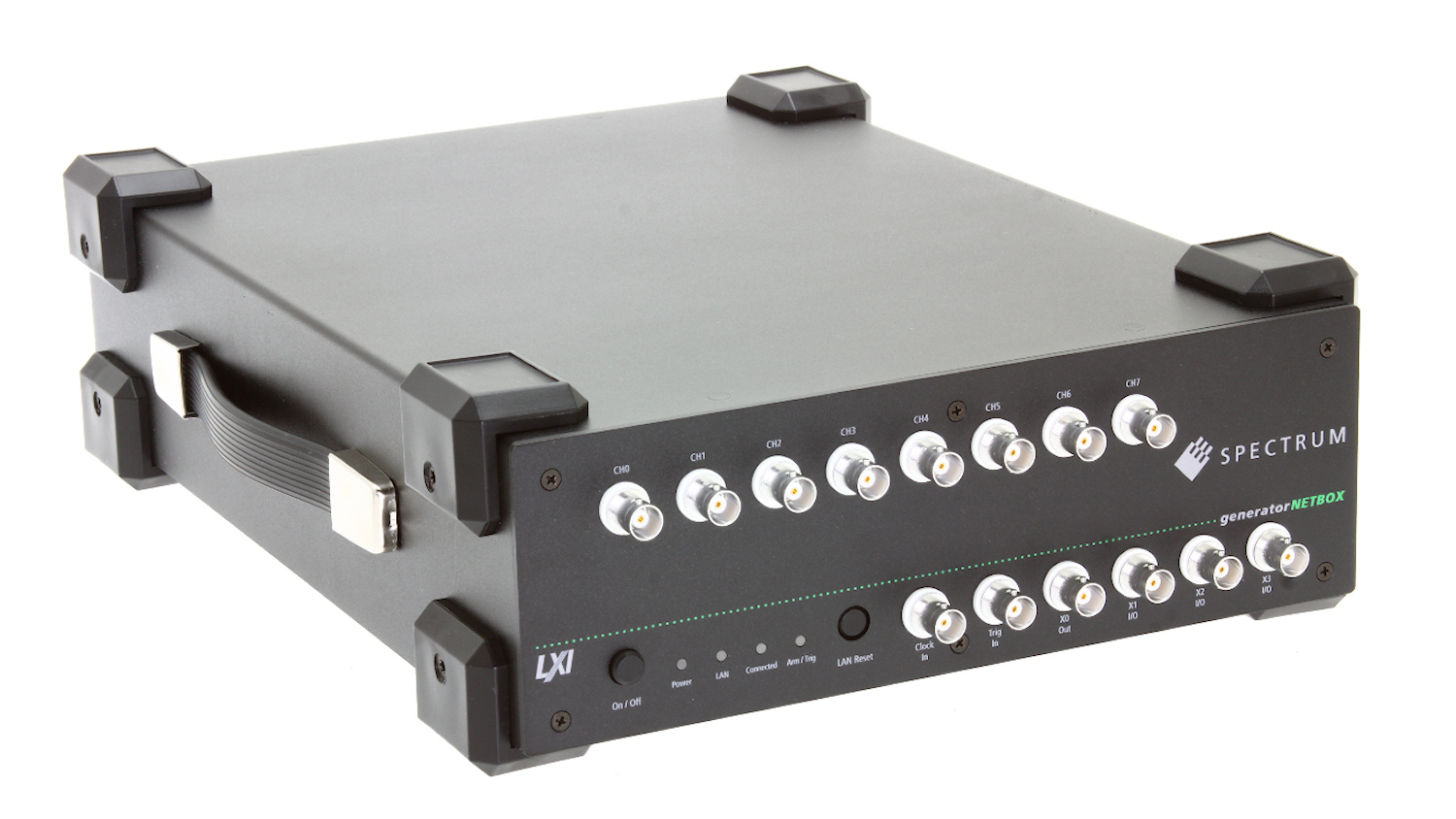
Go-Anywhere AWGs deliver 24V output swing on up to 8 channels
he ability of Arbitrary Waveform Generators (AWGs) to recreate virtually any waveshape makes them especially useful as signal generators in today’s sophisticated electronic systems. Spectrum Instrumentation recently released four new models to their generatorNETBOX family with output swings of up to 24 volts on up to 8 channels, to cover even demanding test applications.

Spectrum Instrumentation turns 30
Spectrum Instrumentation, a specialist PC based technology company, has built a global enterprise since it was first founded 30 years ago in December 1989. The company uses a versatile modular design approach to create a wide range of digitizer and generator products as PC-cards (PCIe and PXIe) and stand-alone Ethernet (LXI) instruments
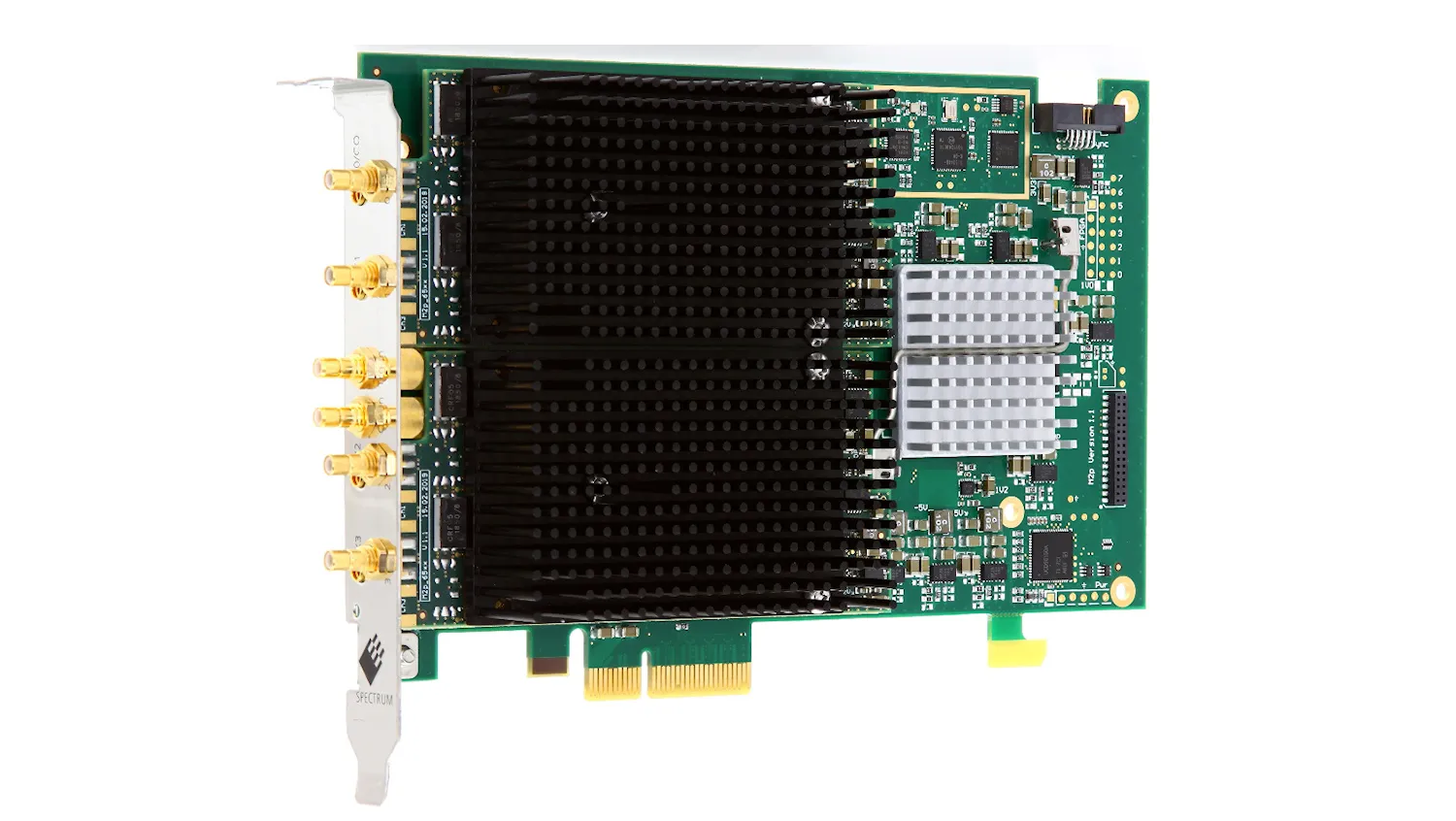
AWGs deliver output swing up to 24 Vpp
Spectrum Instrumentation has added six new Arbitrary Waveform Generators (AWGs) to its recently released M2p.65 xx series of PCIe cards. The new AWGs extend the product families capabilities by boosting the available output range, so that waveforms can be generated with amplitude swings of up to ±12 V into 1 MOhms or ±6 V into 50 Ohms.
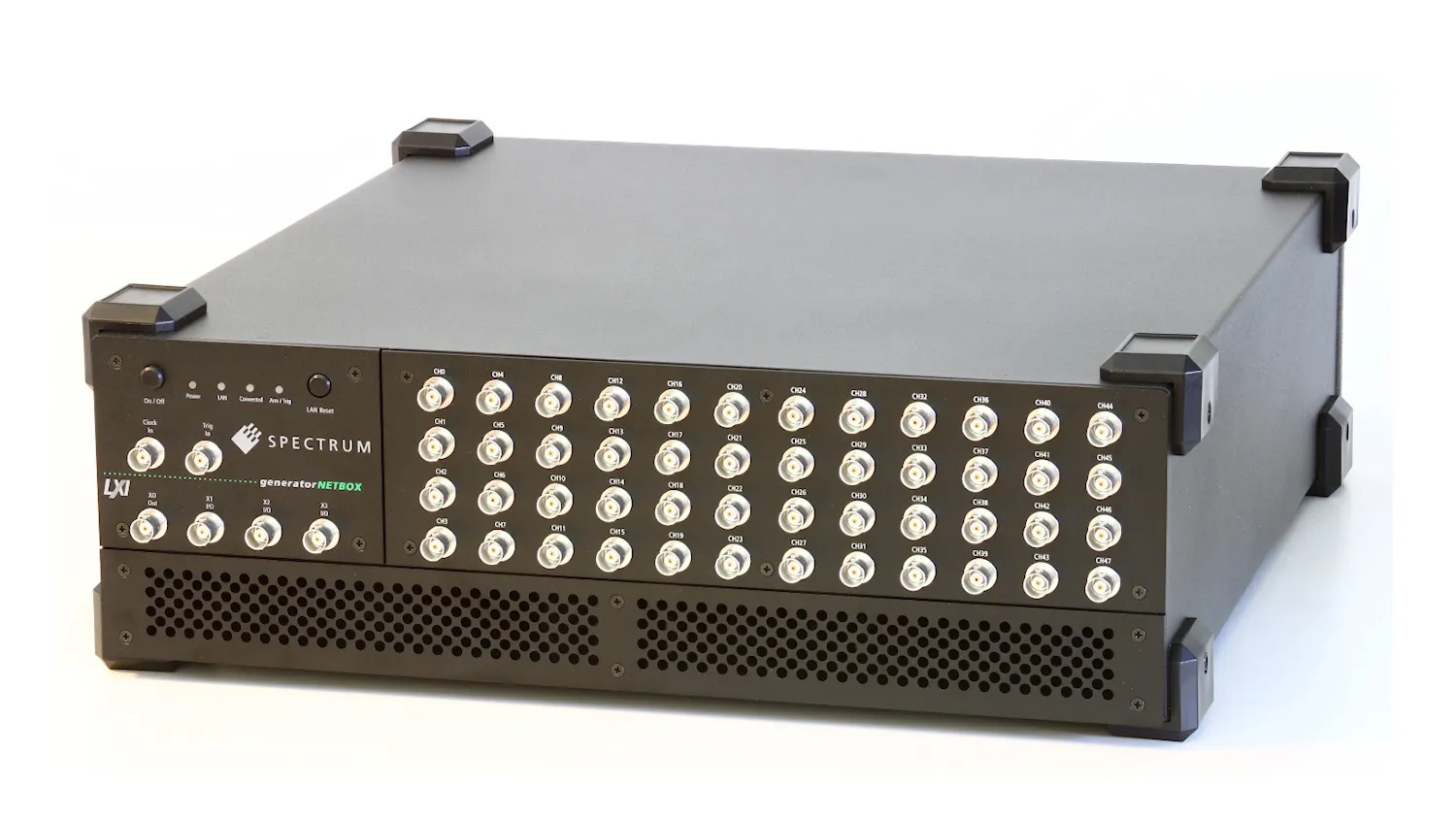
Multi-channel AWGs solve cost problem of Signal Generators
Designed for engineers and scientists that need to simultaneously generate multiple electronic test signals, Spectrum Instrumentation’s latest line of Arbitrary Waveform Generators offers 24 to 48 synchronous channels in a single rack-unit with a very economic cost-per-channel relationship.
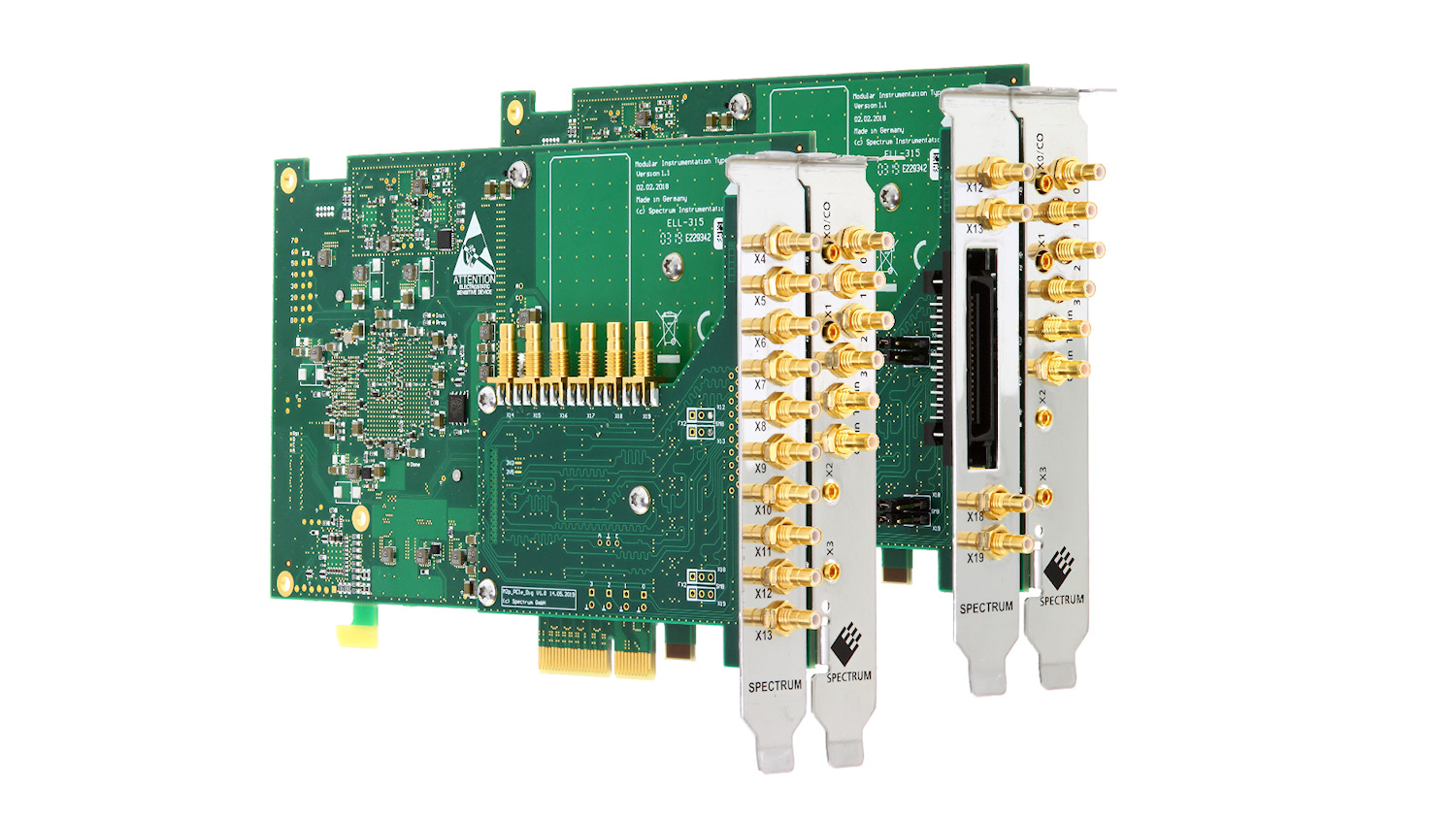
Mixed Mode Option for Digitizers and AWGs
Spectrum Instrumentation has released an optional module for its latest range of 16-bit digitizers and AWGs that adds 16 synchronous digital lines to the analogue data.
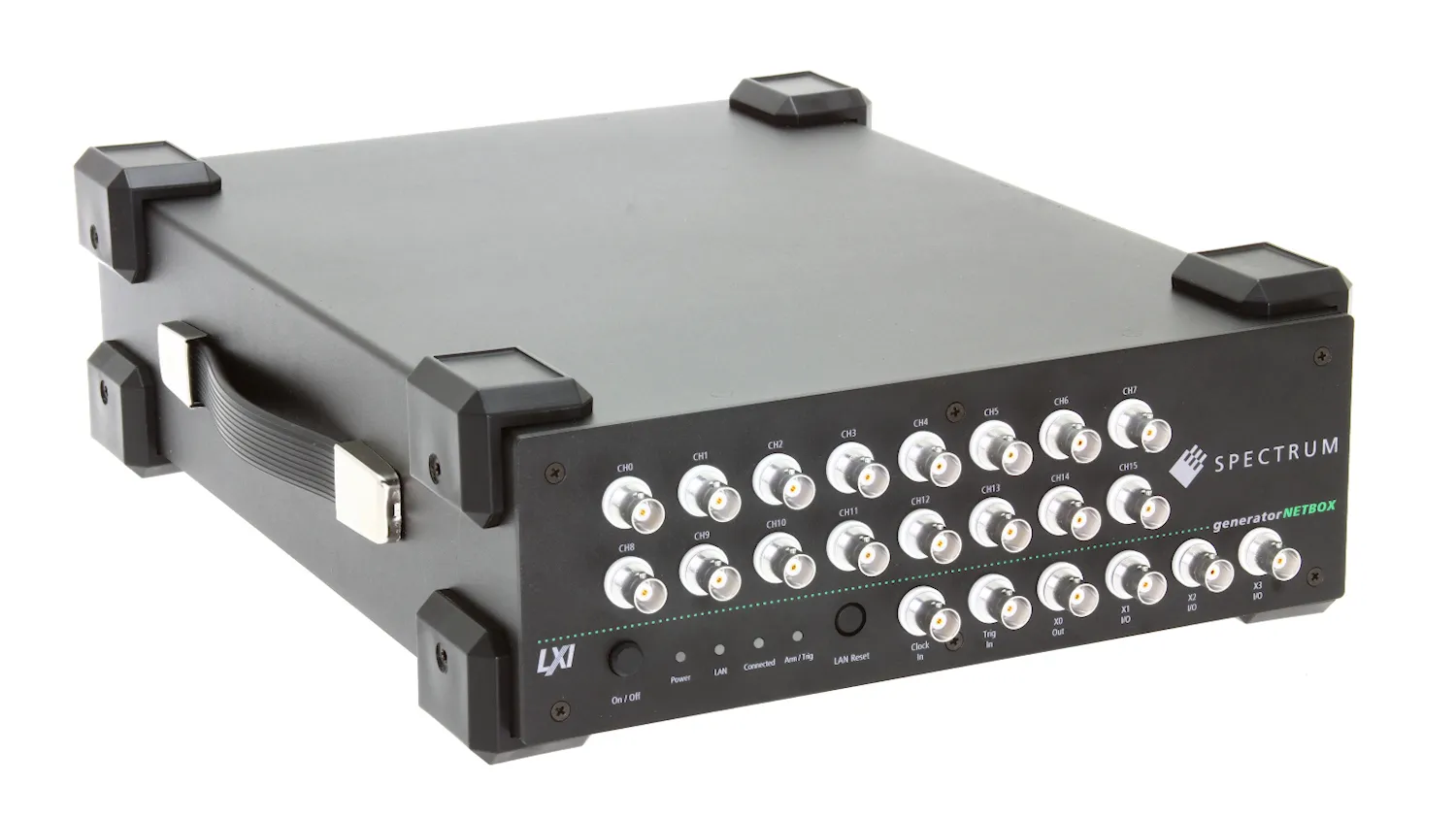
Portable AWG allows signal-generation for up to 16 channels
Spectrum Instrumentation’s latest line of Arbitrary Waveform Generators (AWGs) is based on the LXI instrumentation standard and has been created for engineers and scientists that need to simultaneously generate up to 16 precise electronic signals. Small and compact, the units are ideal in automated testing or remote-control type applications.
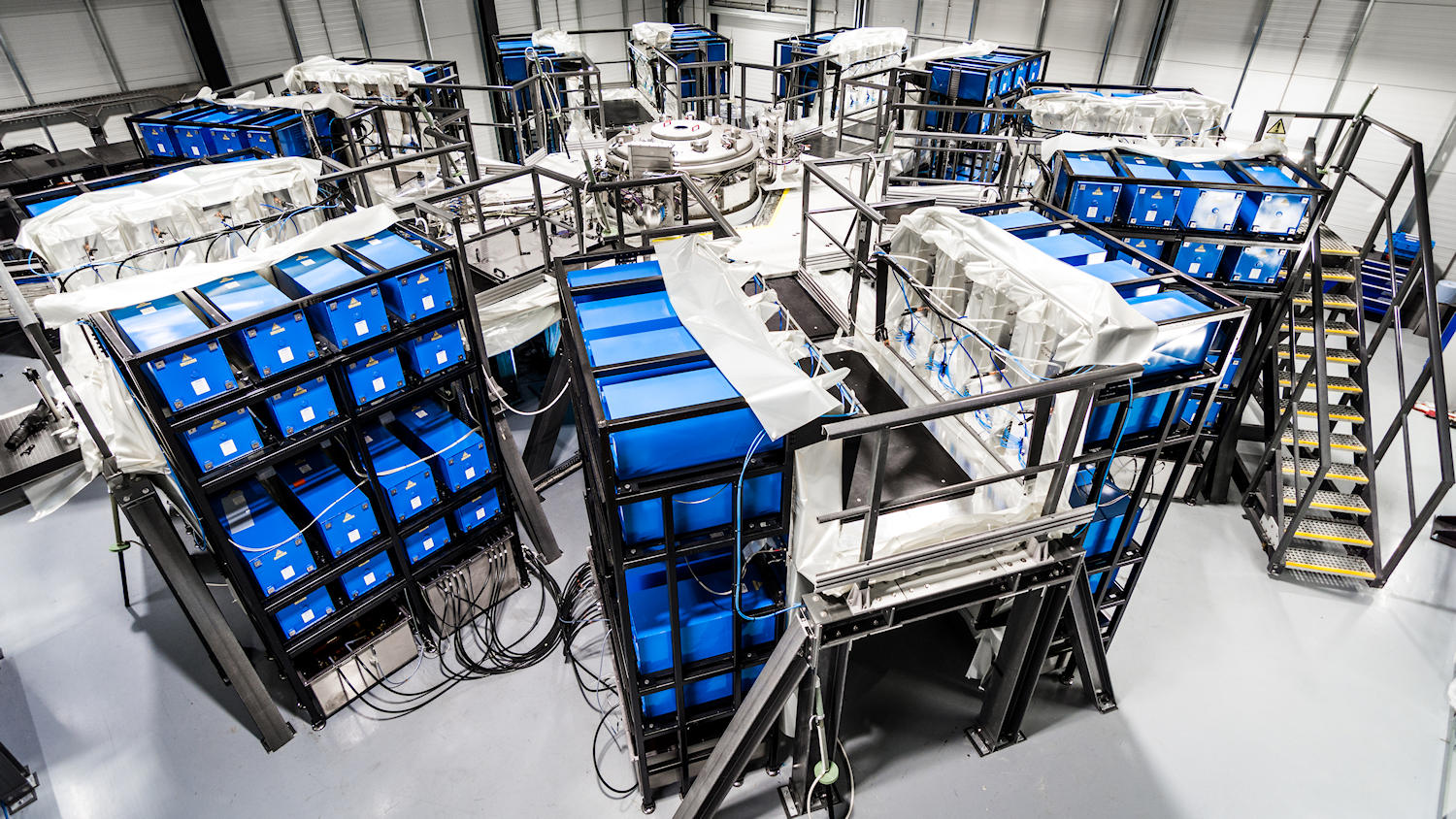
Digitizers from Spectrum used in race to create fusion for limitless clean energy
usion has long been viewed as the ultimate goal for energy generation. Smashing together deuterium and tritium atoms releases energy as they combine and is the reaction at the heart of the sun. With no dangerous waste products and a virtually limitless supply of these atoms from seawater, billions have been spent on fusion research. However, recreating the extreme conditions of temperature and pressure on earth are not easy.
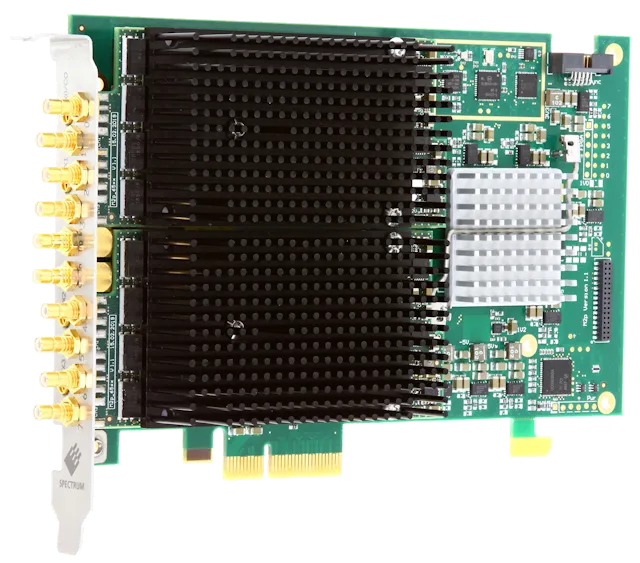
Spectrum introduces 16-Bit AWG with 8 channels per card
Spectrum Instrumentation has used its modular design philosophy to create a unique solution for customers wanting multi-channel AWGs. Having 8 AWG channels on a single PCIe-card only 168 mm in length offers great new opportunities for very compact and affordable test systems. The addition of the two new 8-channel-cards to Spectrum's latest "65" series of PCIe Arbitrary waveform generators means that, using Spectrum’s Star-Hub, up to 80 channels can be fully synchronized in a single PC.
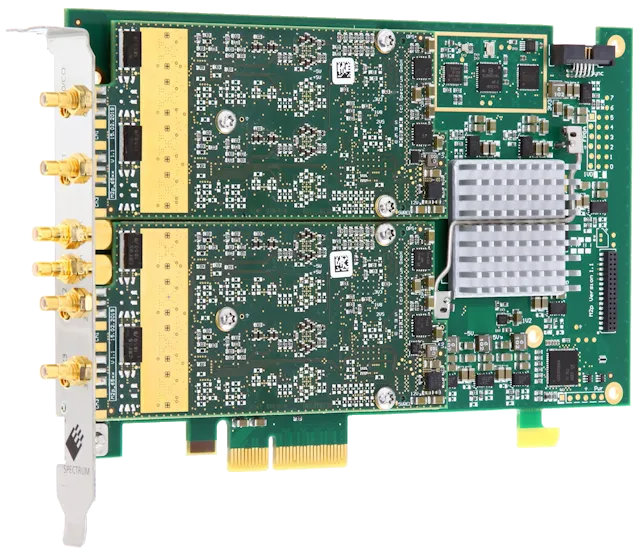
Spectrum's next generation of AWGs - smaller, faster, better
Spectrum Instrumentation has released six new Arbitrary Waveform Generators (AWGs) that are optimized for signal quality, size and cost. The new "65" series AWGs offer the latest 16-bit Digital-Analog-Converters, a fast PCIe x4 interface with up to 700 MByte/s streaming speed and a card length of only 168 mm to fit into nearly every PC.
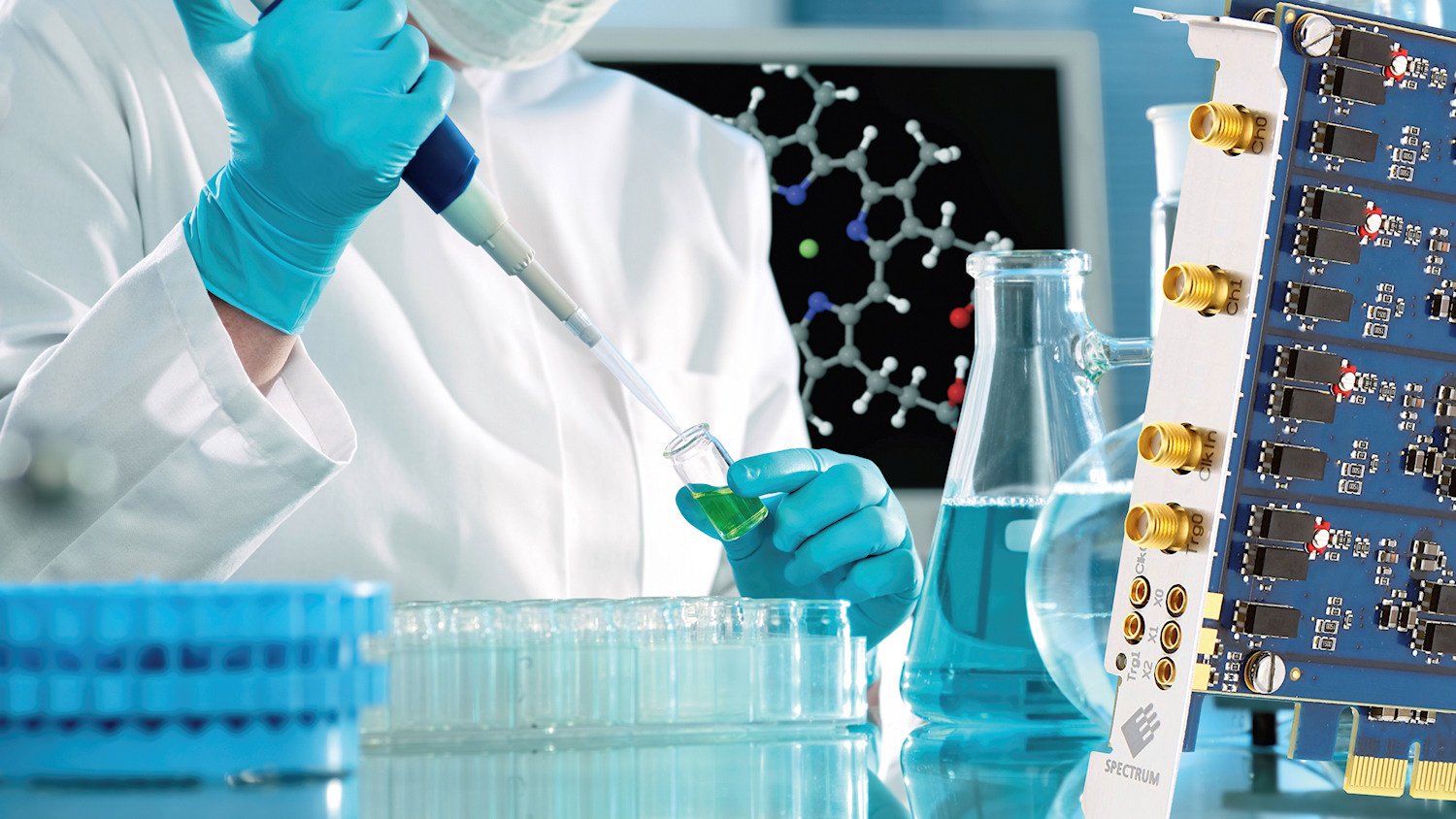
Fast Digitizers from Spectrum enable break-through in cell sorting
Cell sorting plays a fundamental role in molecular biology, pathology, immunology and virology research. It requires the ability to rapidly search through and sort out cells based on their unique chemical features and shapes. Conventional methods are limited in uncovering these differences, or are too labor or time intensive, or have to tradeoff between speed and accuracy. The Department of Chemistry at the University of Tokyo has developed an intelligent Image-Activated Cell Sorter (IACS) with an ultra-fast Spectrum Instrumentation digitizer at the heart.
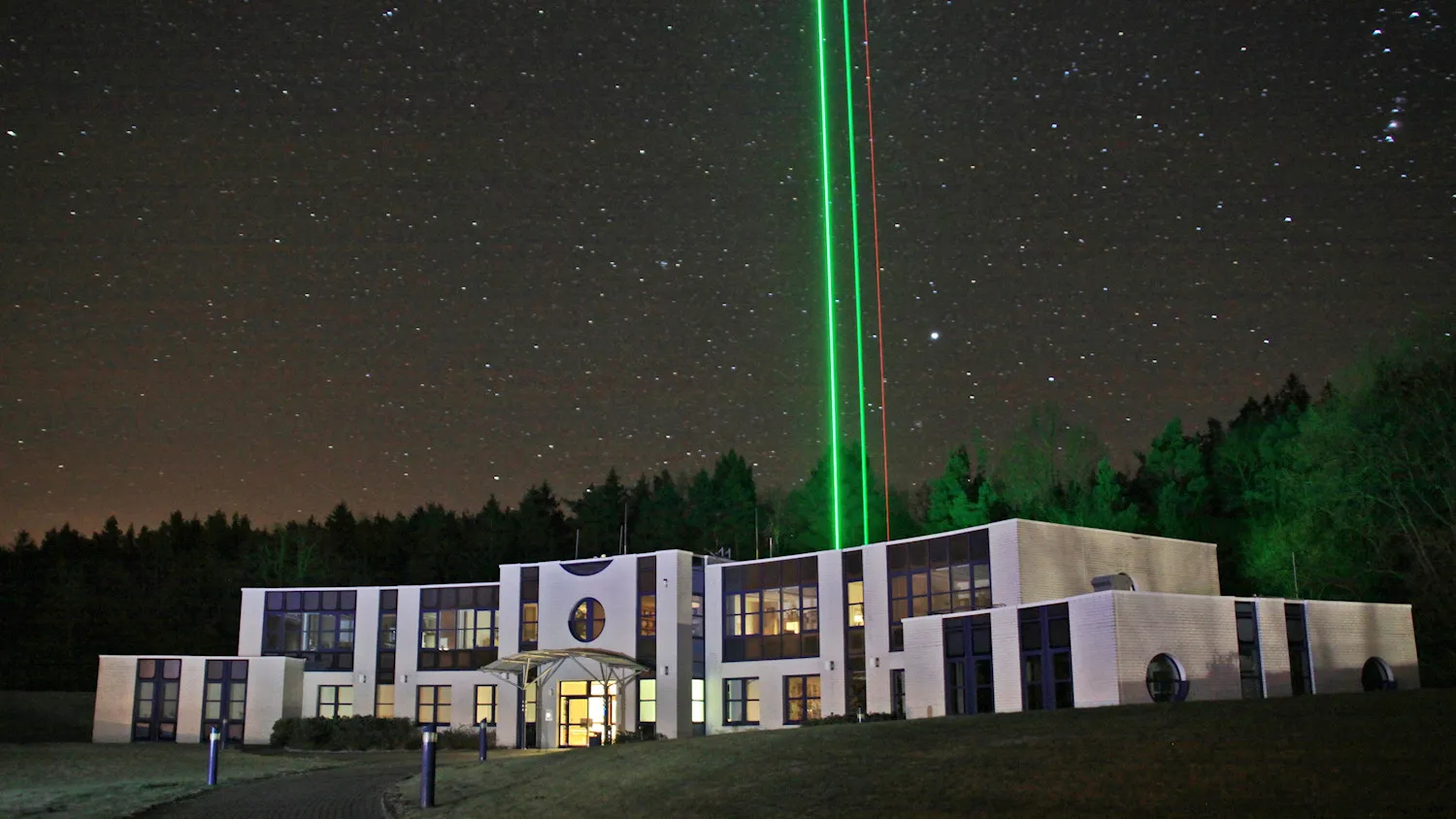
Spectrum Instrumentation Digitizers and AWG used for atmospheric research with Lidar at Leibniz Institute
Atmospheric research uses pulsed laser beams to measure temperature and wind speed along the beams by measuring the Doppler shifted and backscattered light at 100 km height in the atmosphere. The returning light signals are very weak and can be blocked by sunlight, but The Leibniz Institute for Atmospheric Physics (IAP) has solved this problem: they developed the world’s only portable instrument that can be used during the daytime and it has already provided new insights into Antarctic atmospheric conditions.
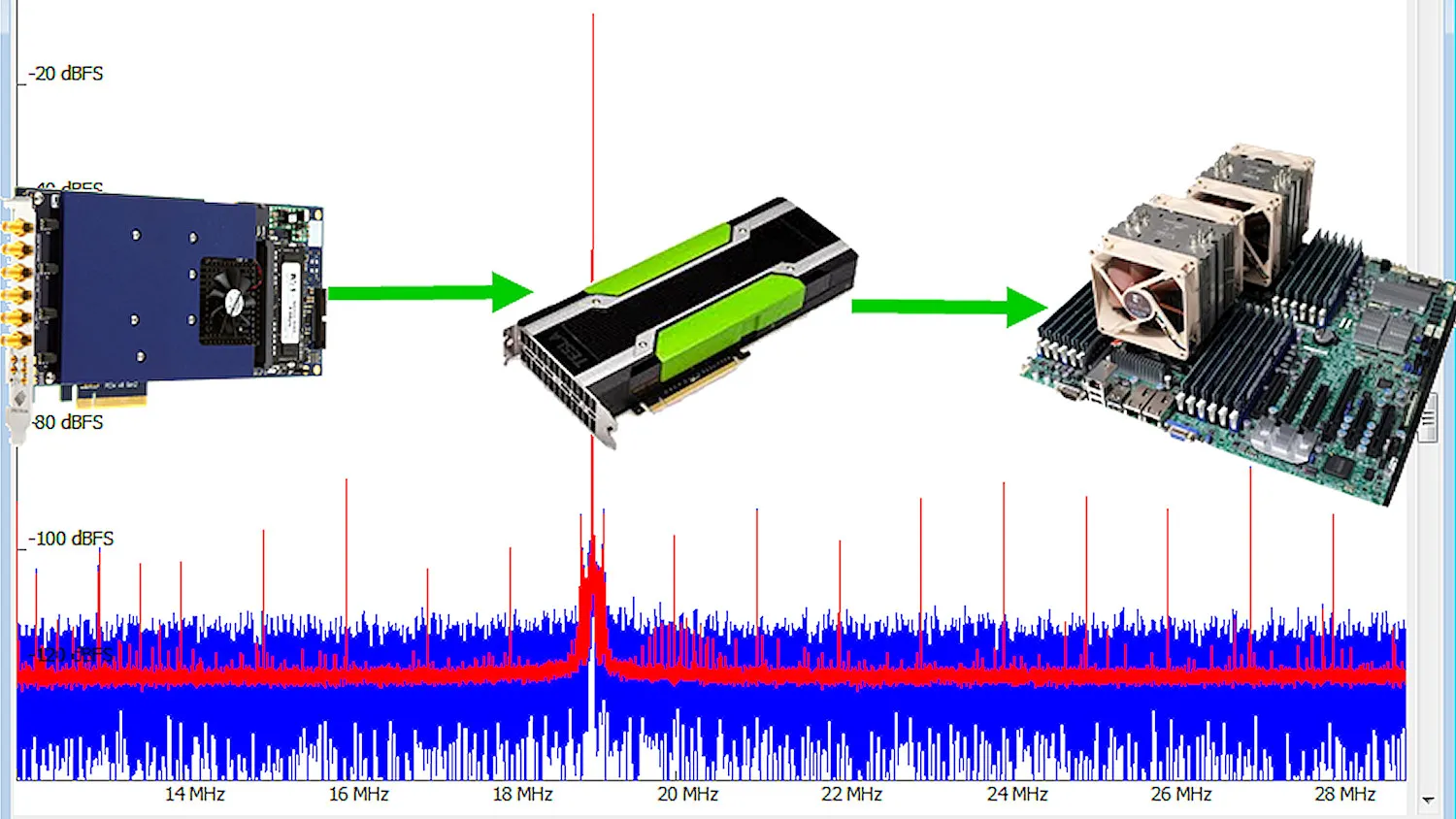
Spectrum launches Digitizer with ultra-long signal averaging capabilities
A new signal averaging package from Spectrum Instrumentation revolutionizes the way that signals can be acquired and averaged. Signal averaging plays a crucial role in applications where signal details, hidden in random noise, need to be extracted and analyzed. The new package uses SCAPP (Spectrum’s CUDA Access for Parallel Processing) together with the company’s latest digitizer products to harness the power of any CUDA-based GPU card.
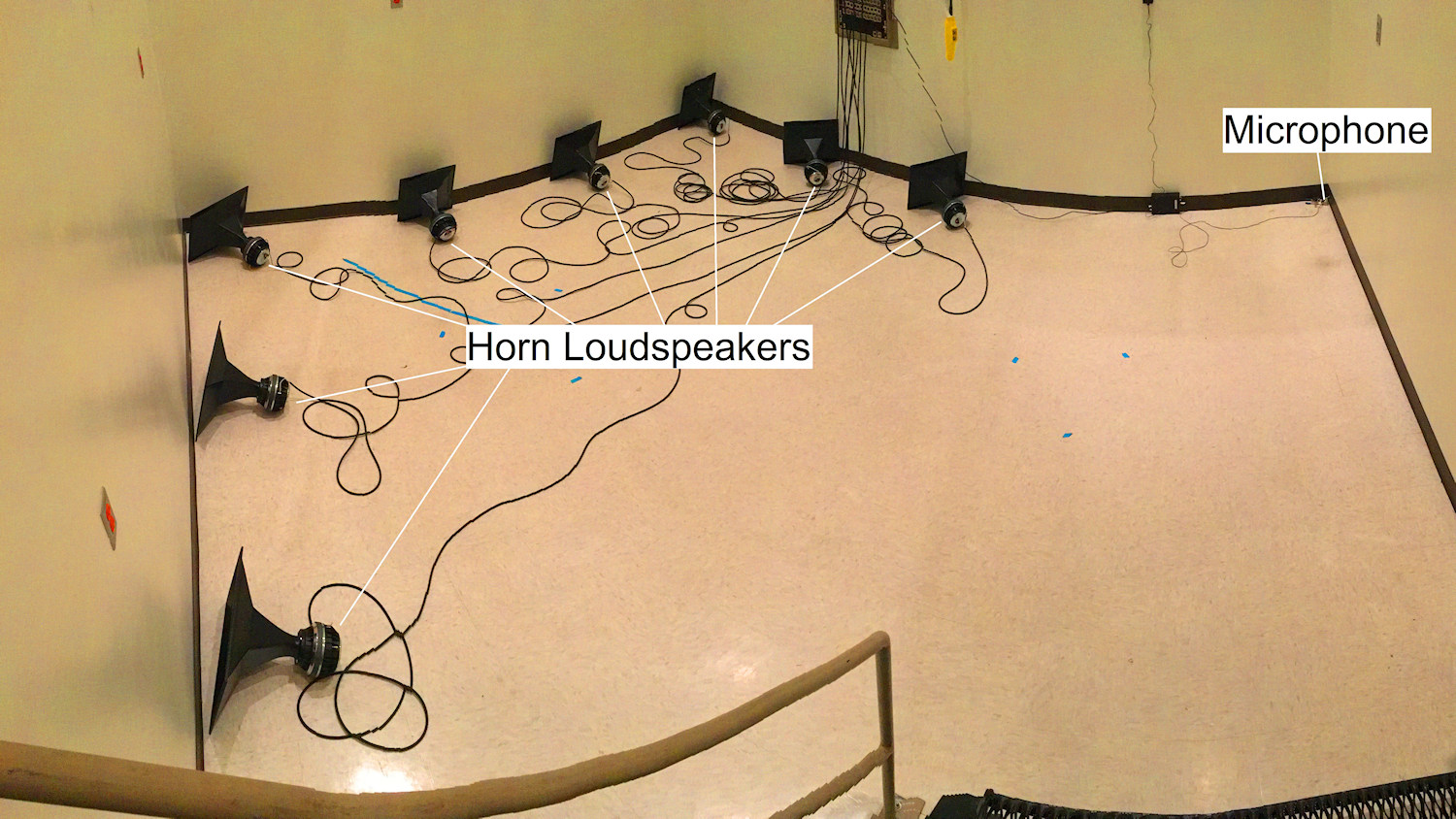
Spectrum Digitizer and AWGs used for Acoustic Wave Research
The Acoustics Research Group at the Department of Physics and Astronomy, Brigham Young University, USA is researching into the use of Time Reversal (TR) signal processing to focus sound waves with high amplitudes in a room. TR focuses waves to a selected location that converge from all directions to produce a virtual source of spherical waves and then diverge from that location. To generate the acoustic waves and capture the results, Brigham Young University use Arbitrary Waveform Generator (AWG) cards and a digitizer card from Spectrum Instrumentation.

Spectrum Digitizer deliver precision measurement for up to 48 channels
Spectrum Instrumentation has added twelve new products to its family of LXI-based digitizerNETBOX data acquisition instruments. Designed specifically for situations where multiple signals need to be acquired, stored and analyzed, users can select from models that provide 24, 32, 40 or even 48 fully synchronized channels. The new DN6.59x series digitizers are all based on the latest high-resolution 16-bit ADC technology and come with a choice of maximum sampling rates (20, 40 and 125 MS/s) and bandwidths (10, 20 and 60 MHz) to best match applications found in a wide variety of industries. It’s a combination that makes these new instruments ideal for use in multi-channel applications where signals, in the DC to 60 MHz frequency range, need to be acquired and analyzed with the highest precision and accuracy.
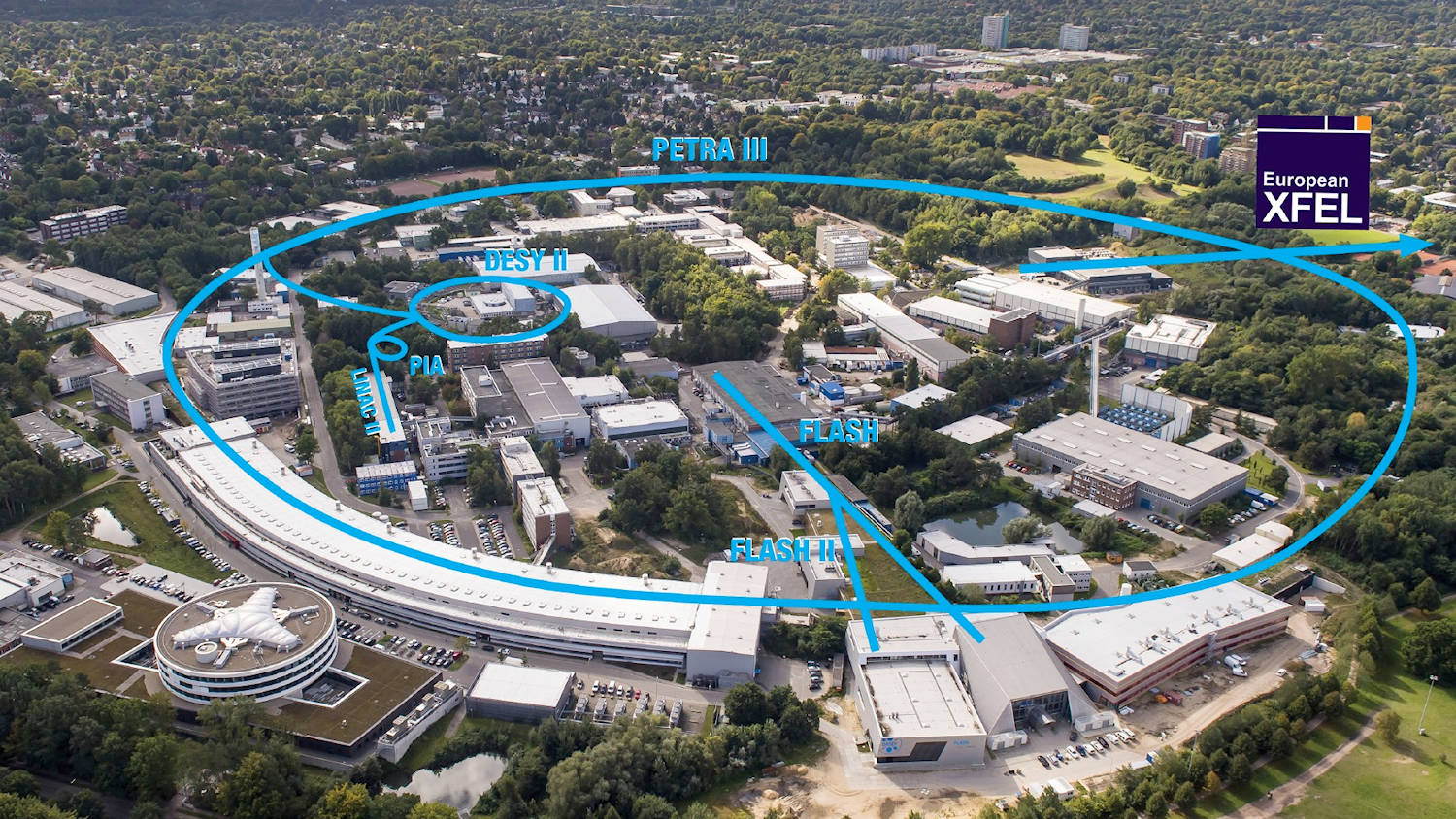
15 year old Spectrum digitizers still playing a vital role at Desy
DESY, short for Deutsches Elektronen-Synchrotron, is based in Hamburg, Germany and operates particle accelerators to investigate the structure of matter. The accelerators run 24/7 for international experimenters so it is vital to have equipment that can be relied on to work perfectly and for many years. Spectrum Instrumentation has become one of DESY’s suppliers of choice for digitizer cards for the past fifteen years because of its reputation for quality.
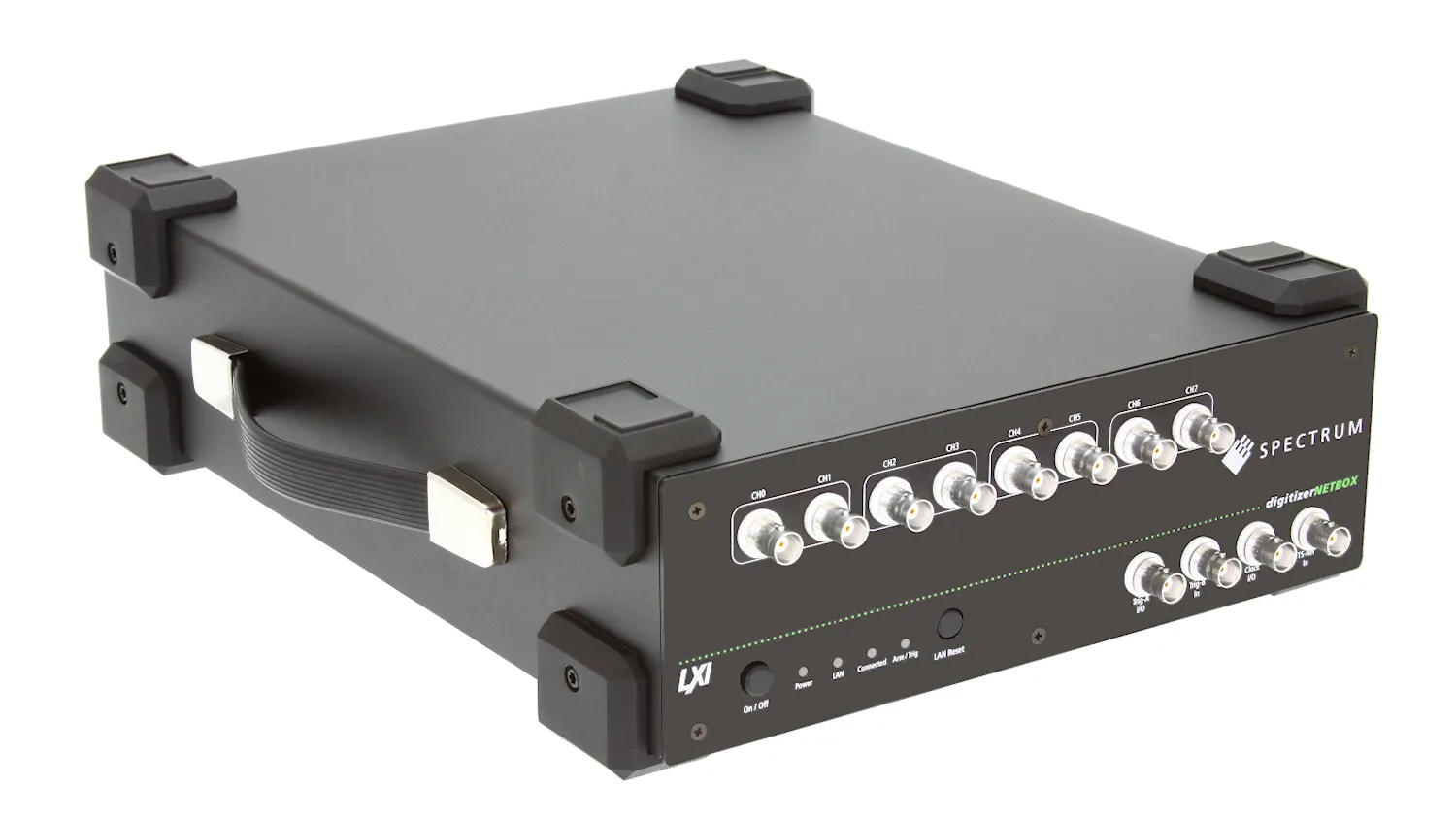
Spectrum launches ultra-high precision, self-contained digitizer range
For complete flexibility of application, Spectrum Instrumentation has announced stand-alone versions of its recently launched, ultra-high precision, PCIe digitizer card. The new DN2.59x digitizerNETBOX series has state-of-the-art, 16-bit ADC technology to deliver 256 times more resolution than the usual 8-bit technology. The range includes models that offer 4, 8 and 16 channels and a choice of sampling rates up to 125 MegaSamples per second on each channel. This provides a wide range of configurations to ensure a perfect fit for customers’ needs in demanding applications such as automated testing, communications, science and ultrasound.
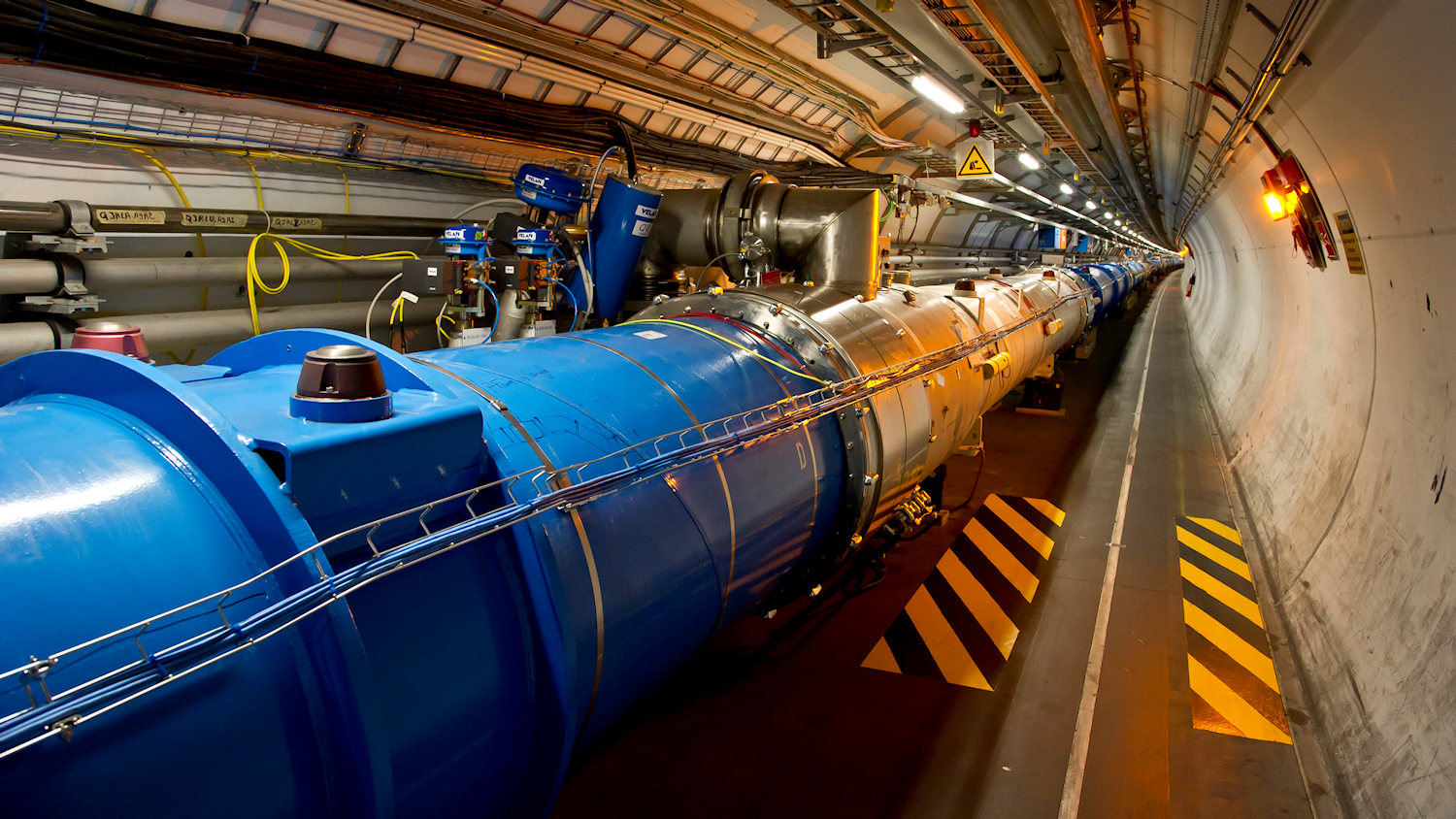
140 Spectrum Instrumentation Digitizers at CERN
Over 140 digitizer cards from Spectrum Instrumentation are being used in the machine protection systems of the Large Hadron Collider (LHC) at CERN. The cards are used to check that the particle beams have been accurately deflected. Incredible precision is required for this as two high-energy particle beams travel at close to the speed of light in opposite directions in the 27 km LHC accelerator ring. They are then made to collide at four locations around the ring for runs of several hours. The particles are so tiny that the task of making them collide is akin to firing two needles 10 kilometers apart with such precision that they meet halfway.
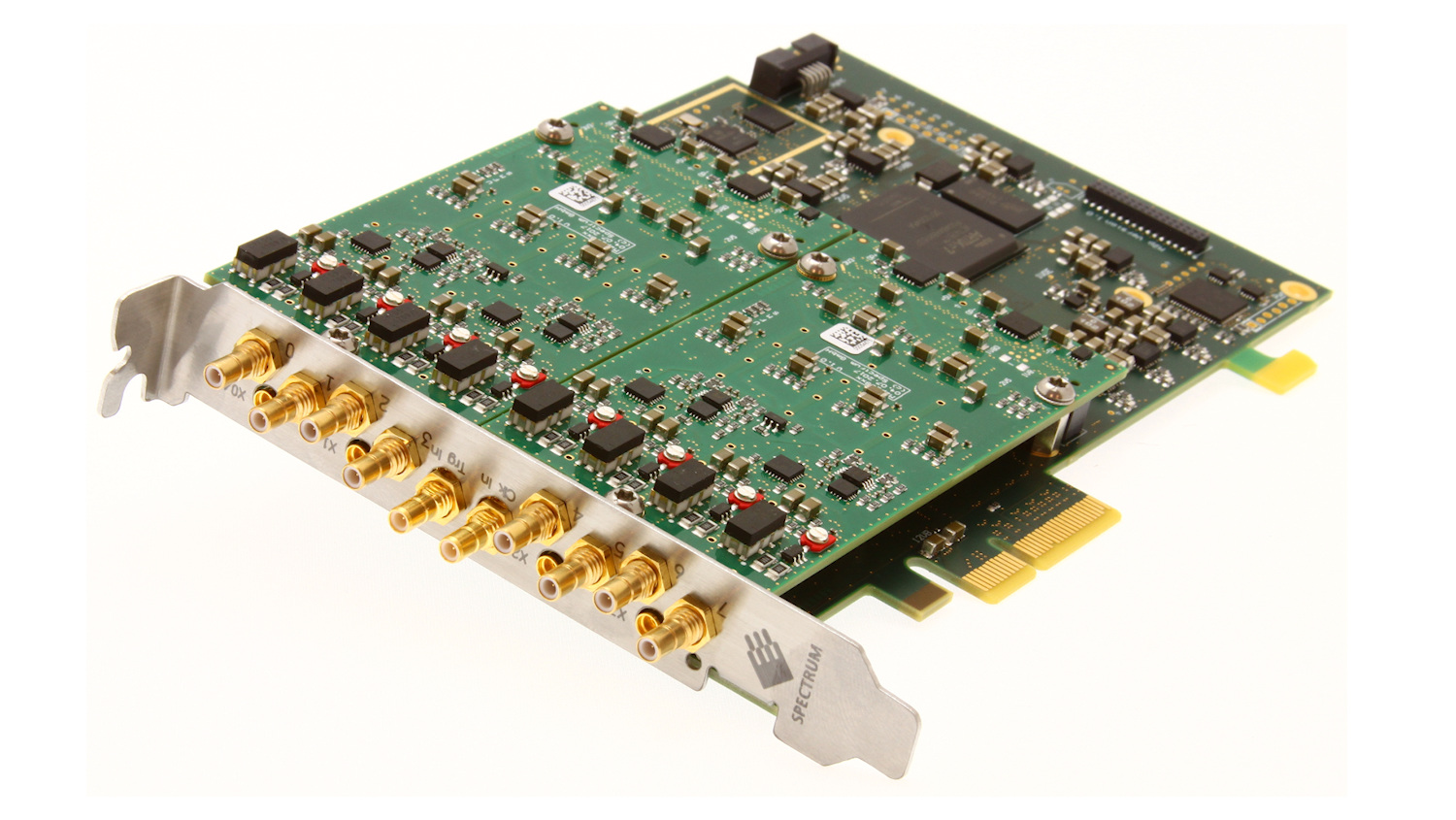
Spectrums general-purpose digitizer now 50% faster
Spectrum Instrumentation has announced the addition of five new models to its general purpose M2p.59xx series of PCIe 16-bit digitizer cards. The new versions extend the performance range by increasing the maximum sampling rate from 80 MS/s up to 125 MS/s. The increased sampling rate, together with higher overall bandwidth, enables the new cards to capture a wider range of electronic signals. It makes them ideal for use in applications where signals in the DC to 50 MHz frequency range need to be acquired and analyzed with speed and accuracy.
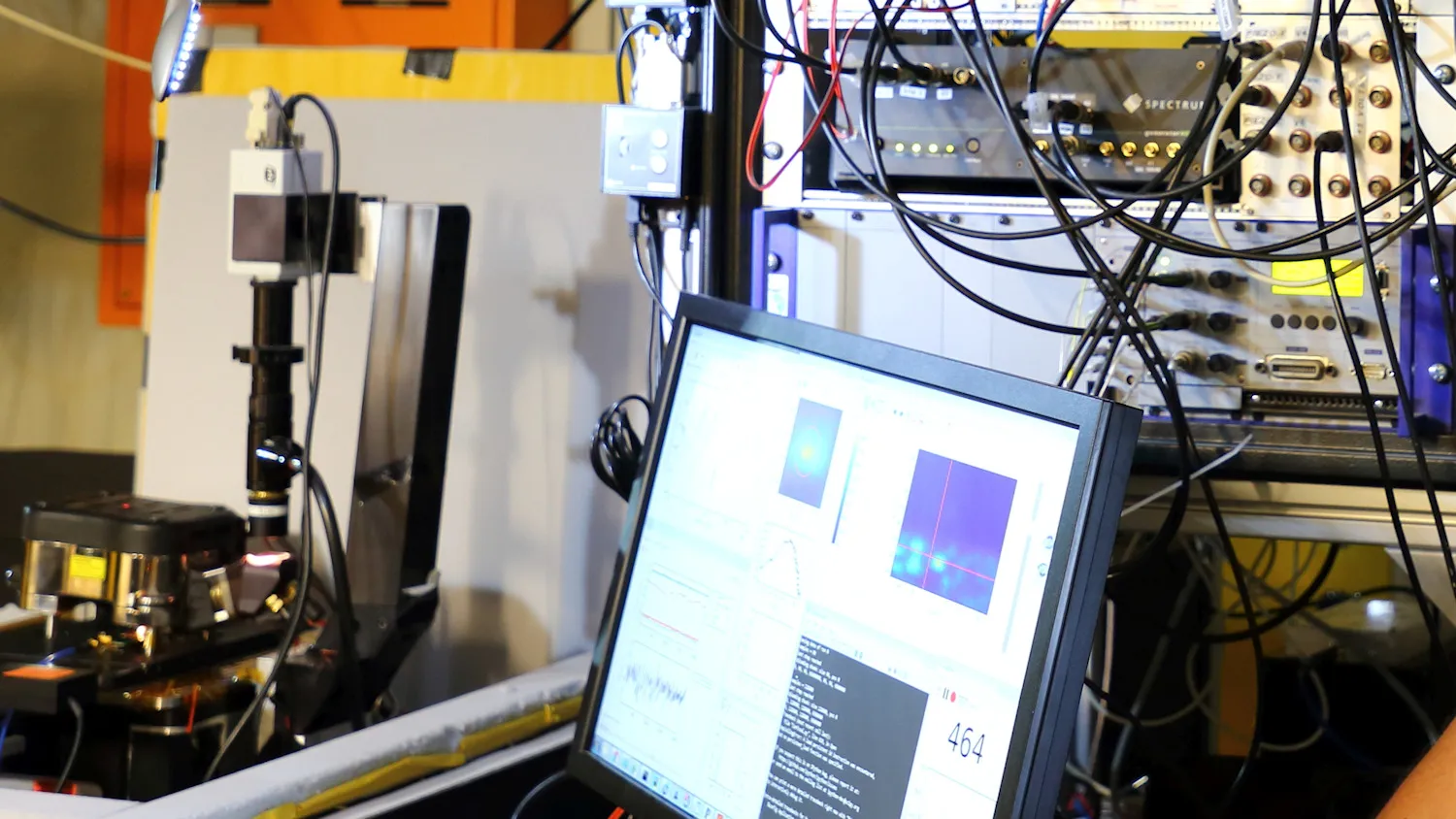
Spectrum's AWG controls physics experiment on single atoms at Stuttgart university
The Stuttgart University has chosen a Spectrum Arbitrary Waveform Generator for their experiments in which single atoms in a diamond are replaced by nitrogen atoms. This method is a base for applications like a magnetic field detector at the atomic level or a qubit in a quantum computer.
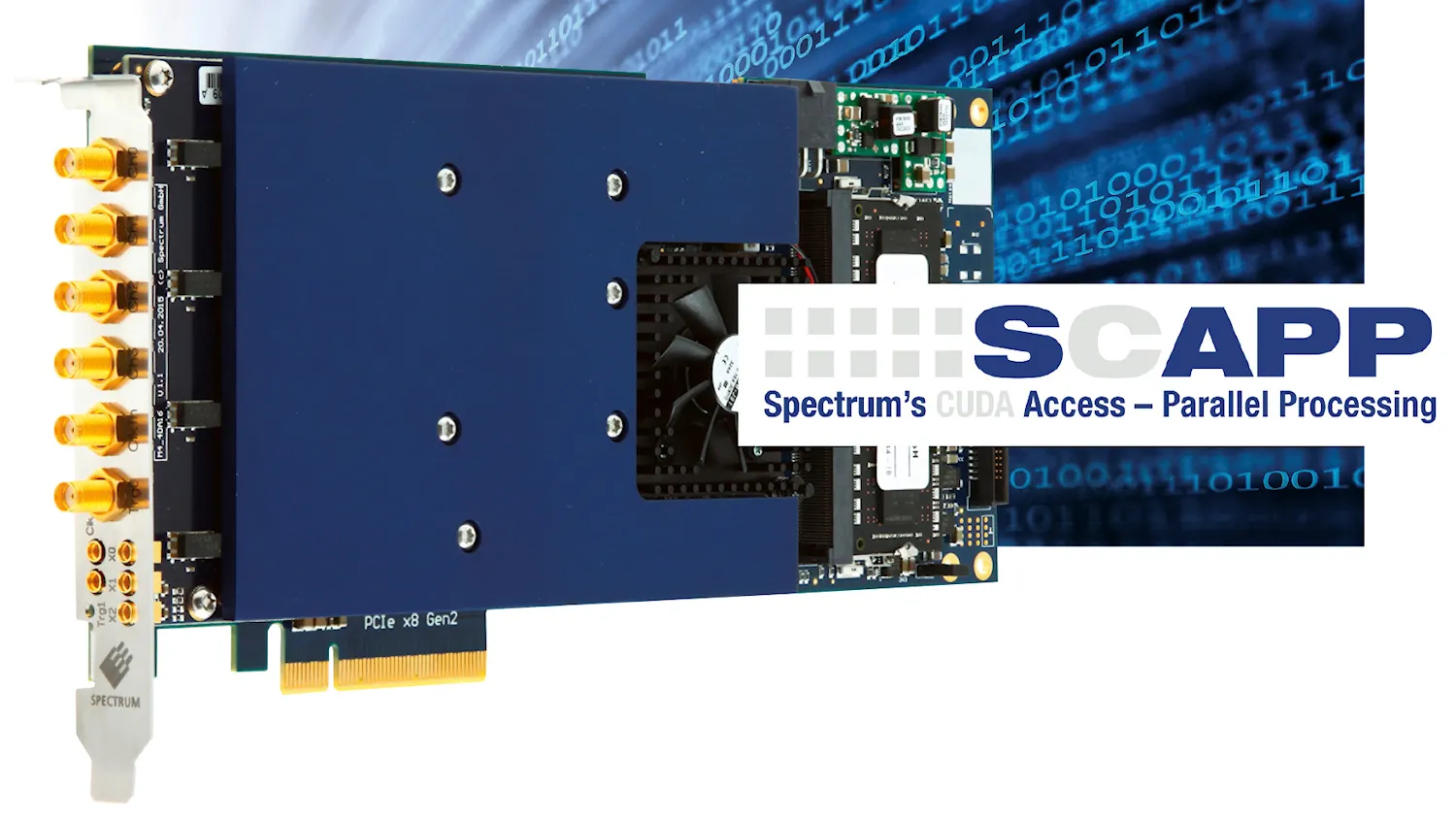
Digitizers allow fast and easy signal processing on GPUs with the new SCAPP option
Currently digitizers have a bottleneck caused by having to use either the host PC’s central processor with 8 or 16 cores or a FPGA that is complex to program. Spectrum Instrumentation has solved this problem with its new SCAPP software option – the Spectrum CUDA Access for Parallel Processing – that opens an easy-to-use yet extremely powerful way to digitize, process and analyze electronic signals. SCAPP allows a CUDA-based Graphical Processing Unit (GPU) to be used directly between any Spectrum digitizer and the PC. The big advantage is that data is passed directly from the digitizer to the GPU where high-speed parallel processing is possible using the GPU board’s multiple (up to 5000) processing cores. That provides a significant performance enhancement when compared to sending data directly to a PC that may have only 8 or 16 cores. It becomes even more important when signals are being digitized at high-speeds such as 50 MS/s, 500 MS/s or even 5 GS/s.
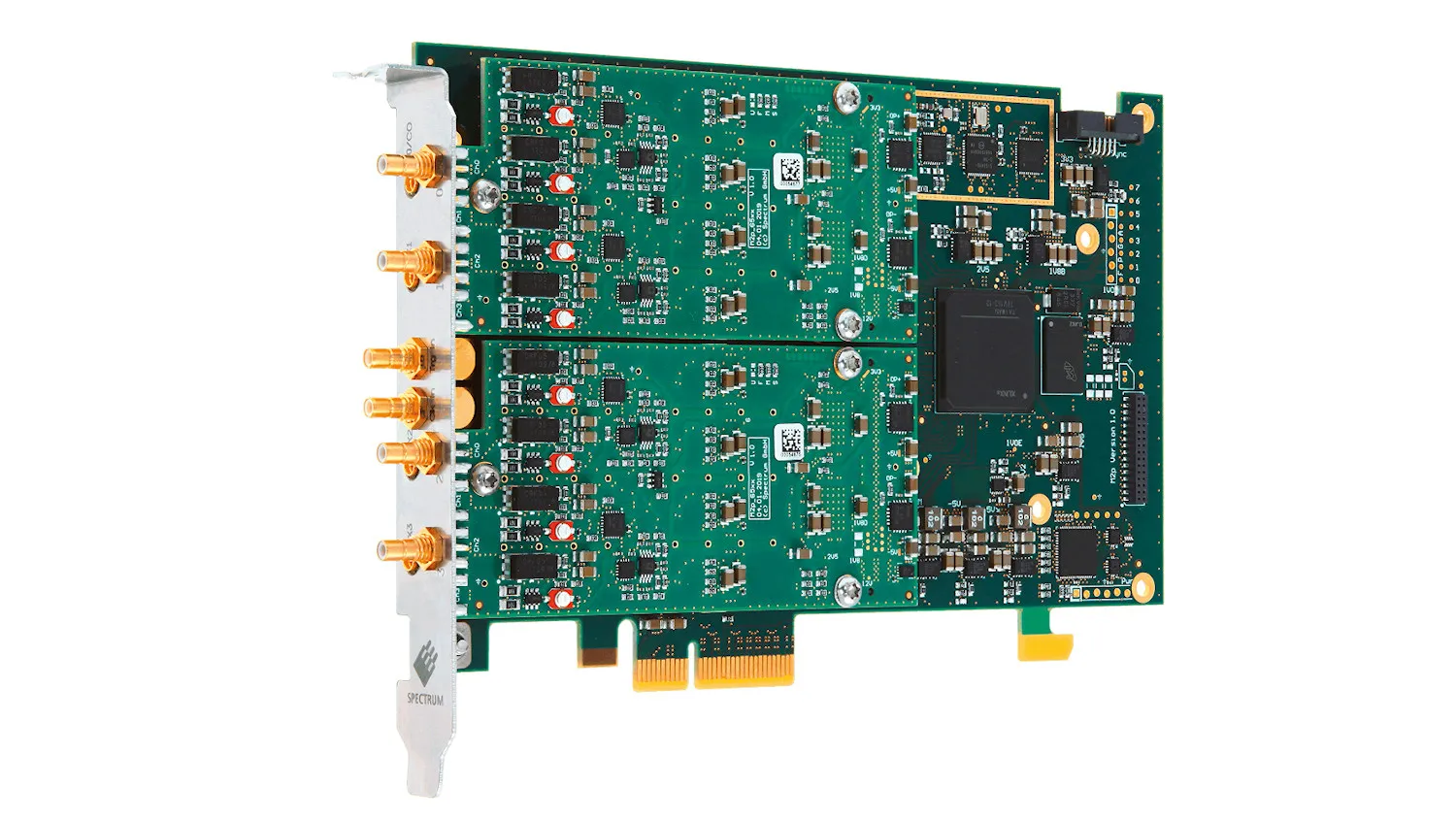
Spectrum's next generation of 16-bit digitizers - smaller, faster, better
Spectrum Instrumentation announces the first products of a completely new designed digitizer card series. It consists of the new platform-board M2p, which will be the PCIe base for all upcoming products for the next years. The other part is the new 59xx module, which will be available in many variations. M2p platform and 59xx module form 13 different new digitizer cards with lots of options regarding speed and channels.
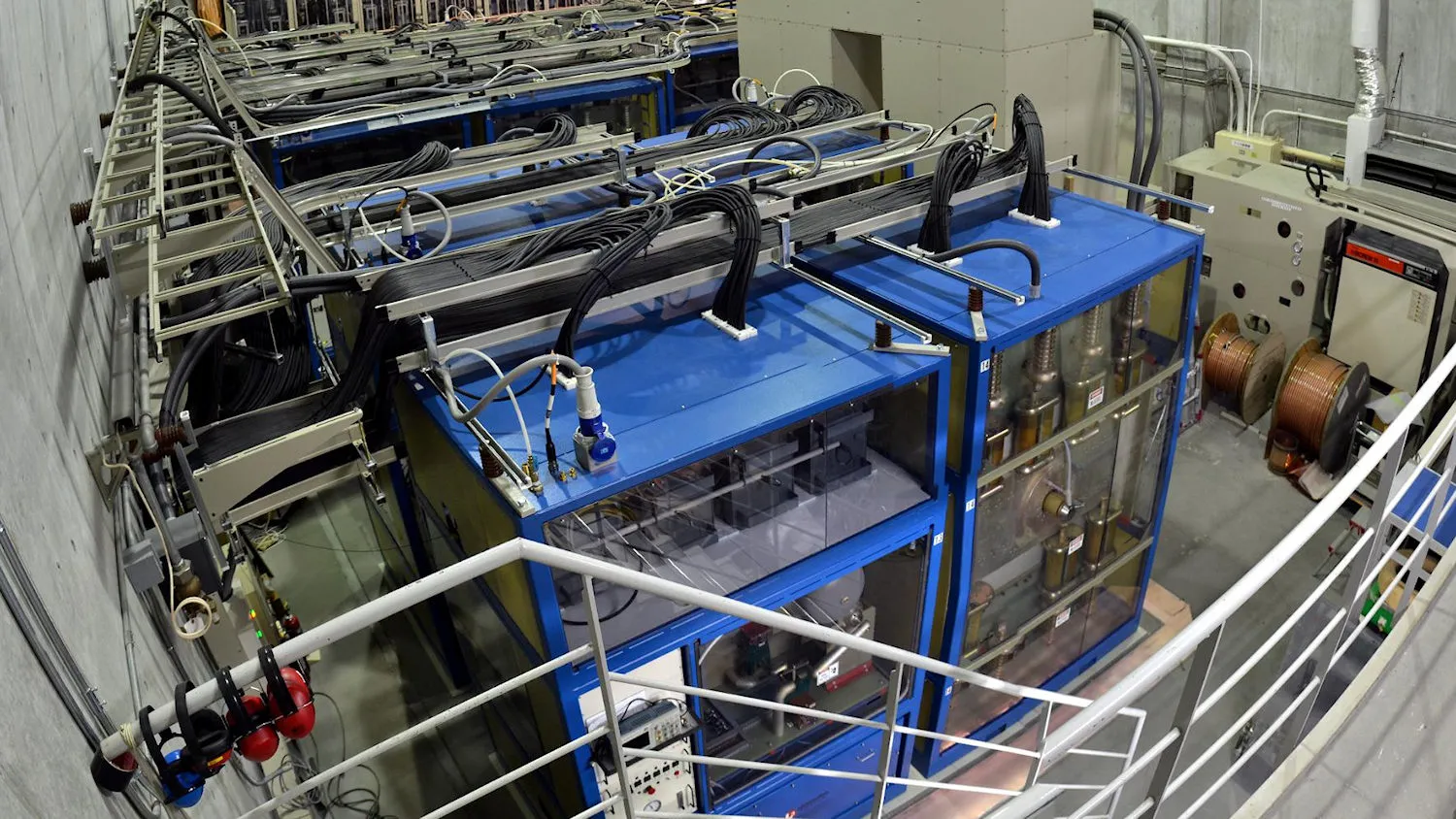
Spectrum's digitizer is key for world's highest indoor magnetic field at university of Tokyo
The International MegaGauss Science Laboratory, part of the Institute Solid State Physics (ISSP) at the University of Tokyo, is attempting to set a new world record for the highest ever, indoor magnetic field. To do this, the ISSP needed to improve the precision of the firing processes with sub-nanosecond measurements and has installed a Spectrum Instrumentation digitizer to achieve this. The fields are used to study the physical properties of solid-state materials as they are subjected to ultra-high magnetic fields and researching new materials and controlling their phase and functionality. The laboratory’s pulse magnets can currently generate up to 87 Tesla (T) by non-destructive methods, and from 100 T up to 760 T (currently the world record for the strongest field generated indoors) by a destructive process.
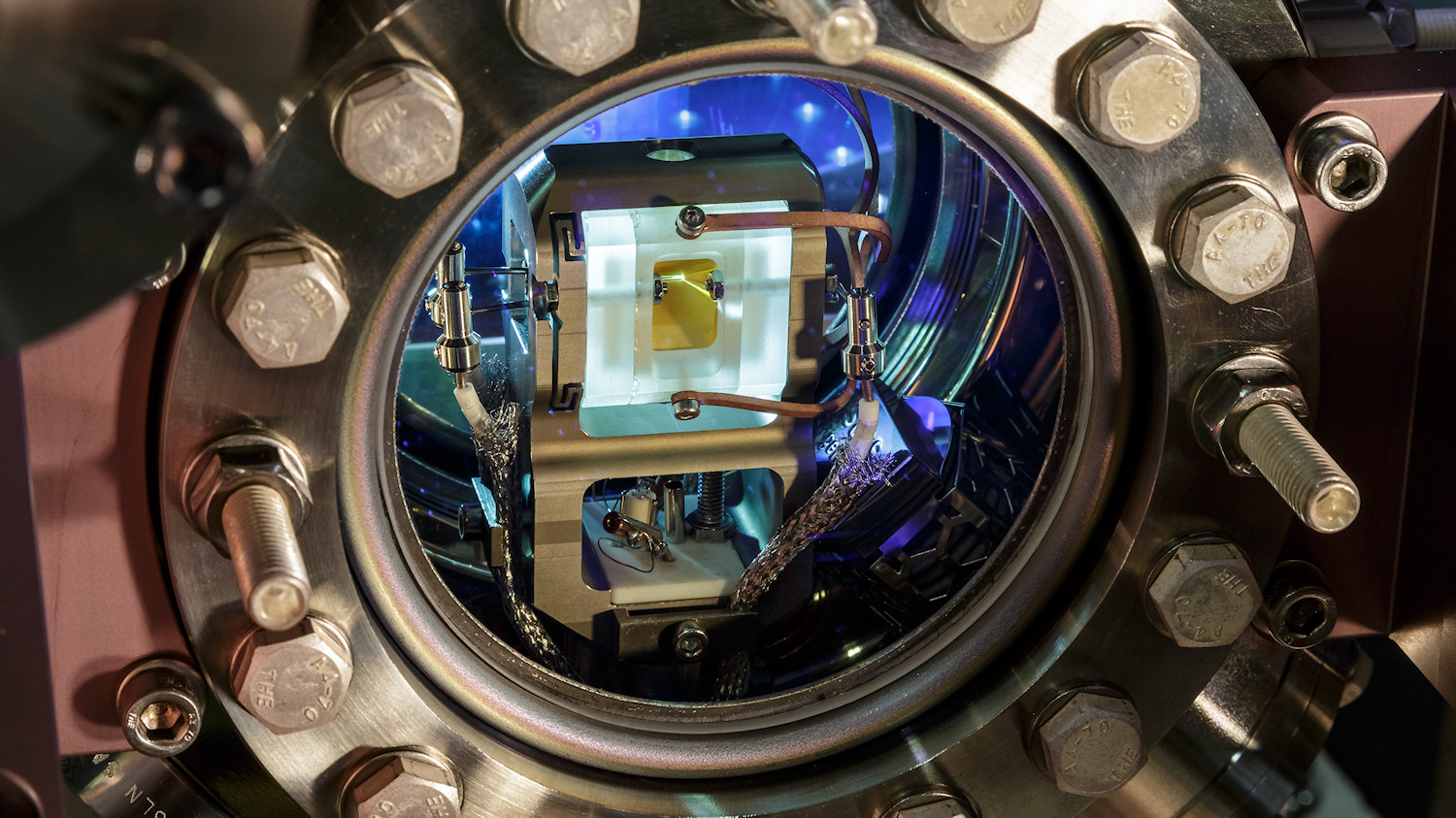
AWG precise enough for Quantum research
The Institute for Quantum Optics and Quantum Information at the University of Innsbruck, Austria has chosen a Spectrum Arbitrary Waveform Generator (AWG) to generate a wide variety of signals for their research. Because of the variety of experiments that it would be used for, it was important to have an AWG that is easy to program using a PC so that the output could be easily customised to each use. A Spectrum Instrumentation M4i.6631-x8 was selected because, being on a PCI Express card, it could be incorporated into the PC and directly driven by it.
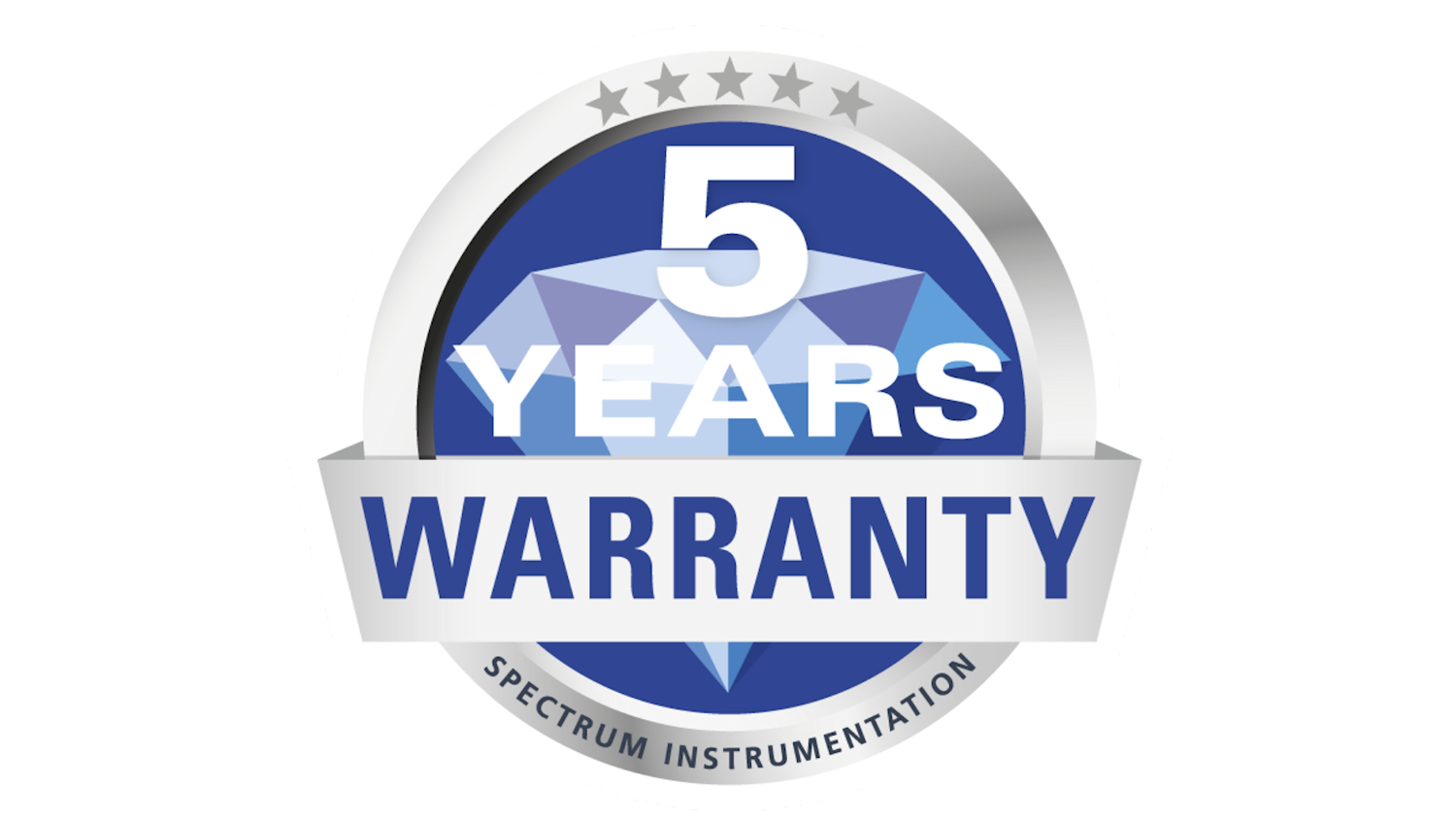
Spectrum Instrumentation announces industry-leading, five-year warranty
Spectrum Instrumentation, the pioneer of perfect fit solutions, has announced that it has extended its product warranty from two years to an industry-leading five years. “This is significantly better than any of our competition and reflects the extremely high level of quality that we build into our products that enables us to provide a 5 years warranty,” explained Gisela Hassler, Spectrum Instrumentation’s CEO.
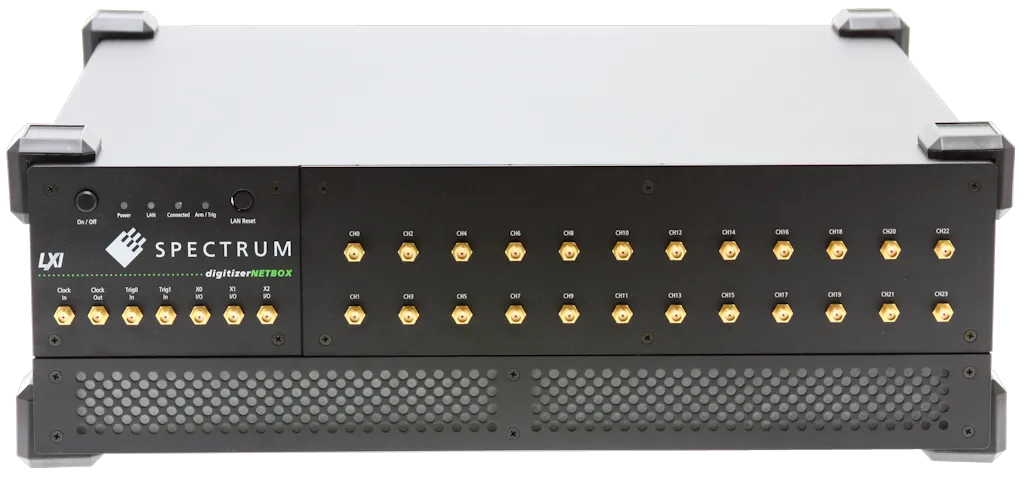
LXI digitizers for multi-channel high-frequency signal capture and analysis
Multi-channel high-frequency signal acquisition and analysis has become much easier with the release of the DN6.22x series of LXI digitizers from Spectrum GmbH. The new series extends the company’s lineup of popular digitizerNETBOX products by adding eight models that feature high-channel count, fast sampling rates and wide bandwidth.
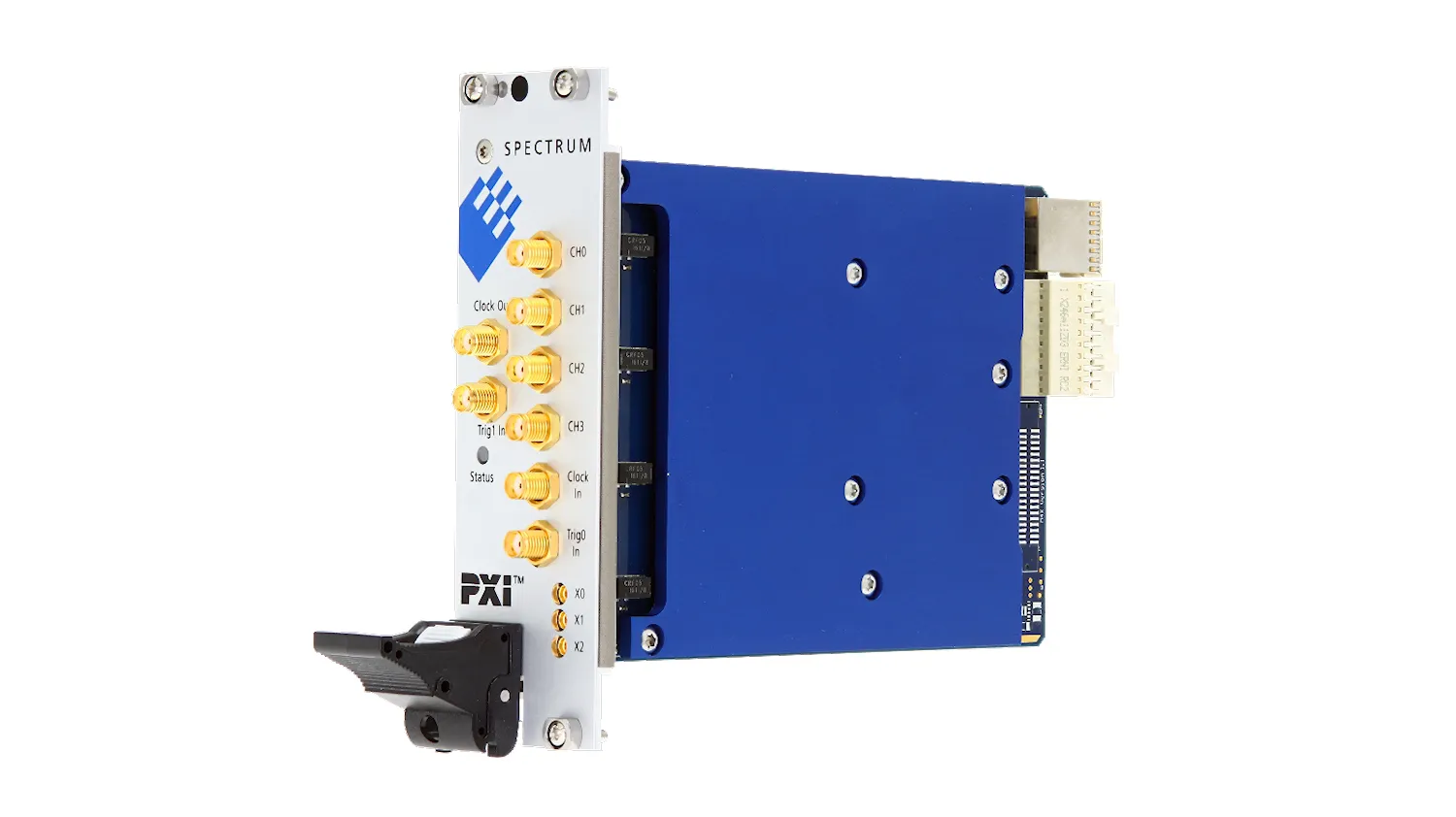
PXIe modules allow precision signal generation
Spectrum’s M4x series of PXIe Arbitrary Waveform Generators (AWGs) offer a cost effective solution for automated testing applications that require fast and accurate electronic signal generation. Based on the modular PXIe instrumentation standard, the M4x series includes five new modules that provide one, two or four channels.
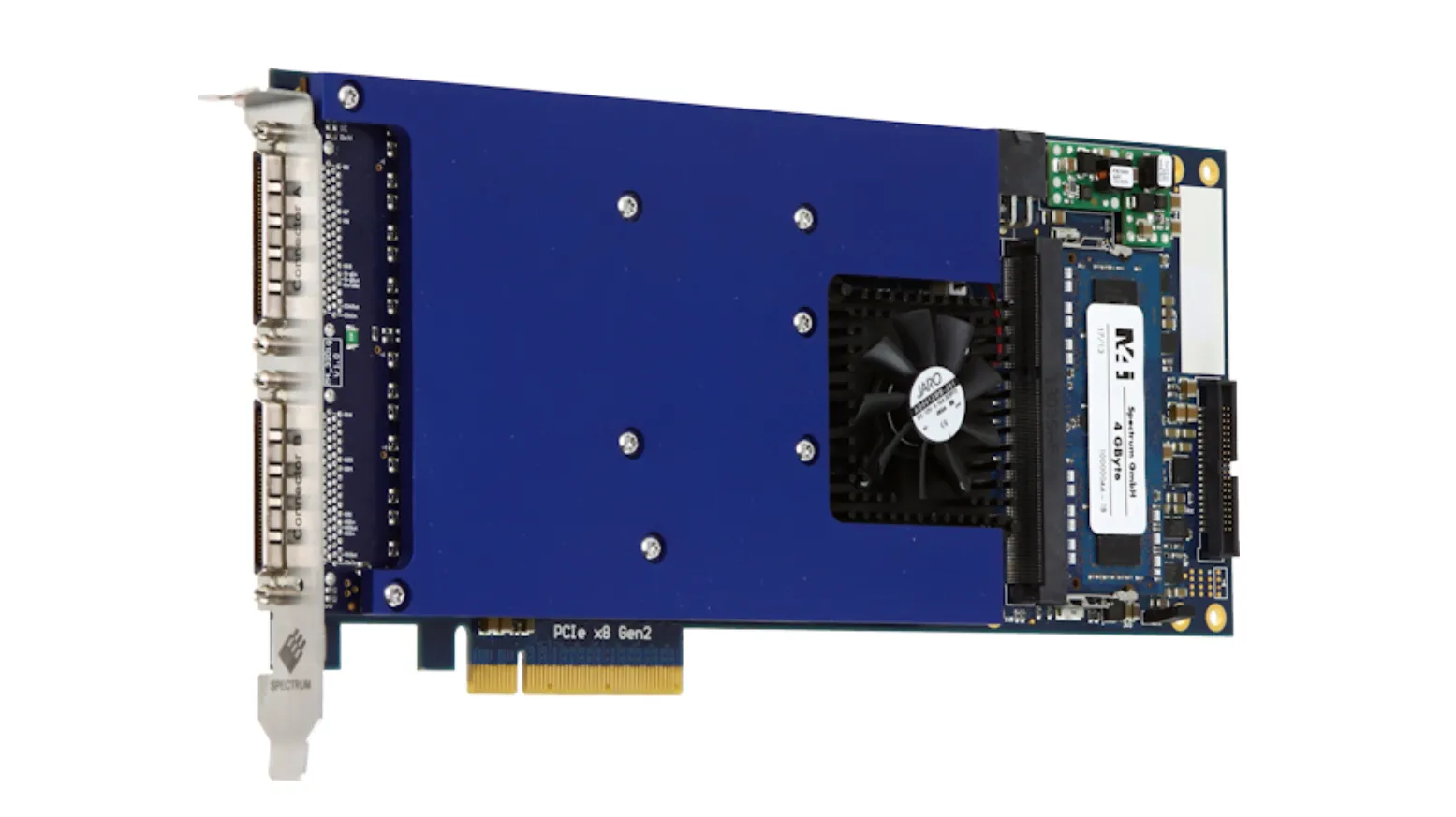
32 channel digital data acquisition card acquires up to 720 MBit/s rates
The Spectrum M4i.77xx series of Digital Data Acquisition cards represent a major performance breakthrough for test engineers who require high-speed digital data logging with multi-channel logic analysis over extended time periods. Based on Spectrum's proven M4i series PCI Express (PCIe) platform the cards are small and compact. Each card comes equipped with 32 fully synchronous channels, large 4 GB on-board memory and a PCI Express x8 Gen 2 interface that offers outstanding data streaming performance.